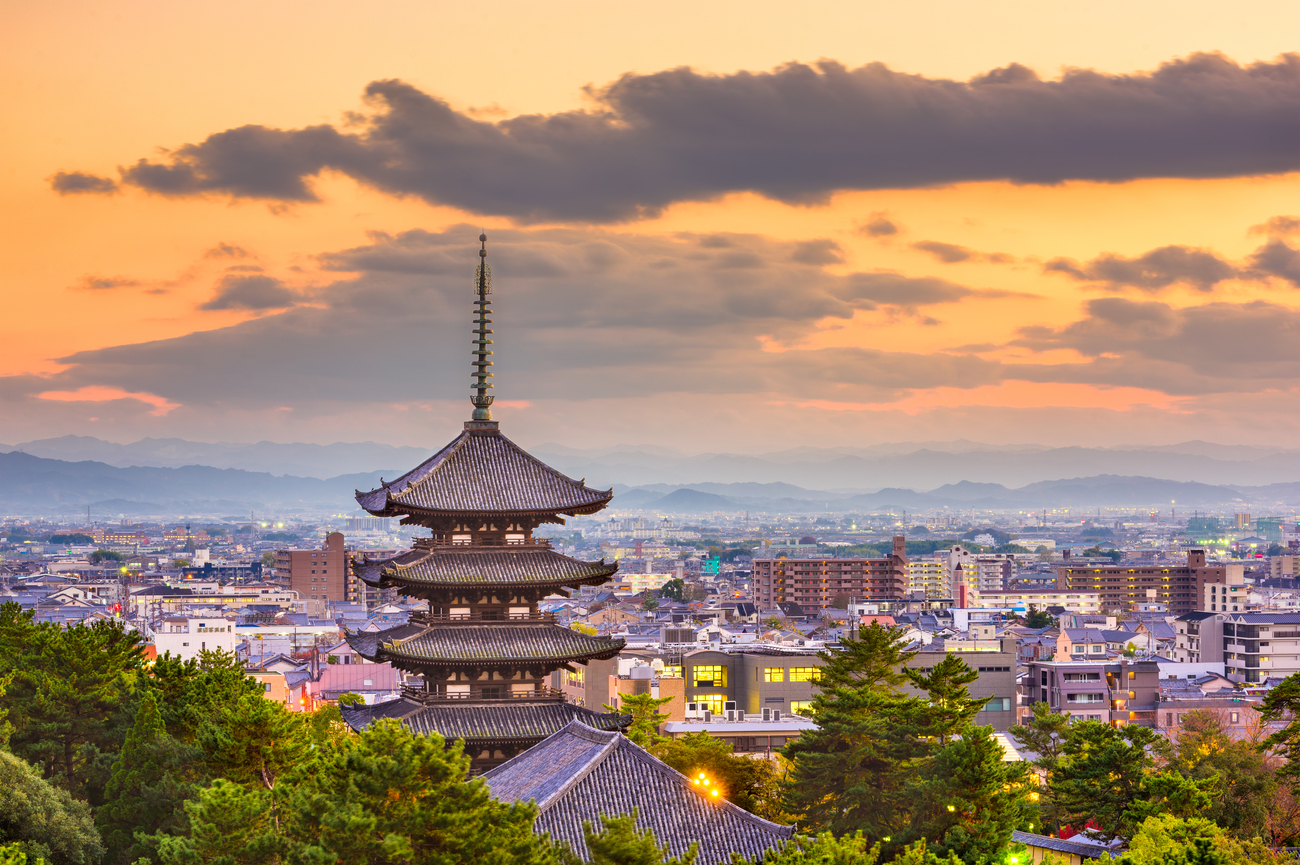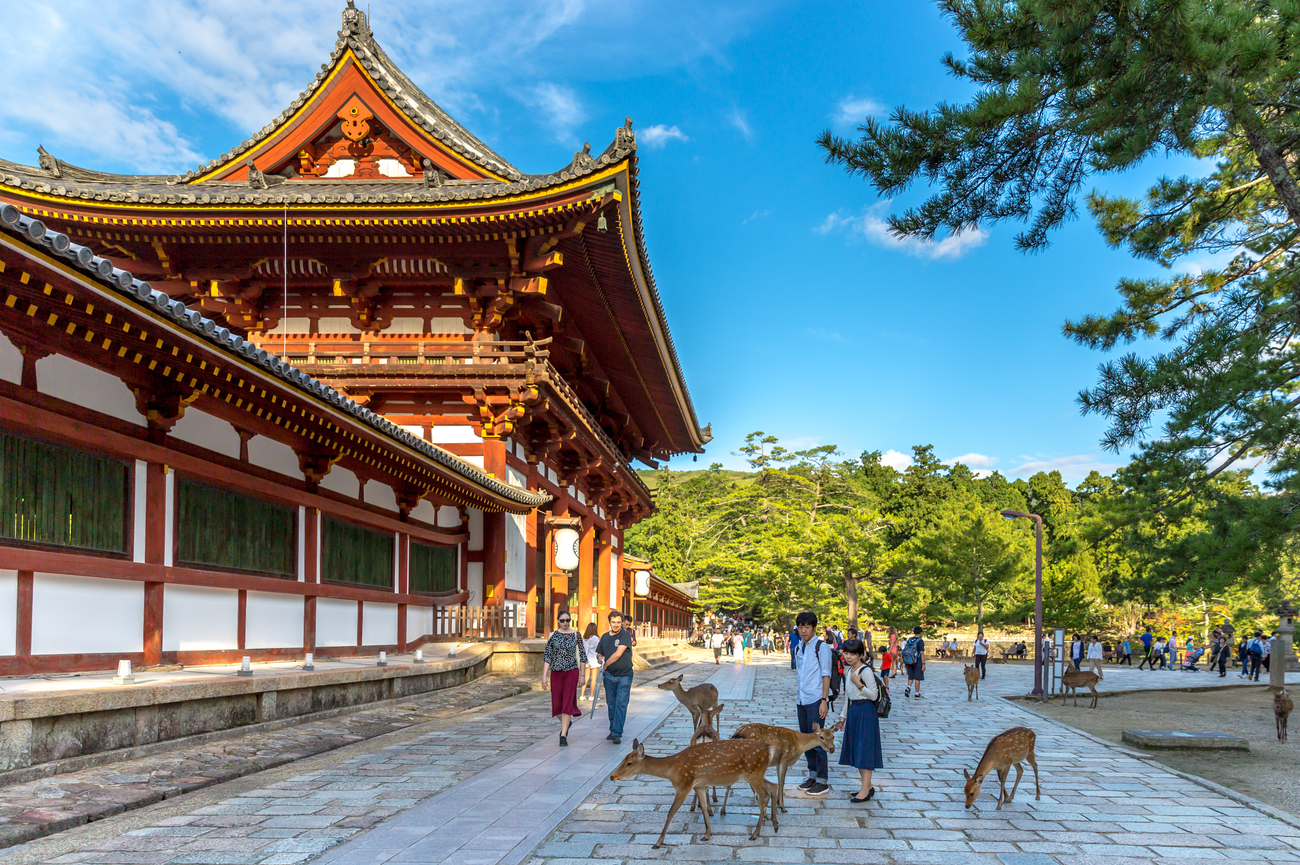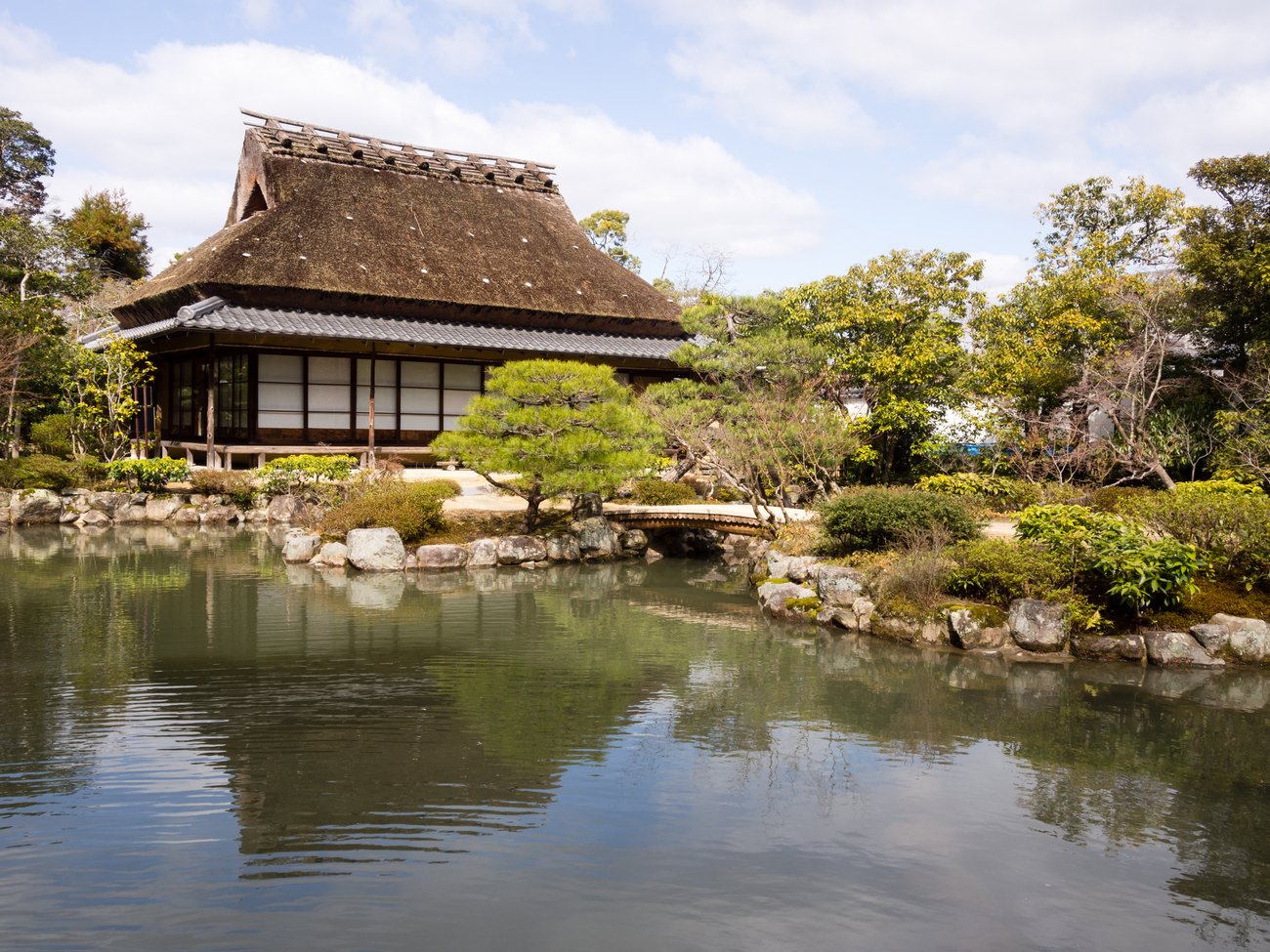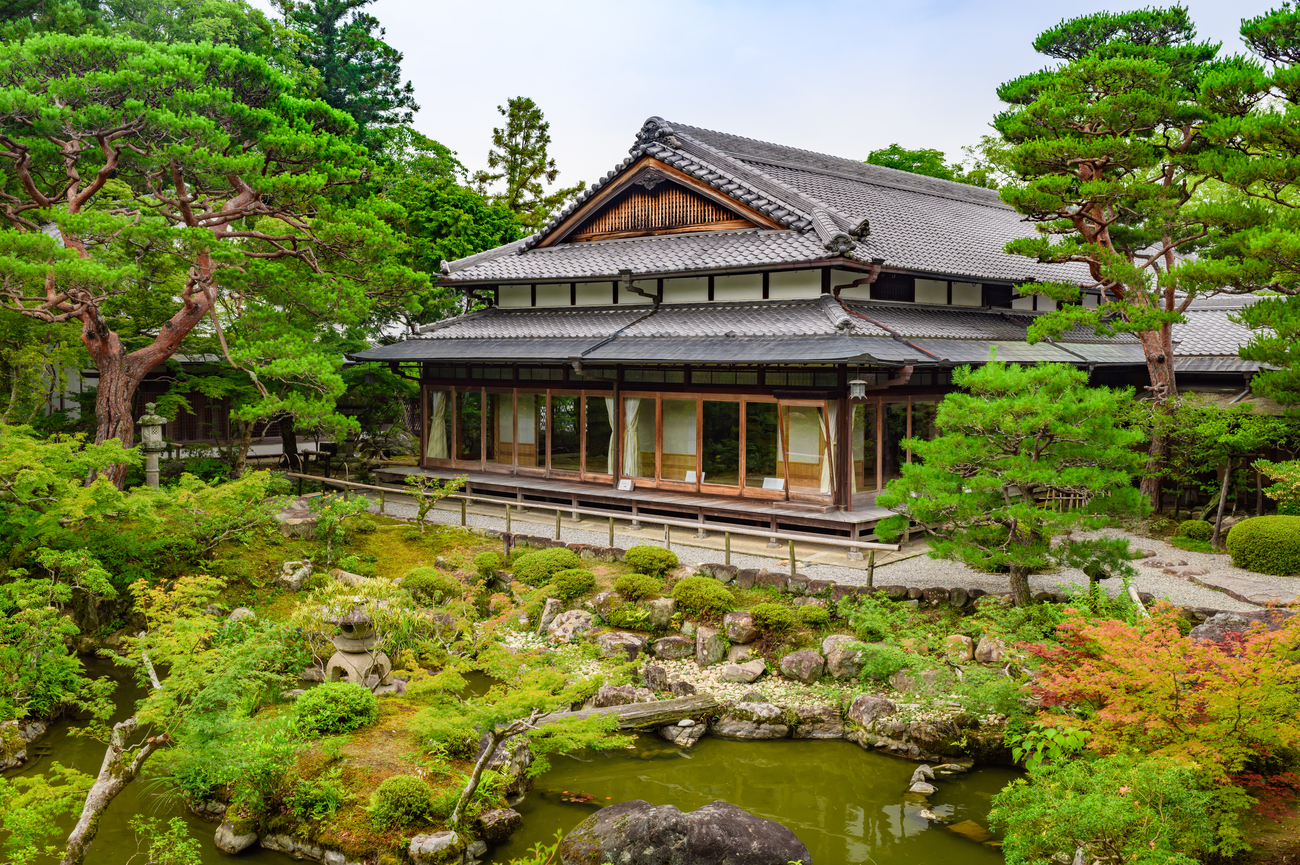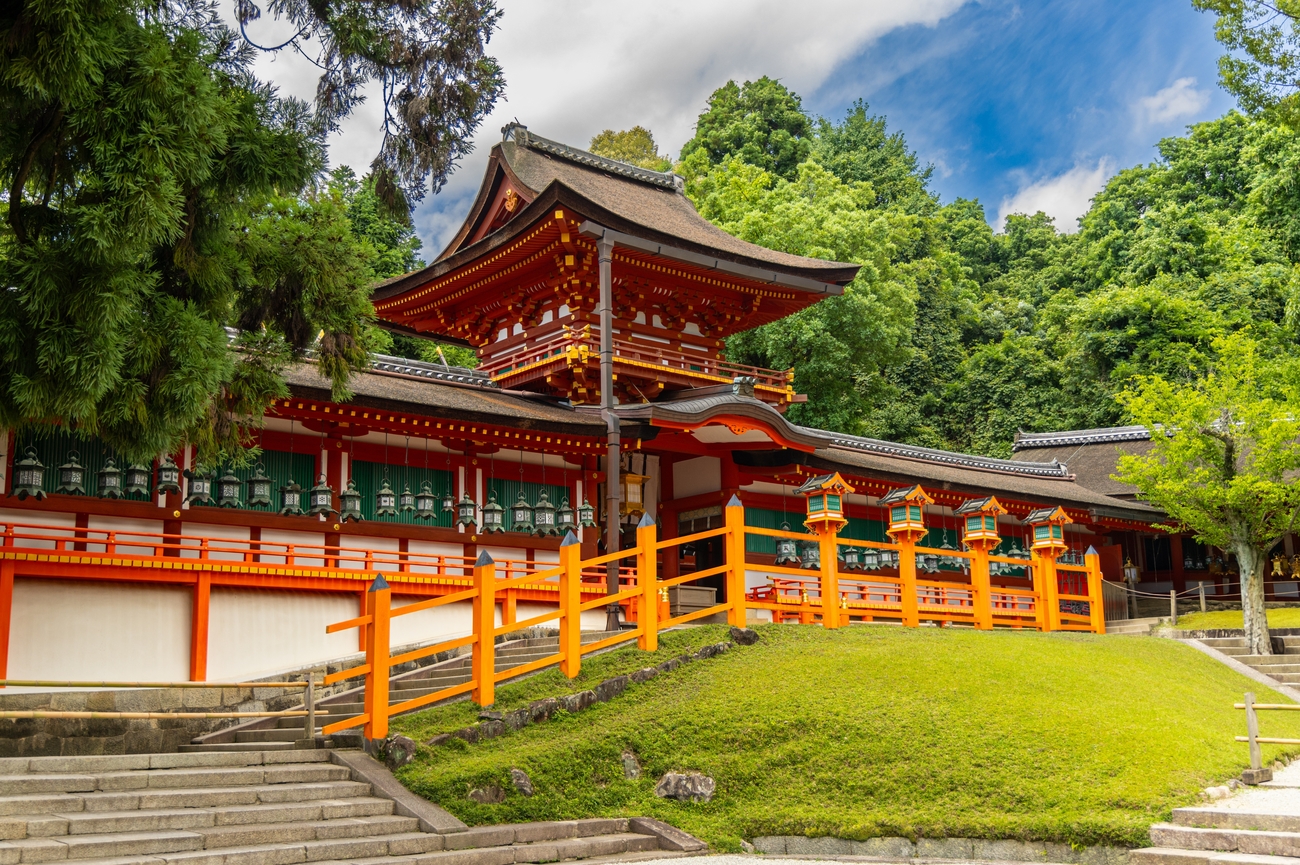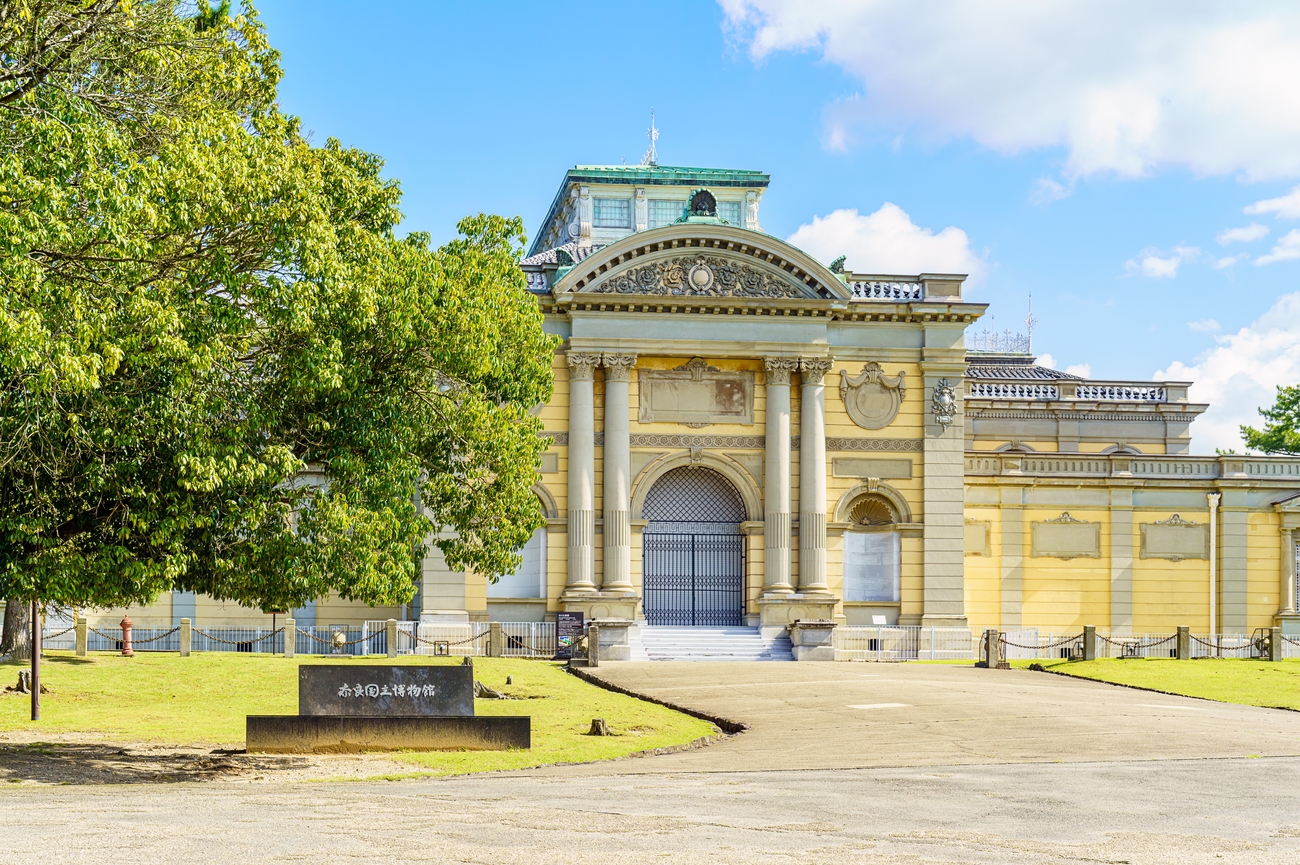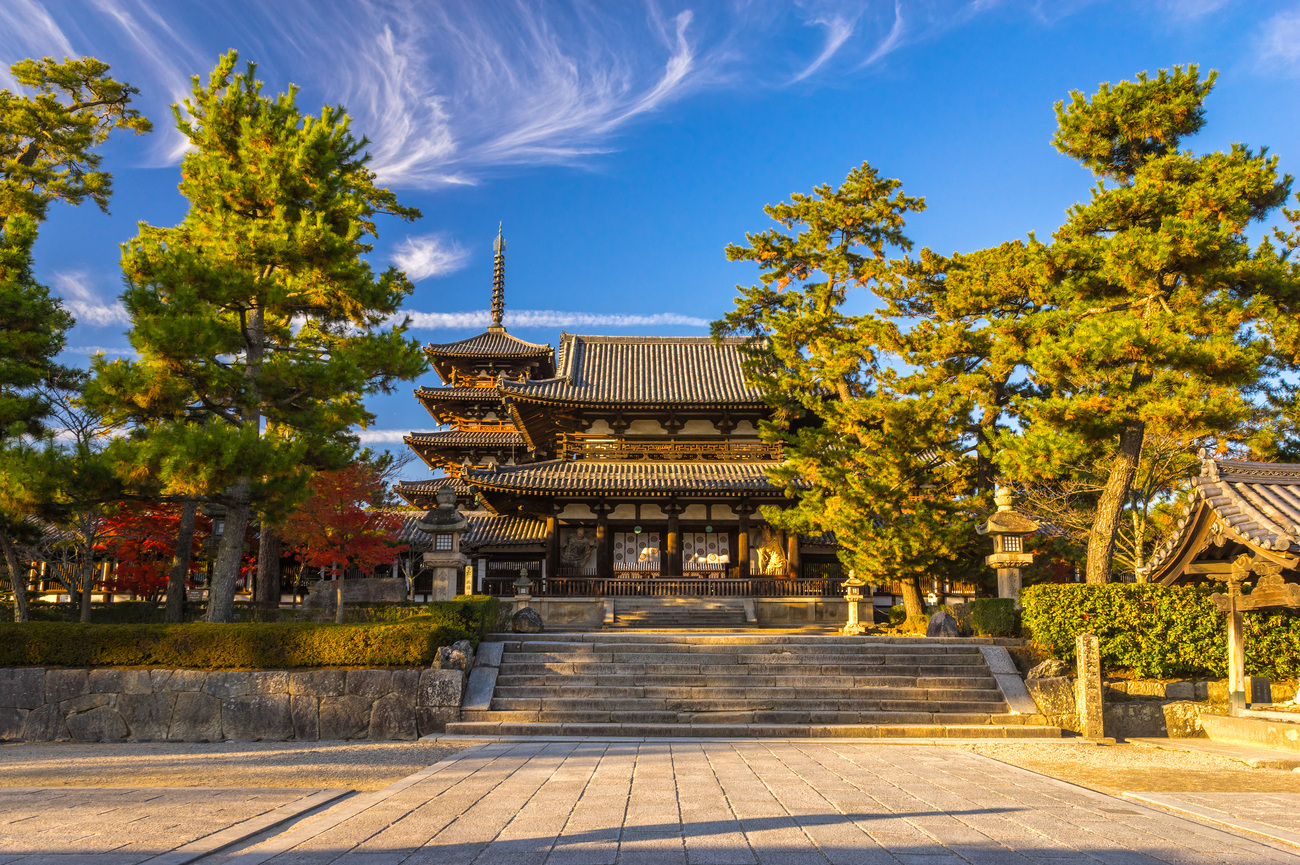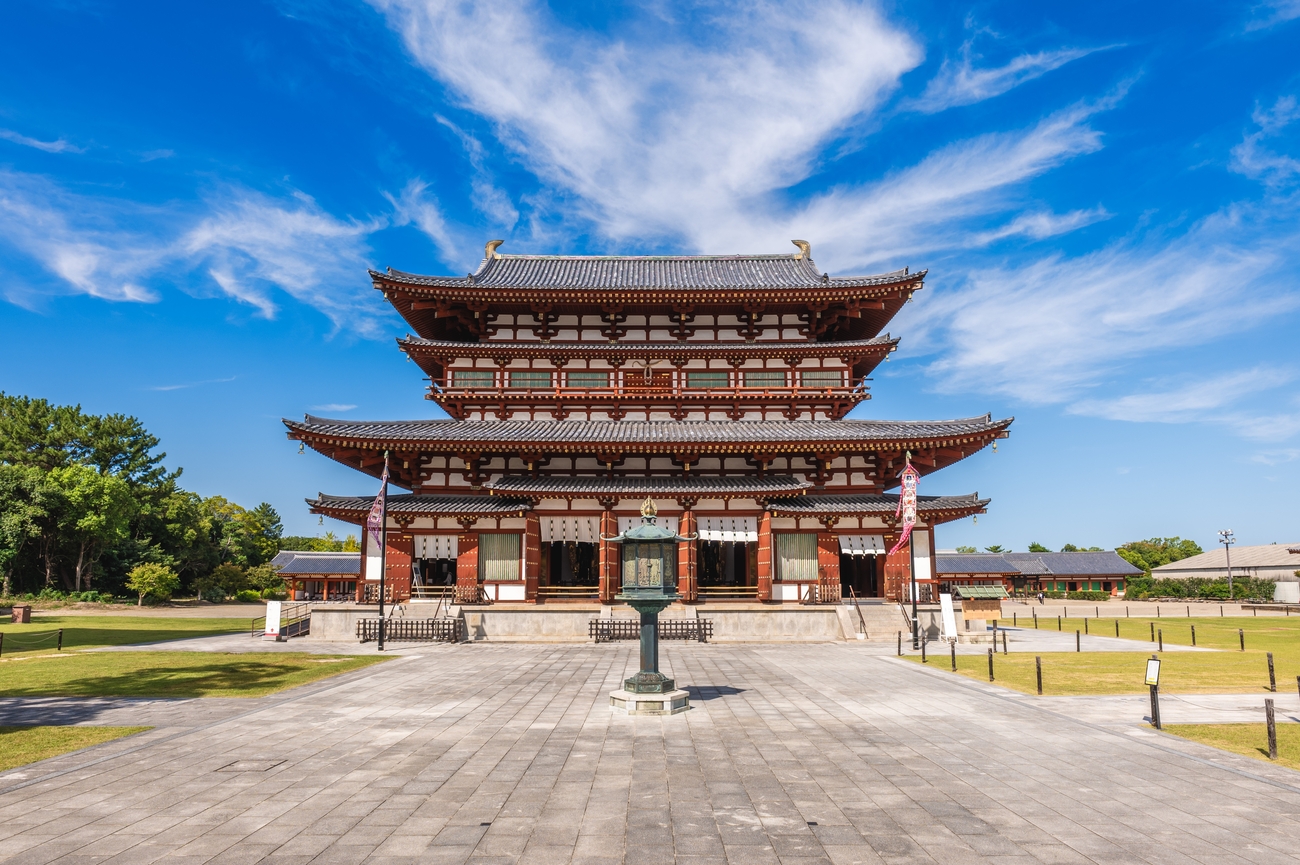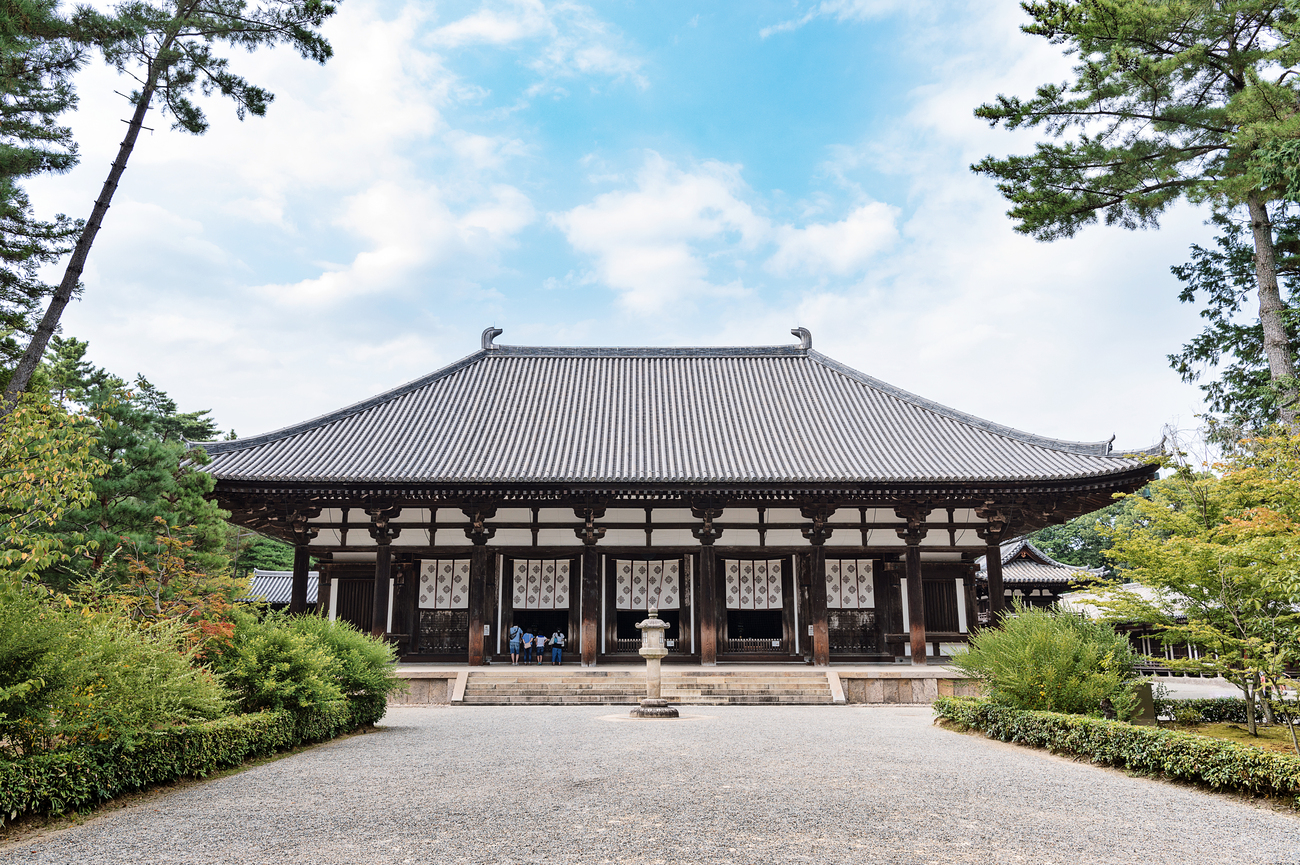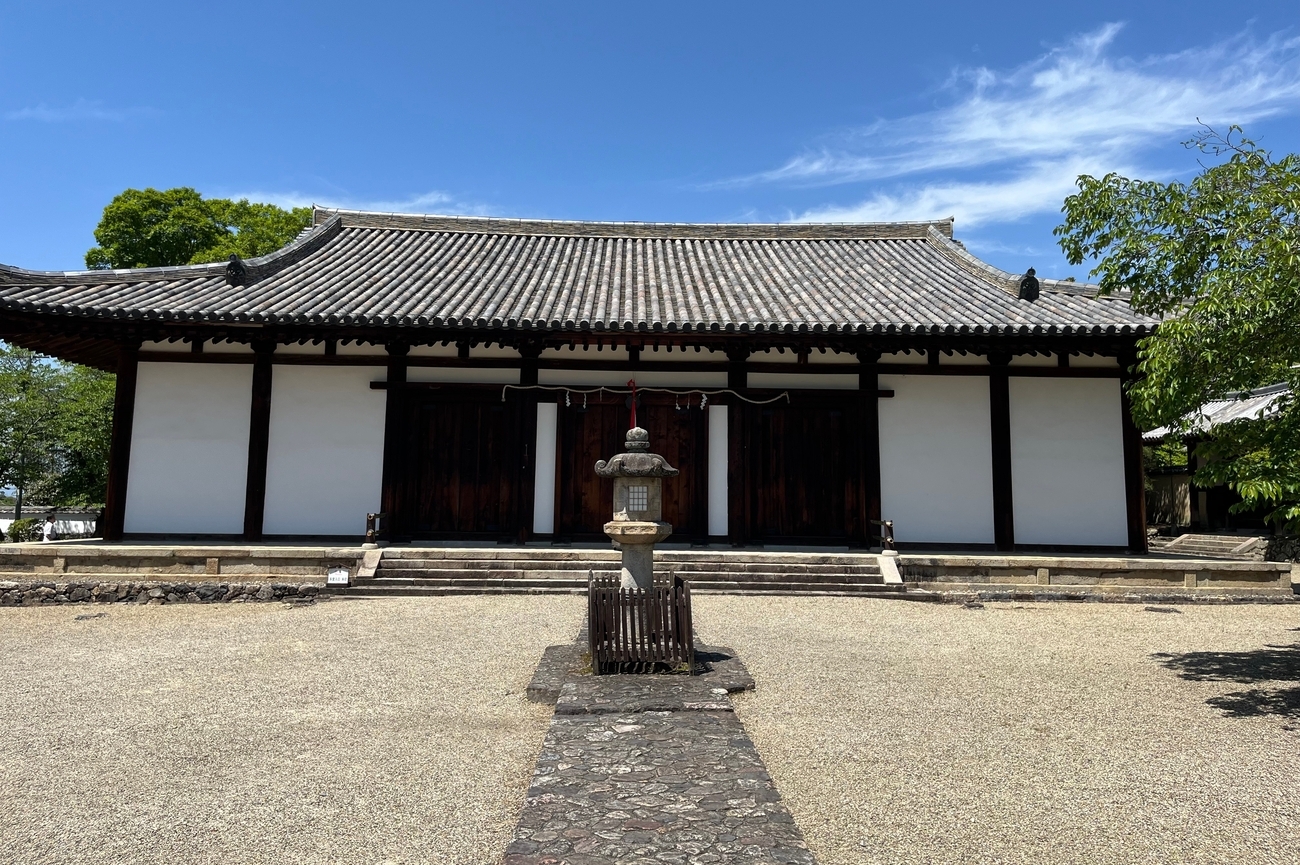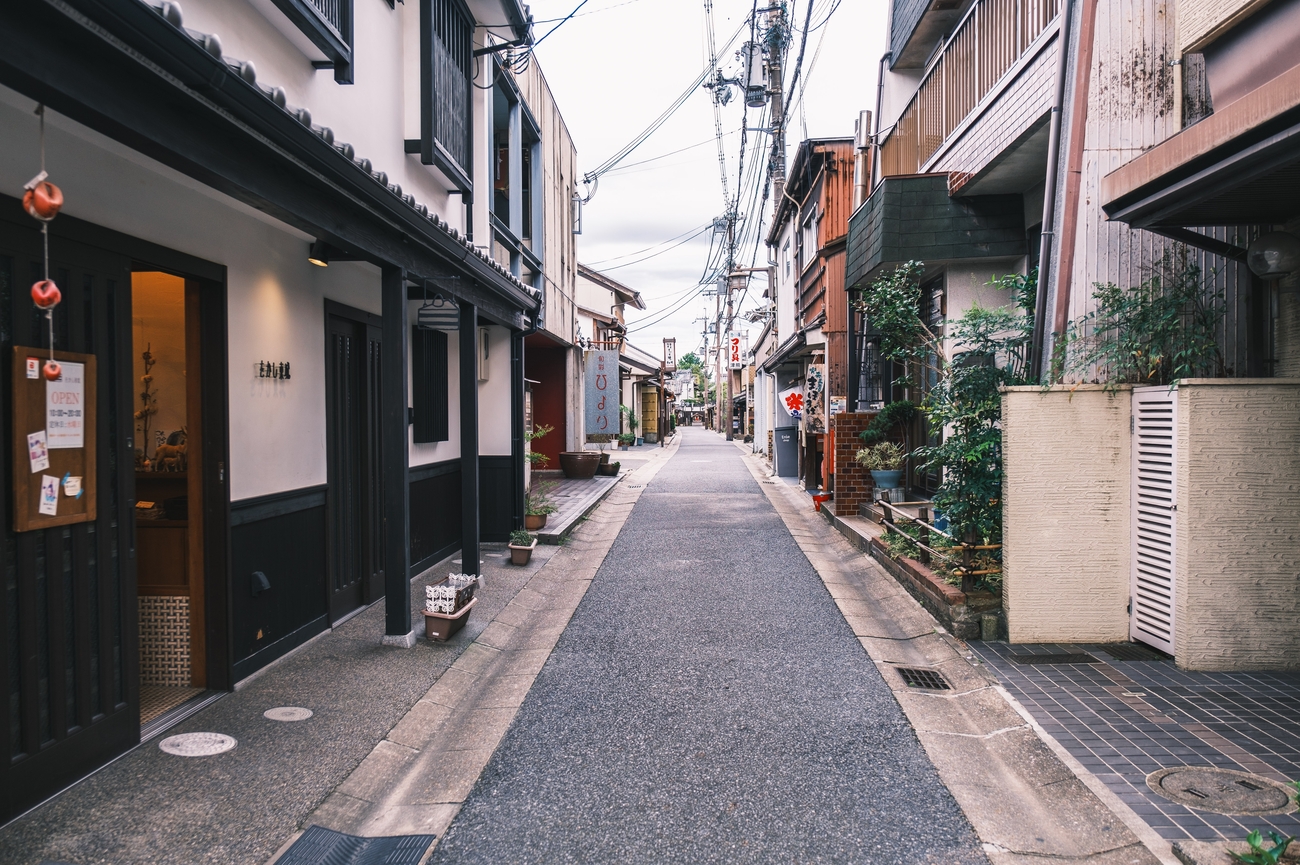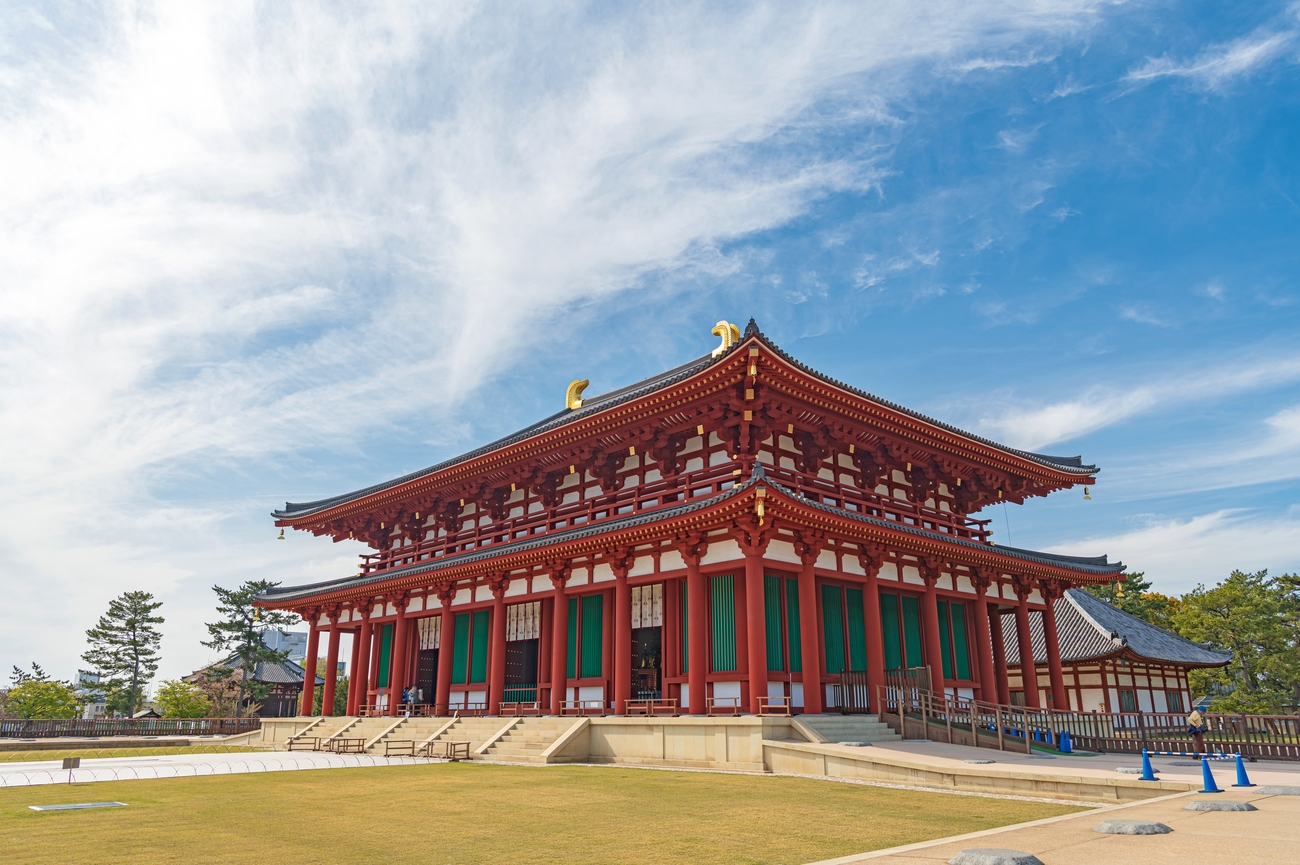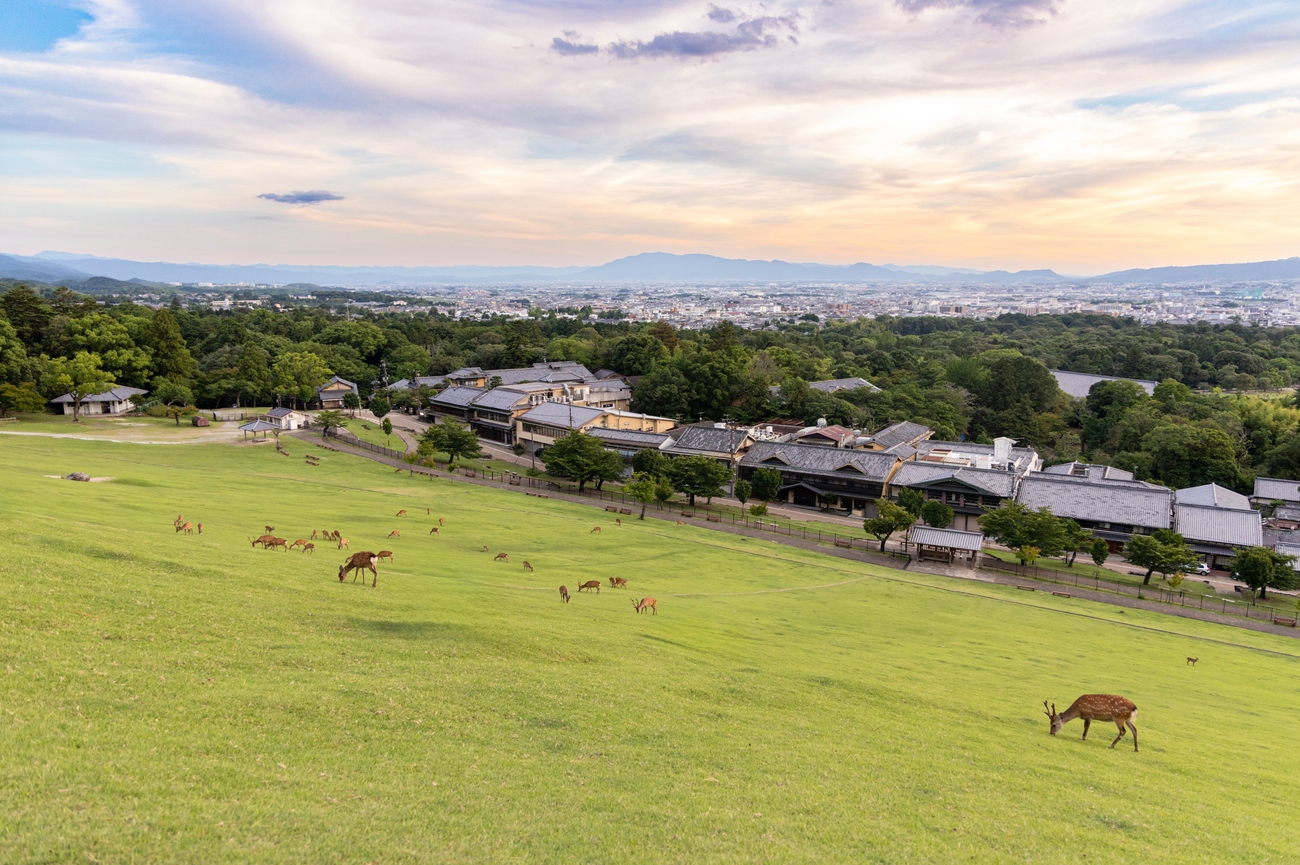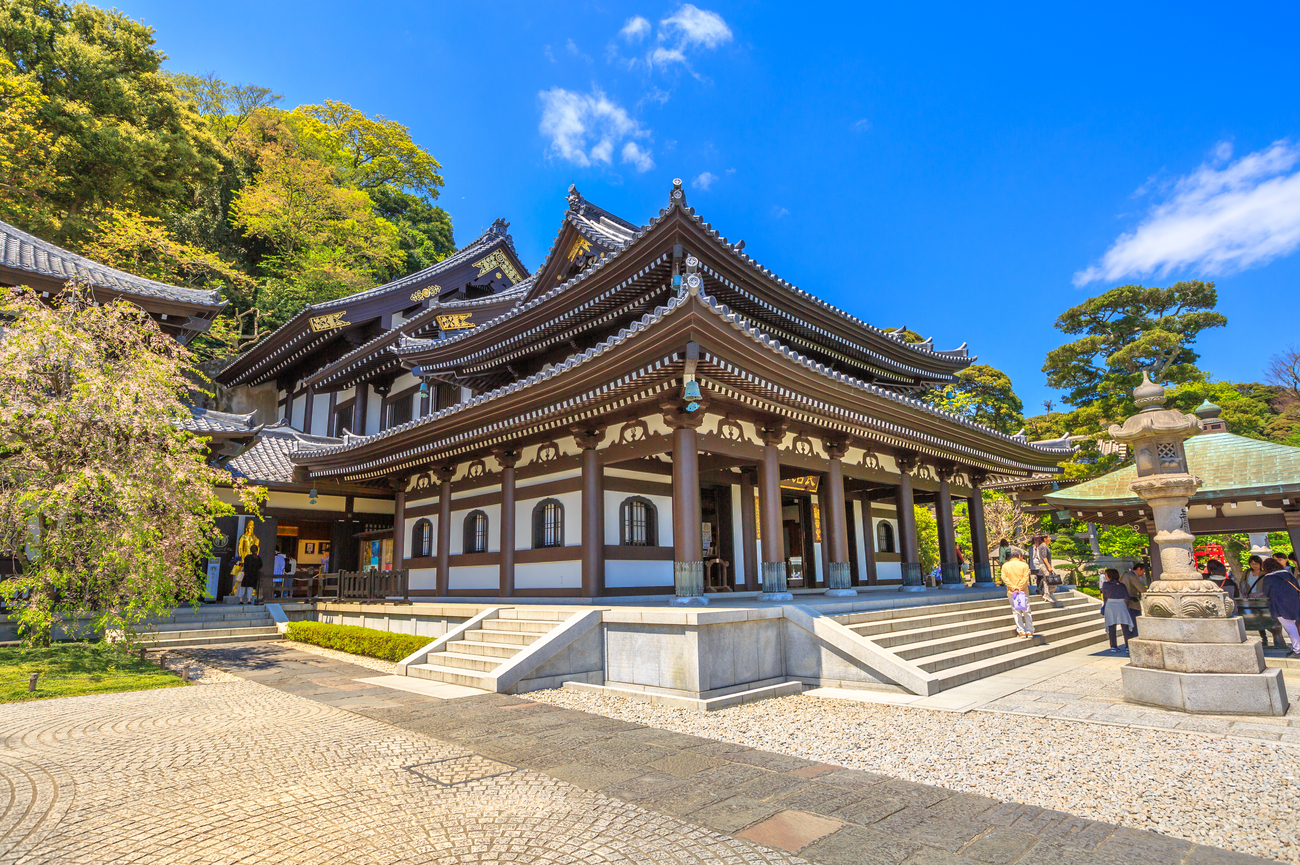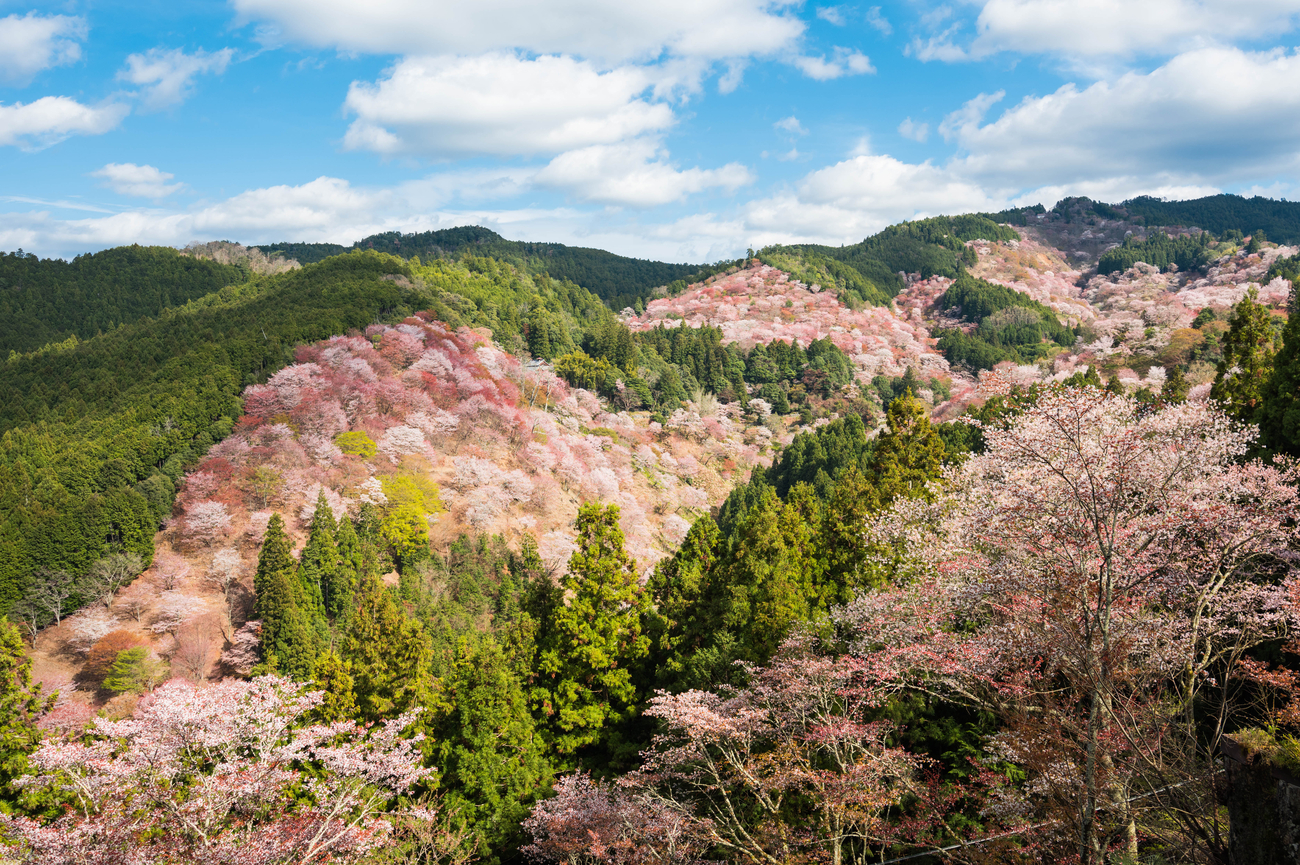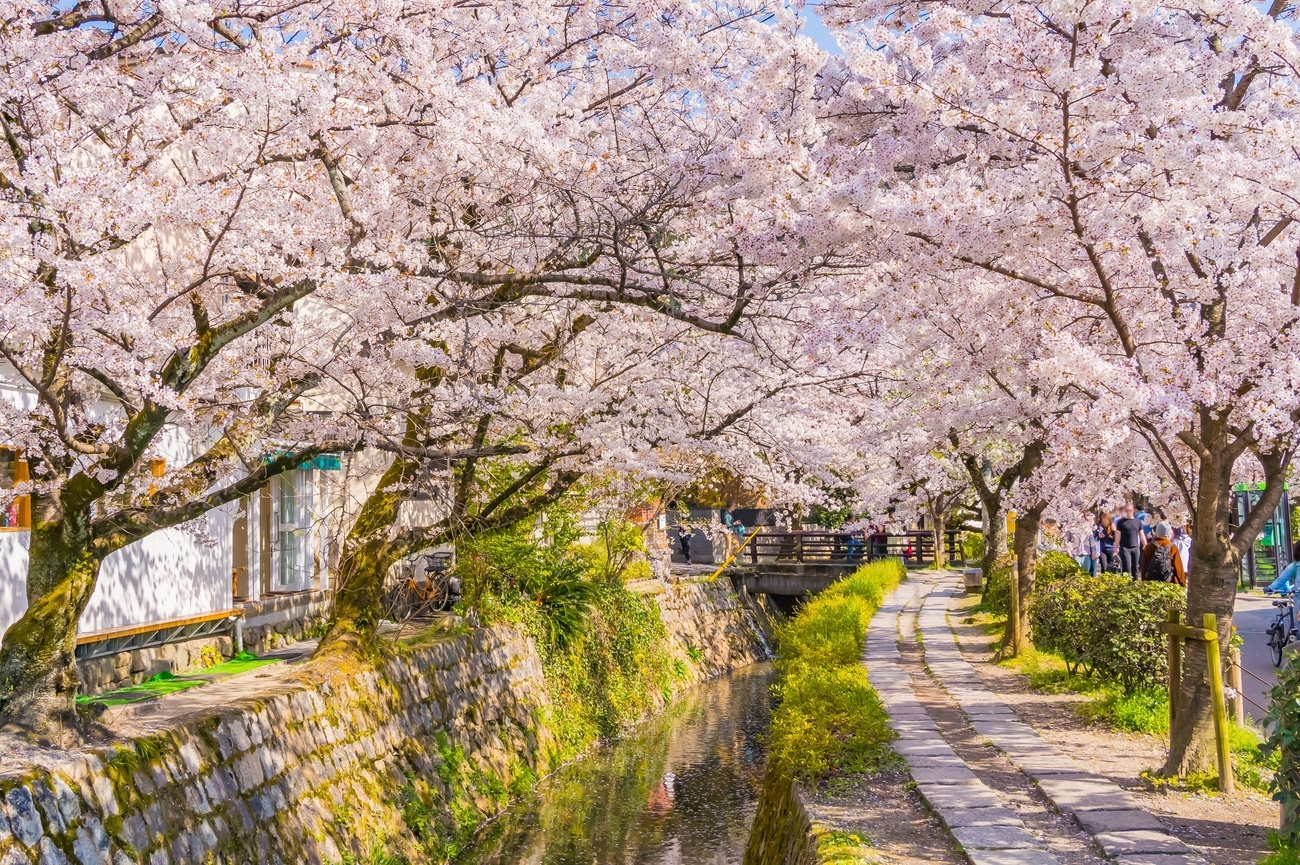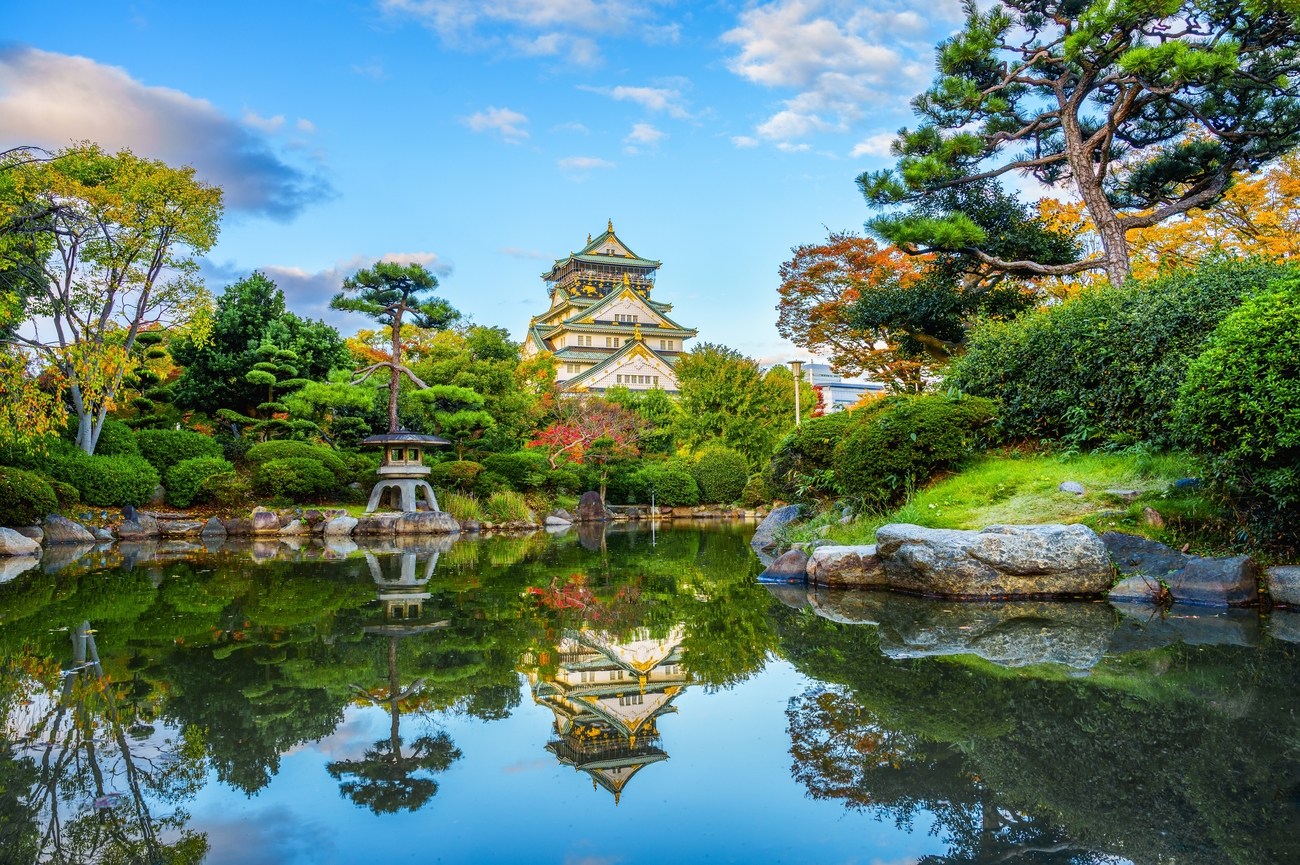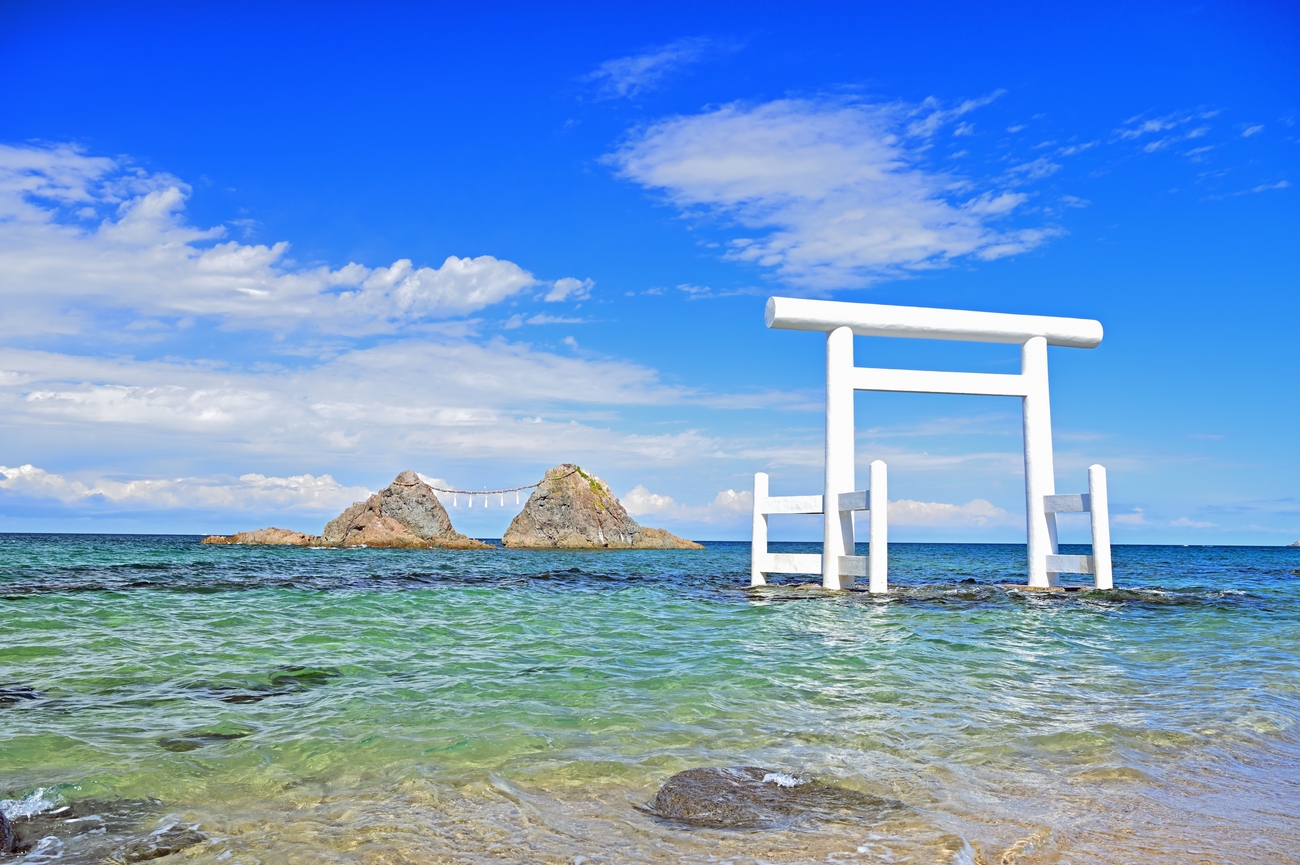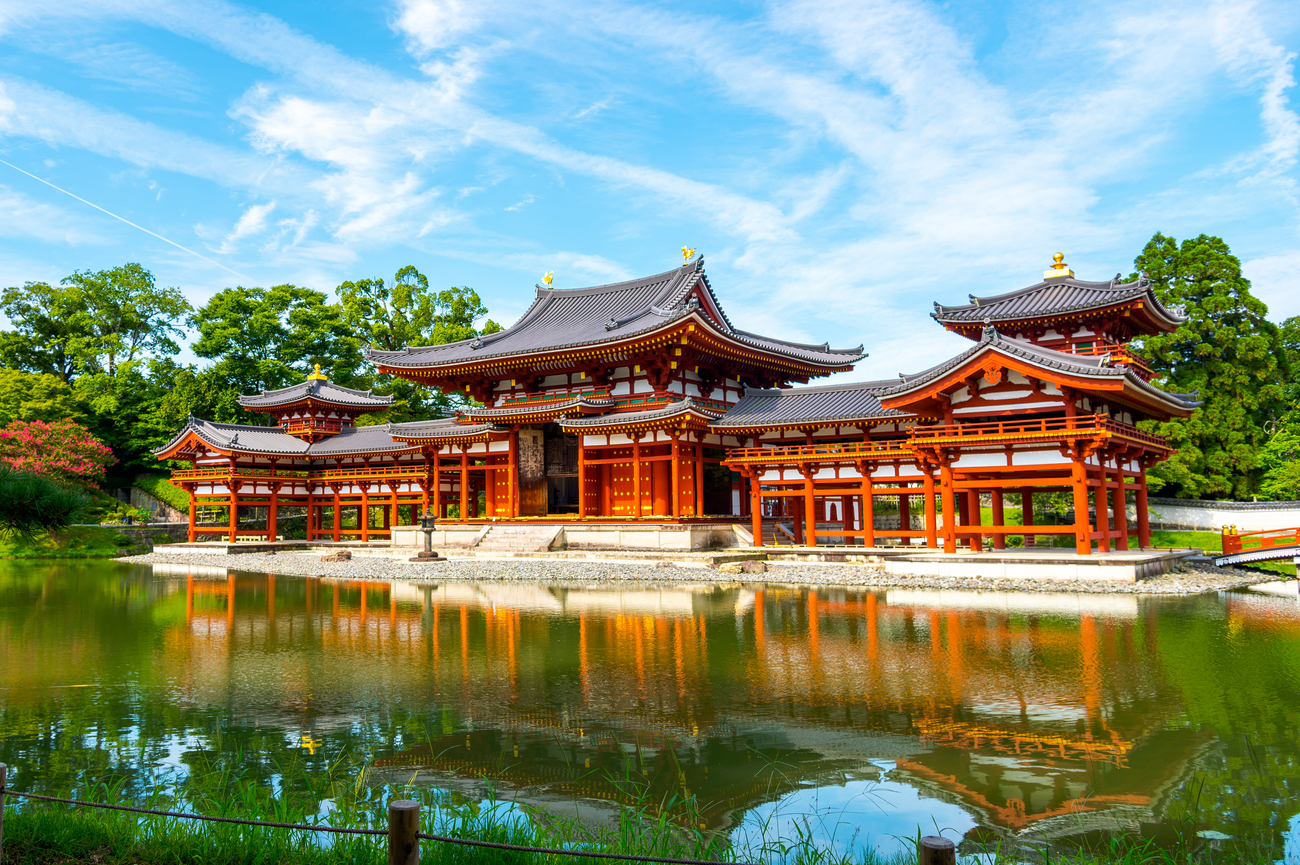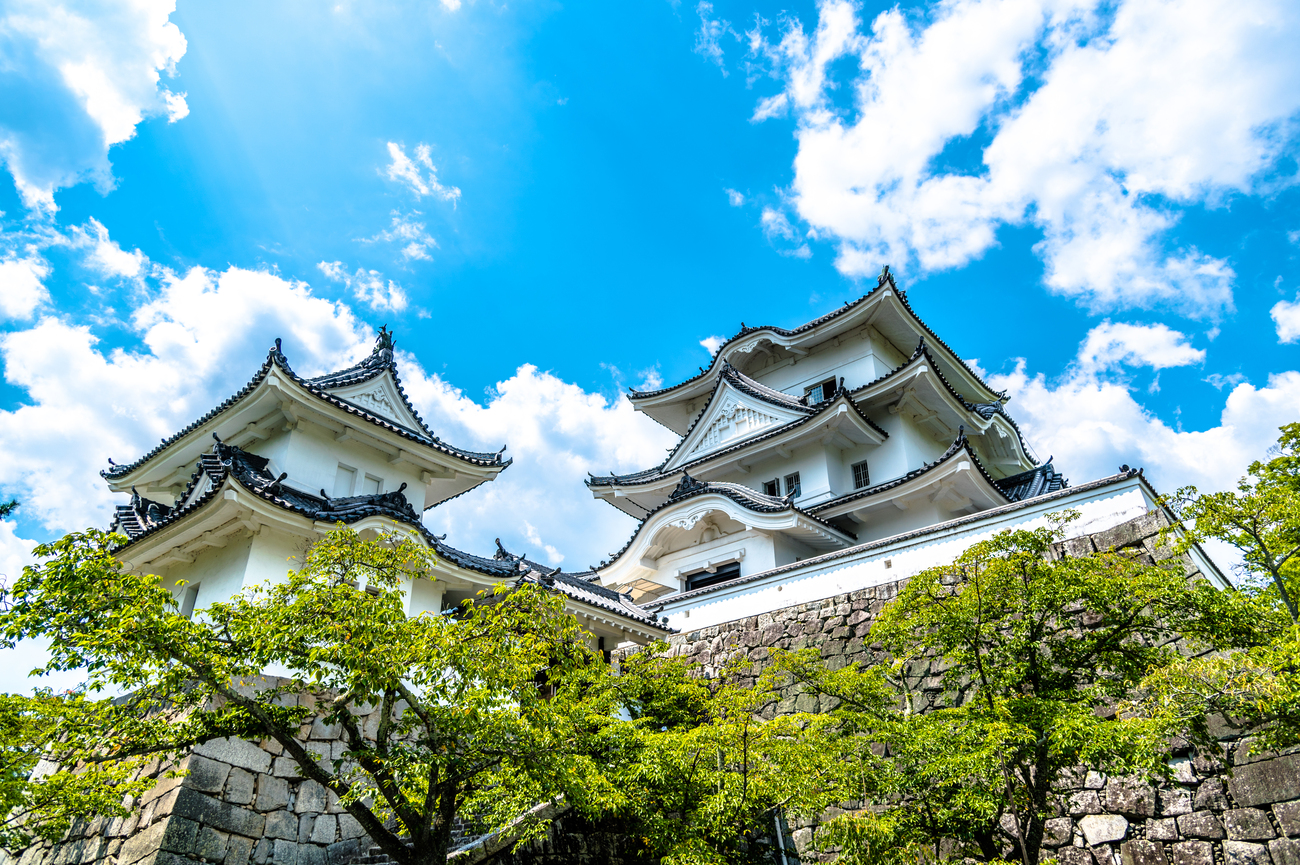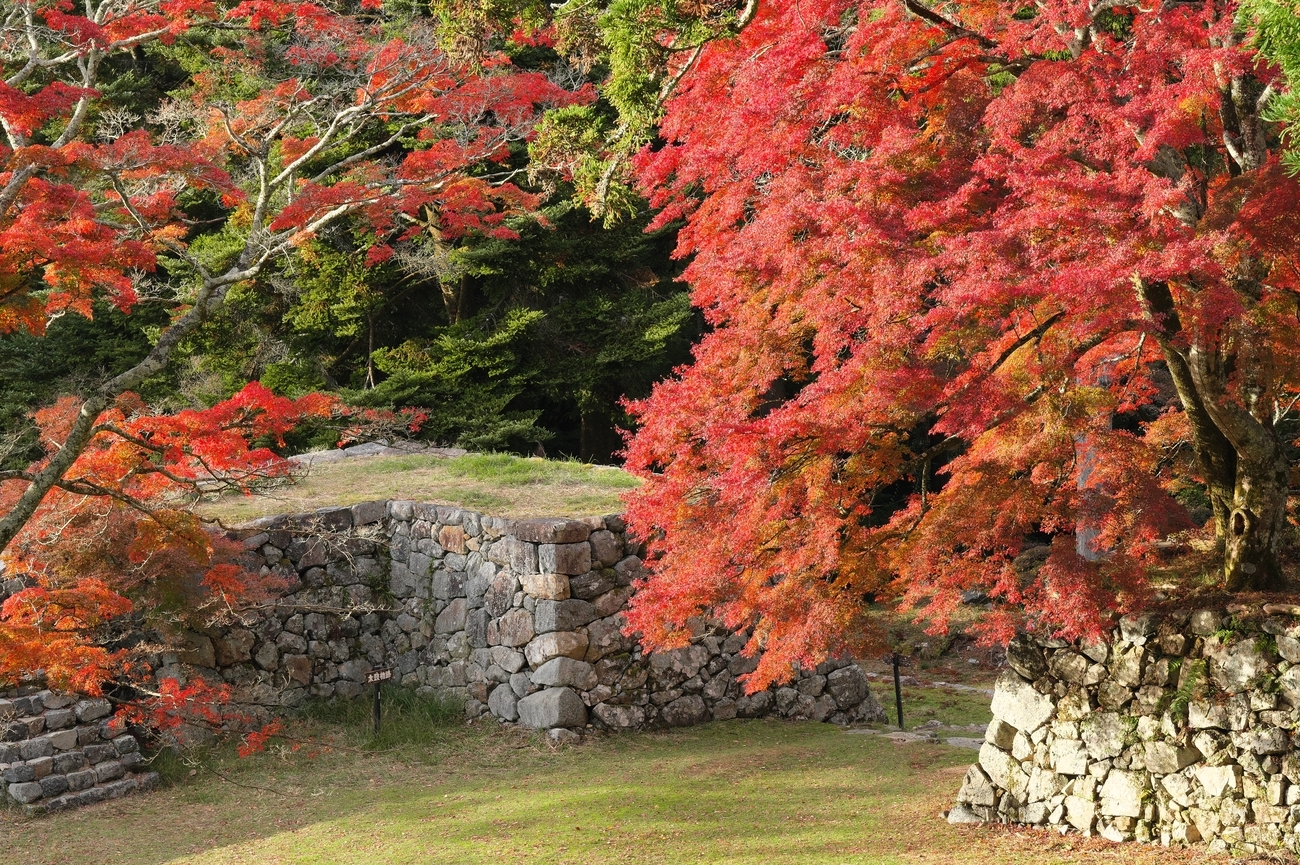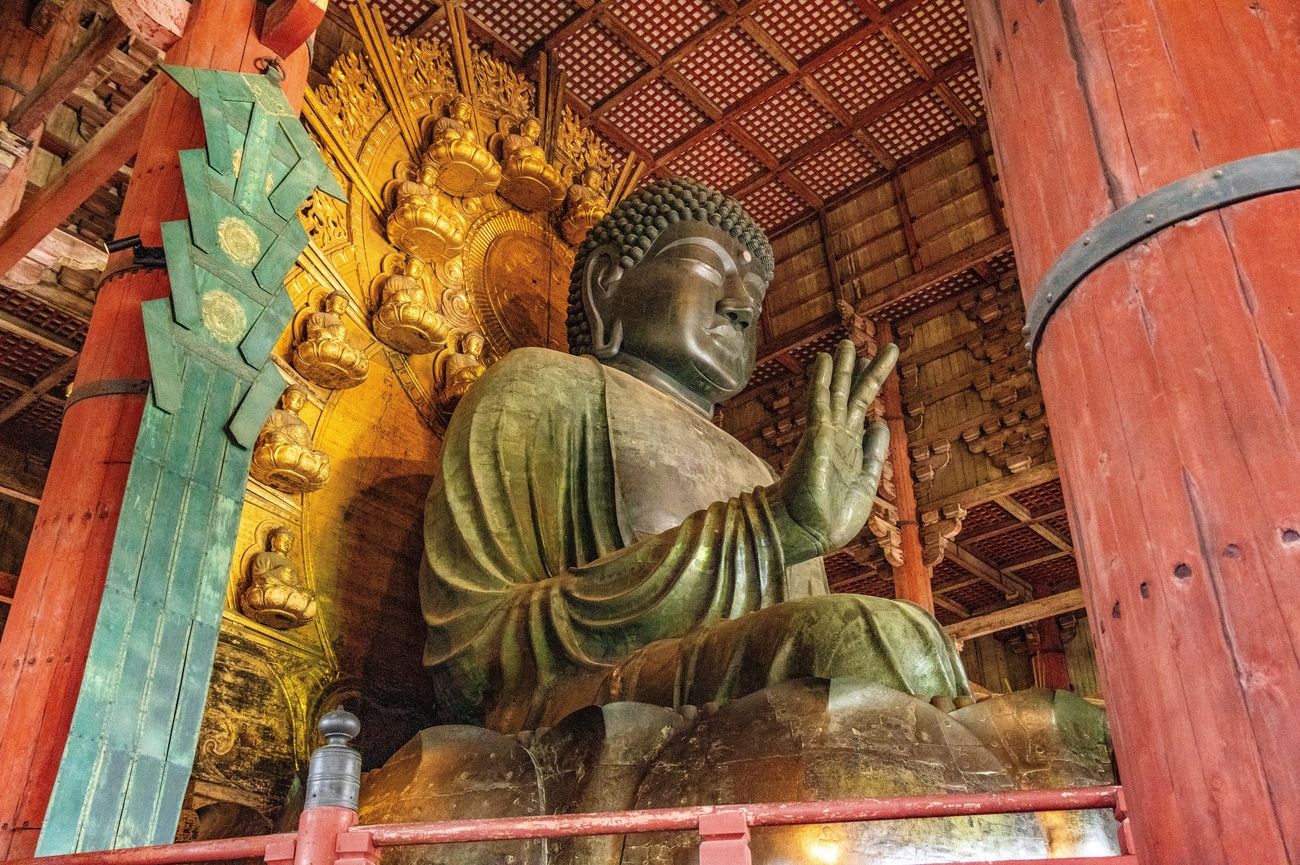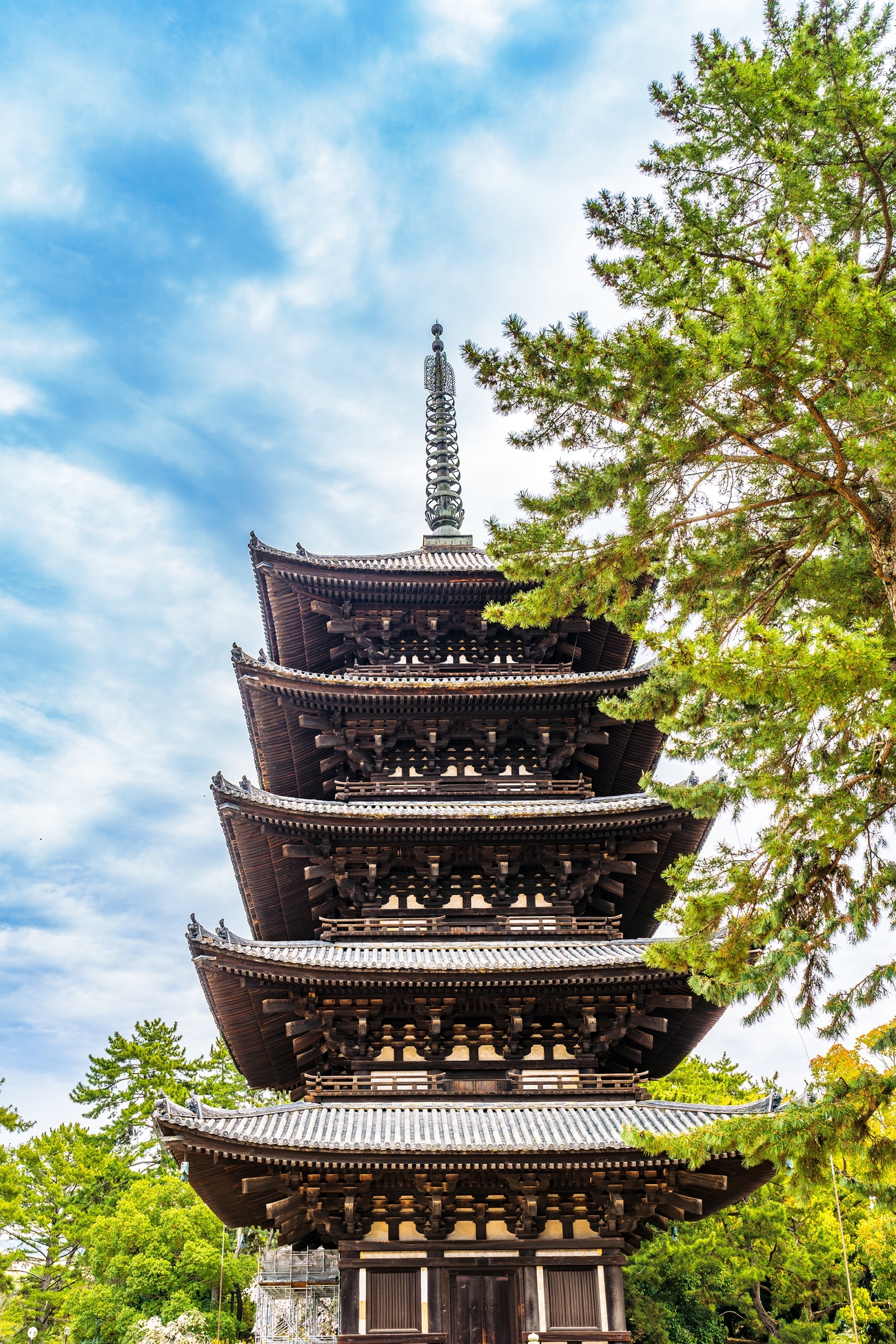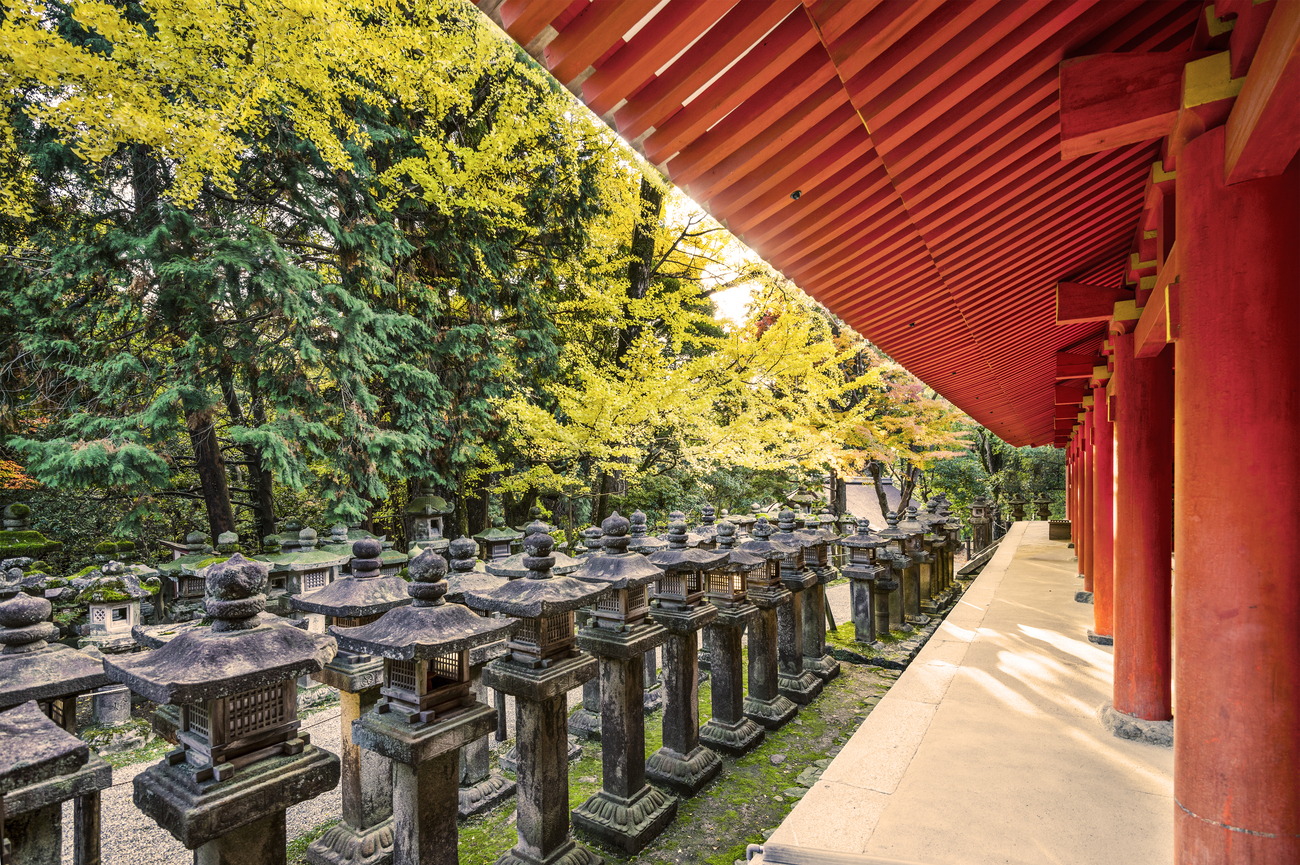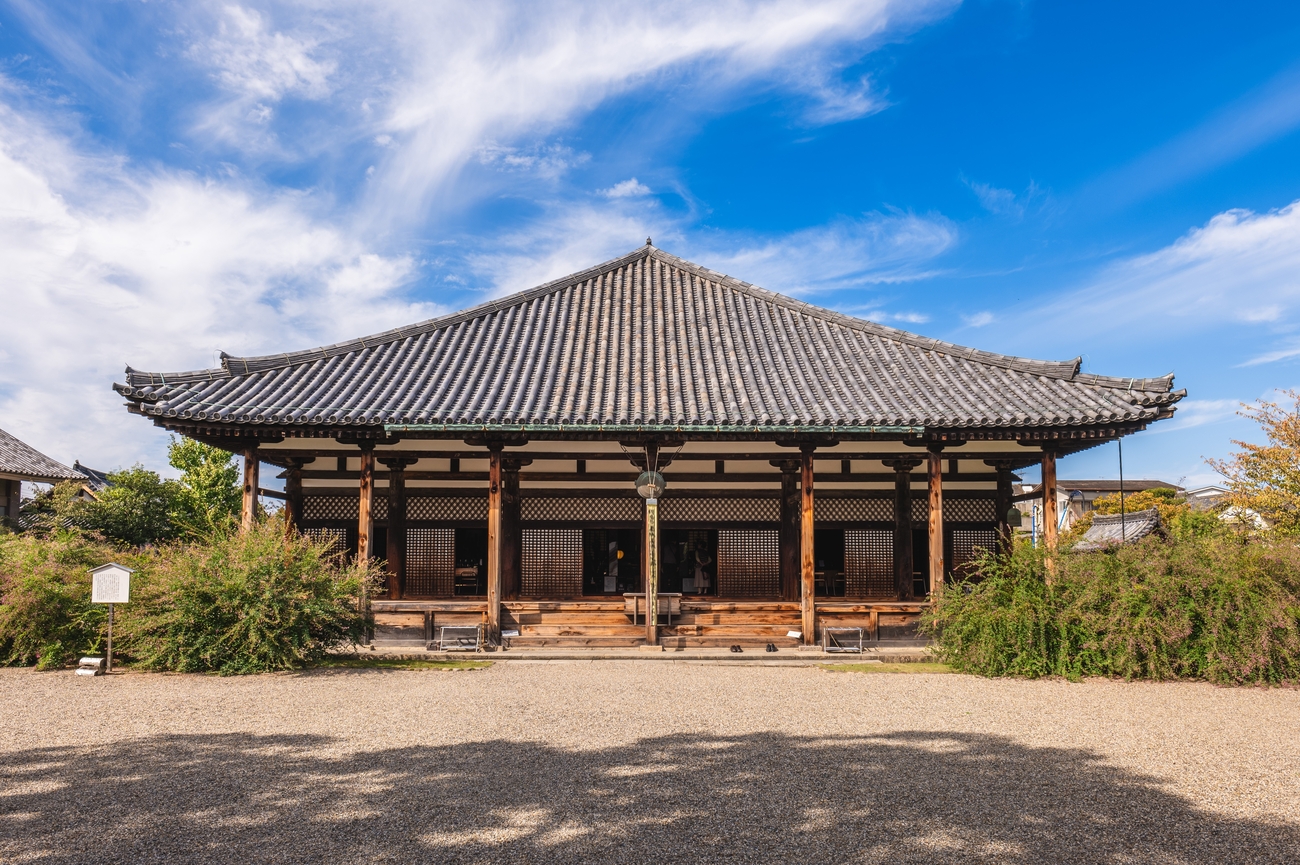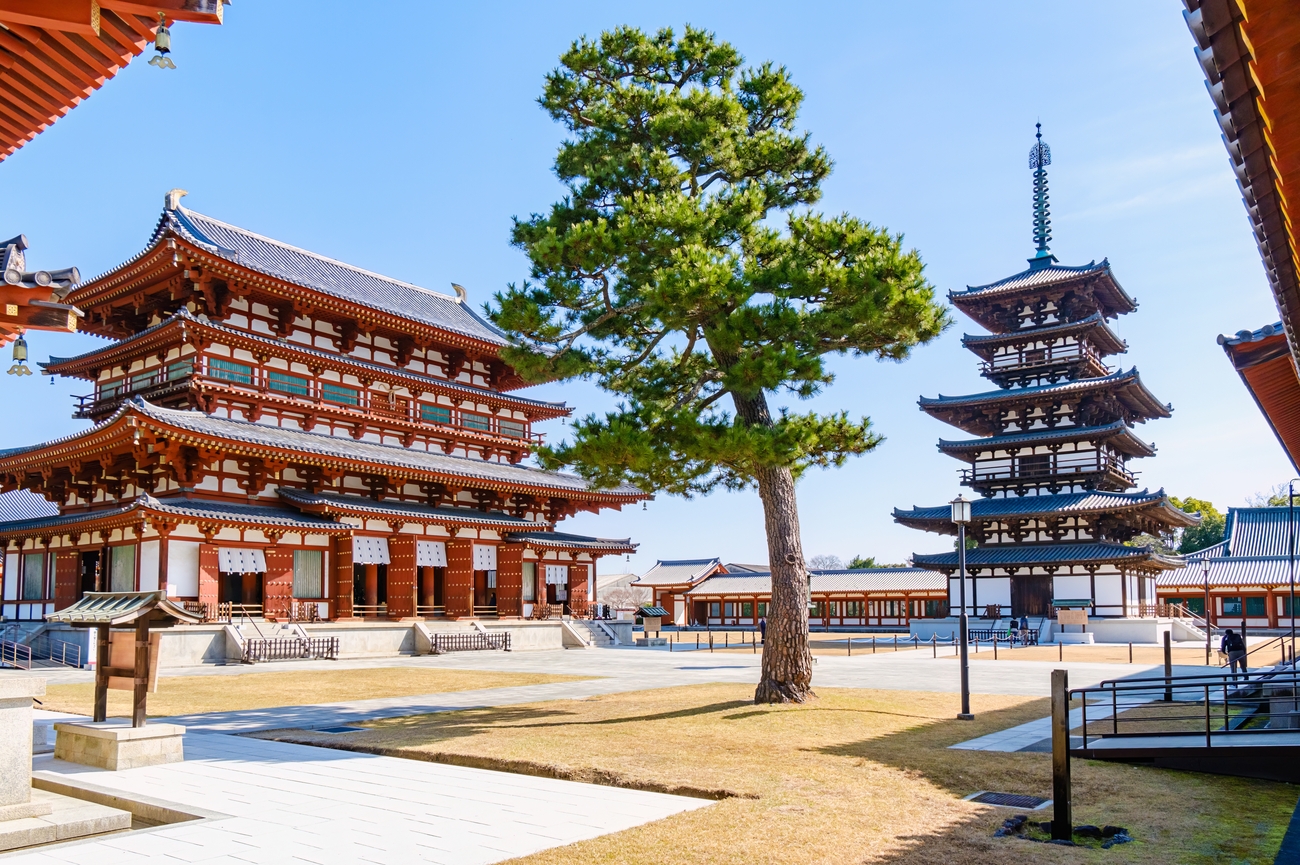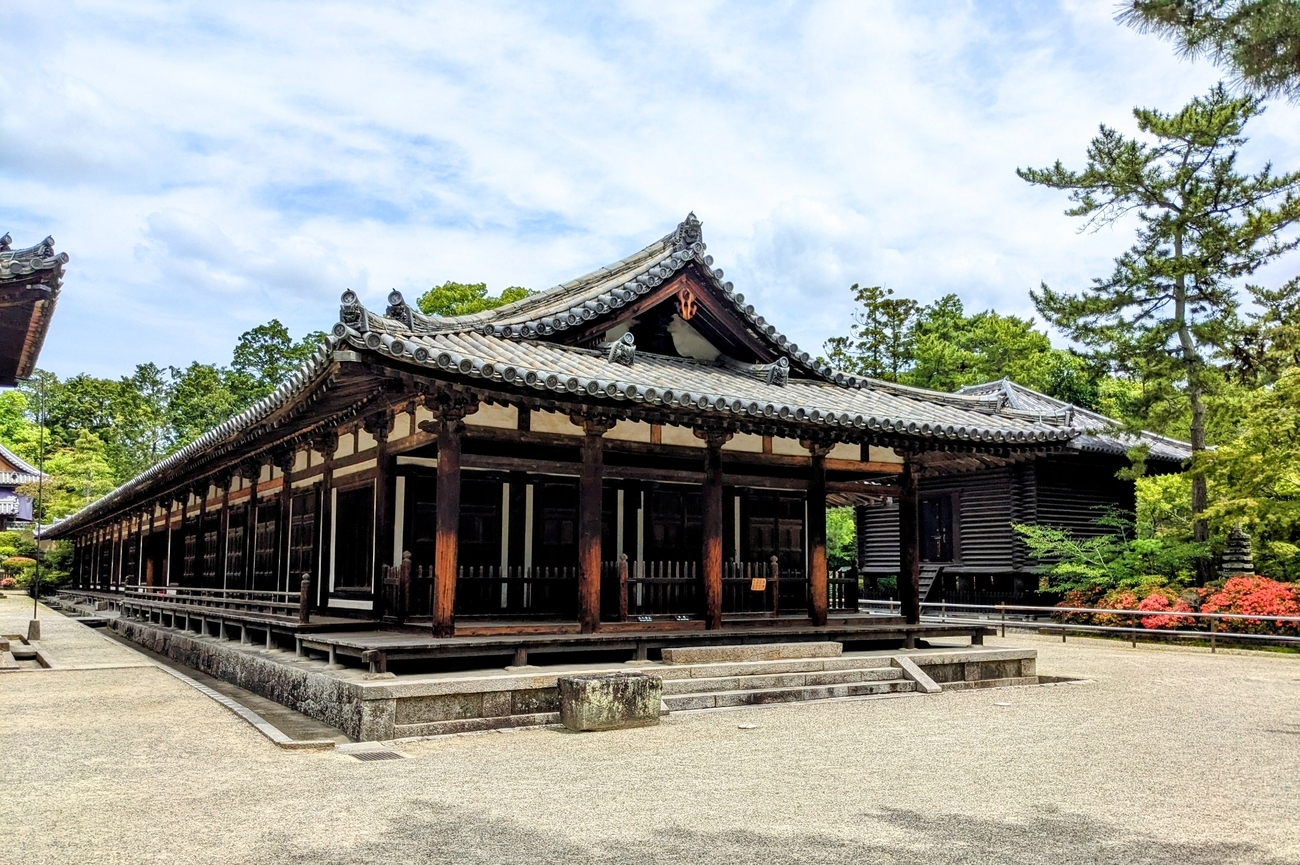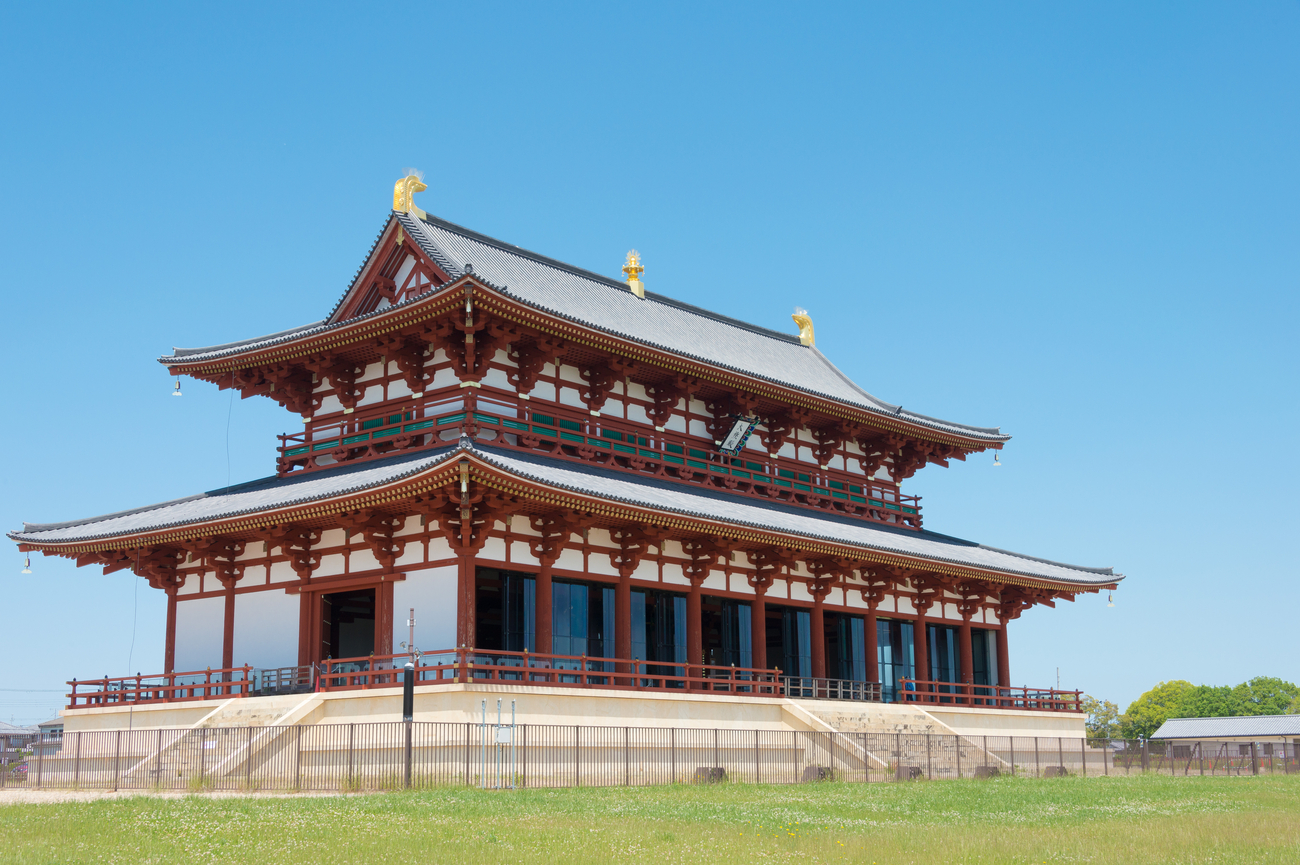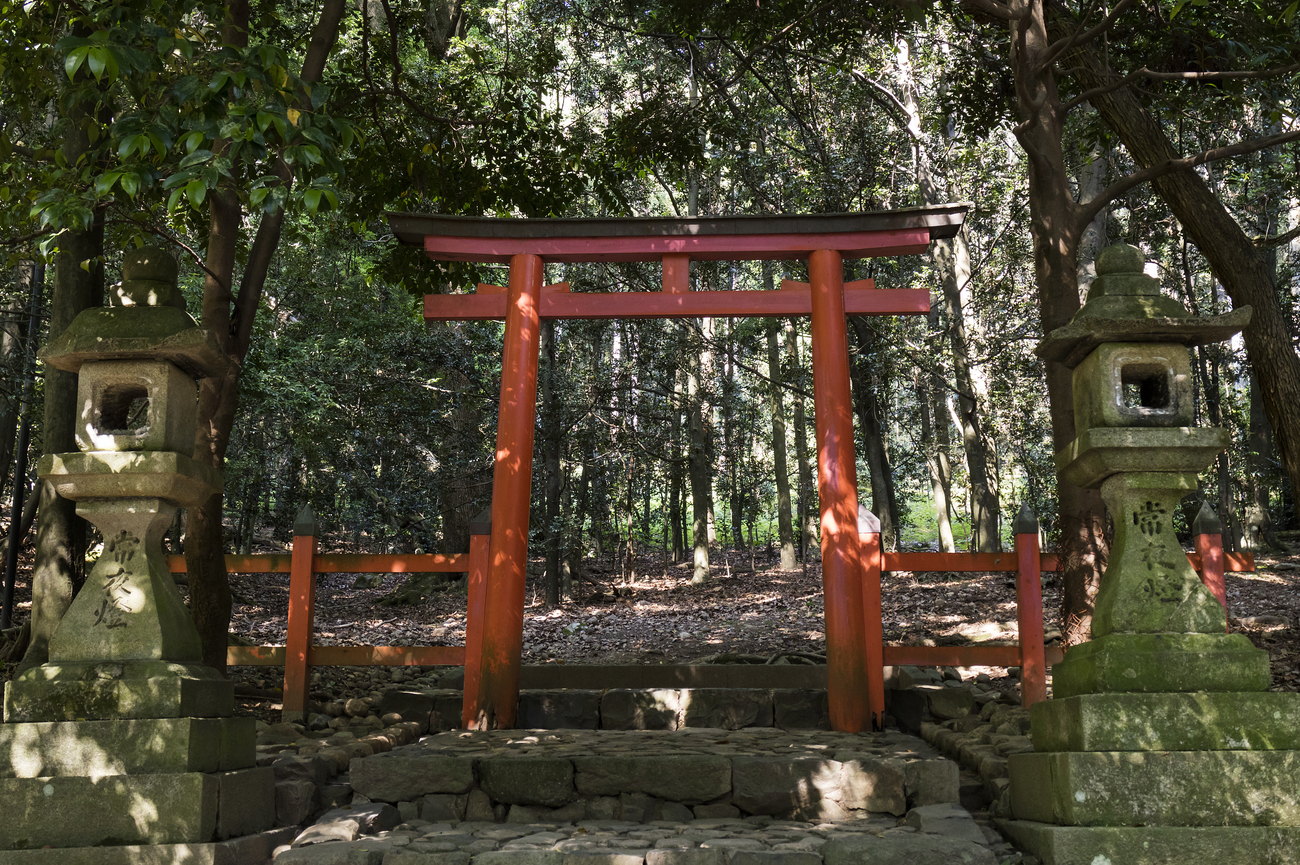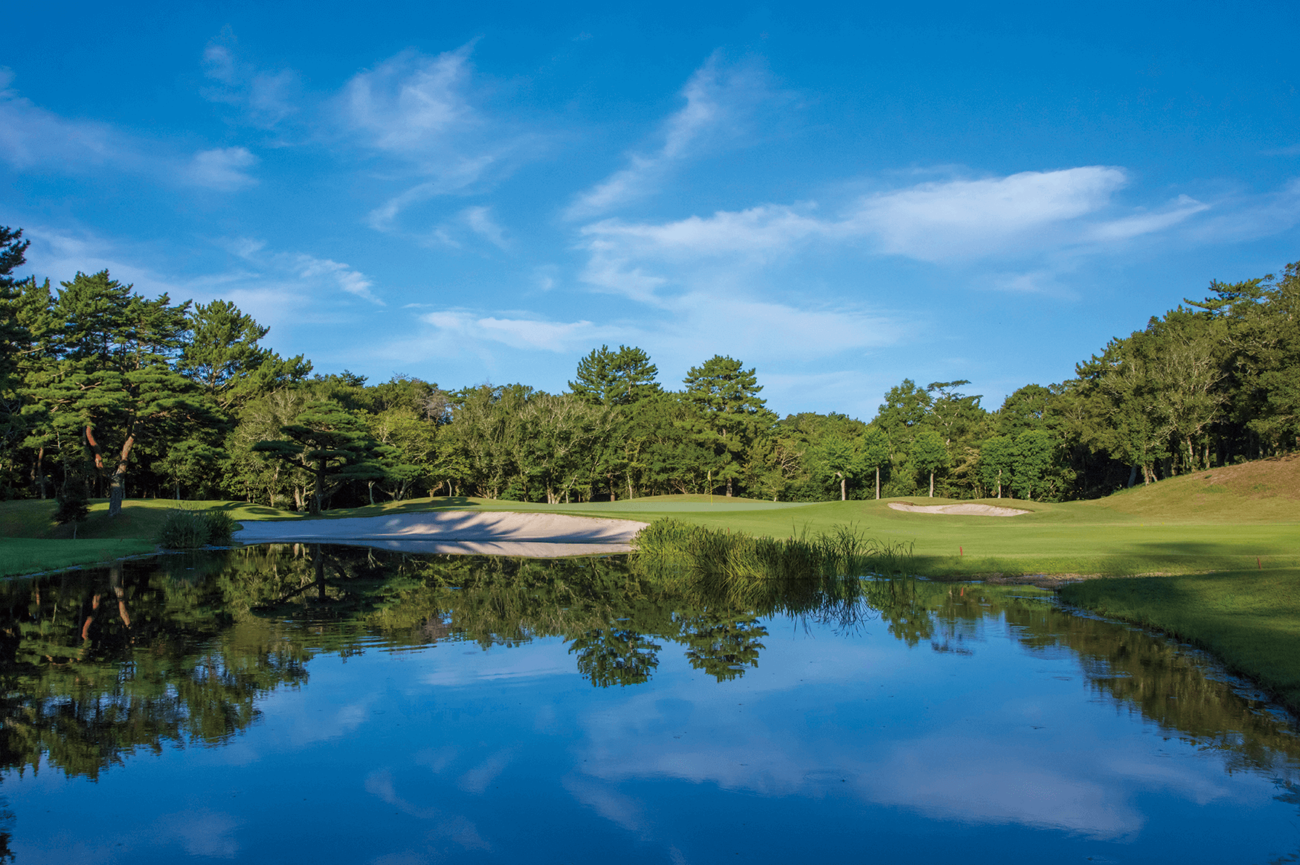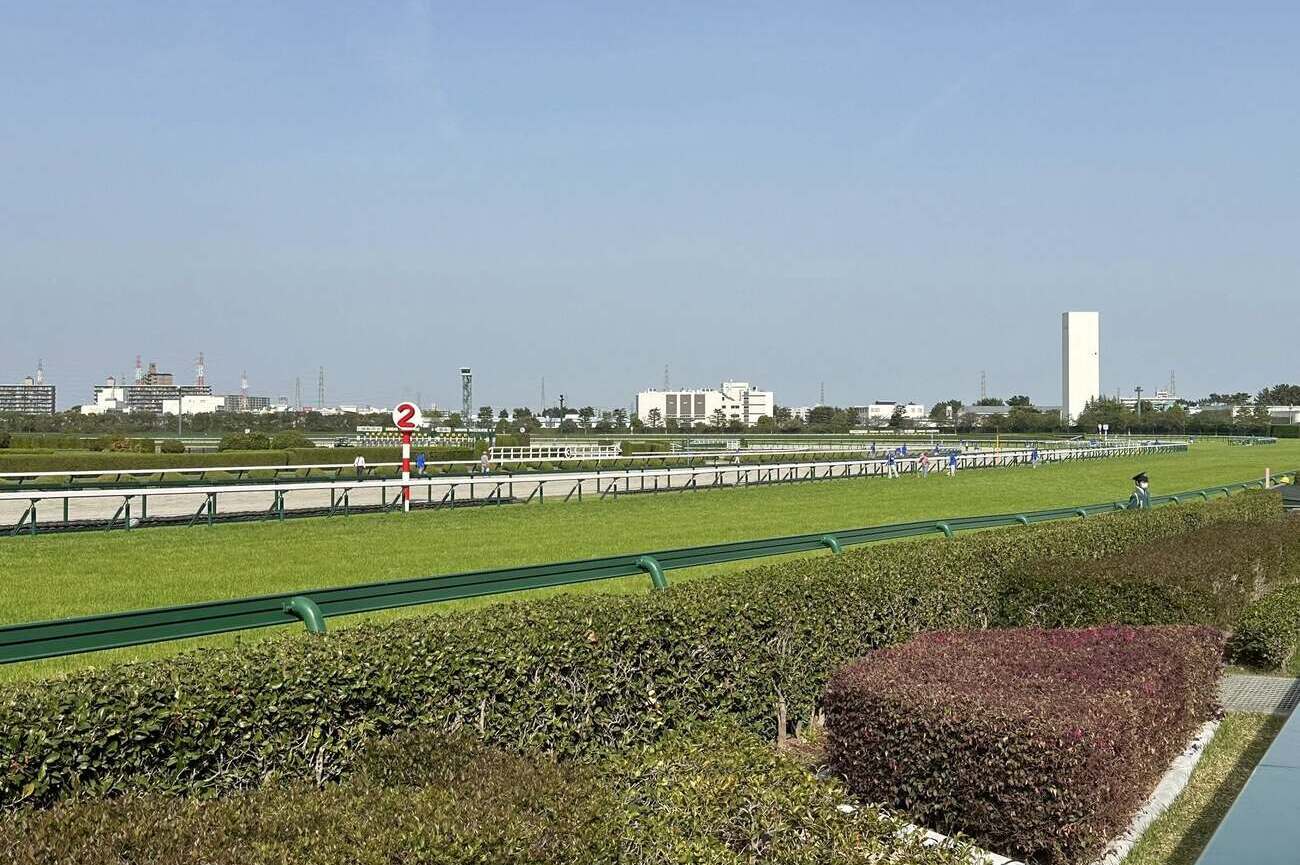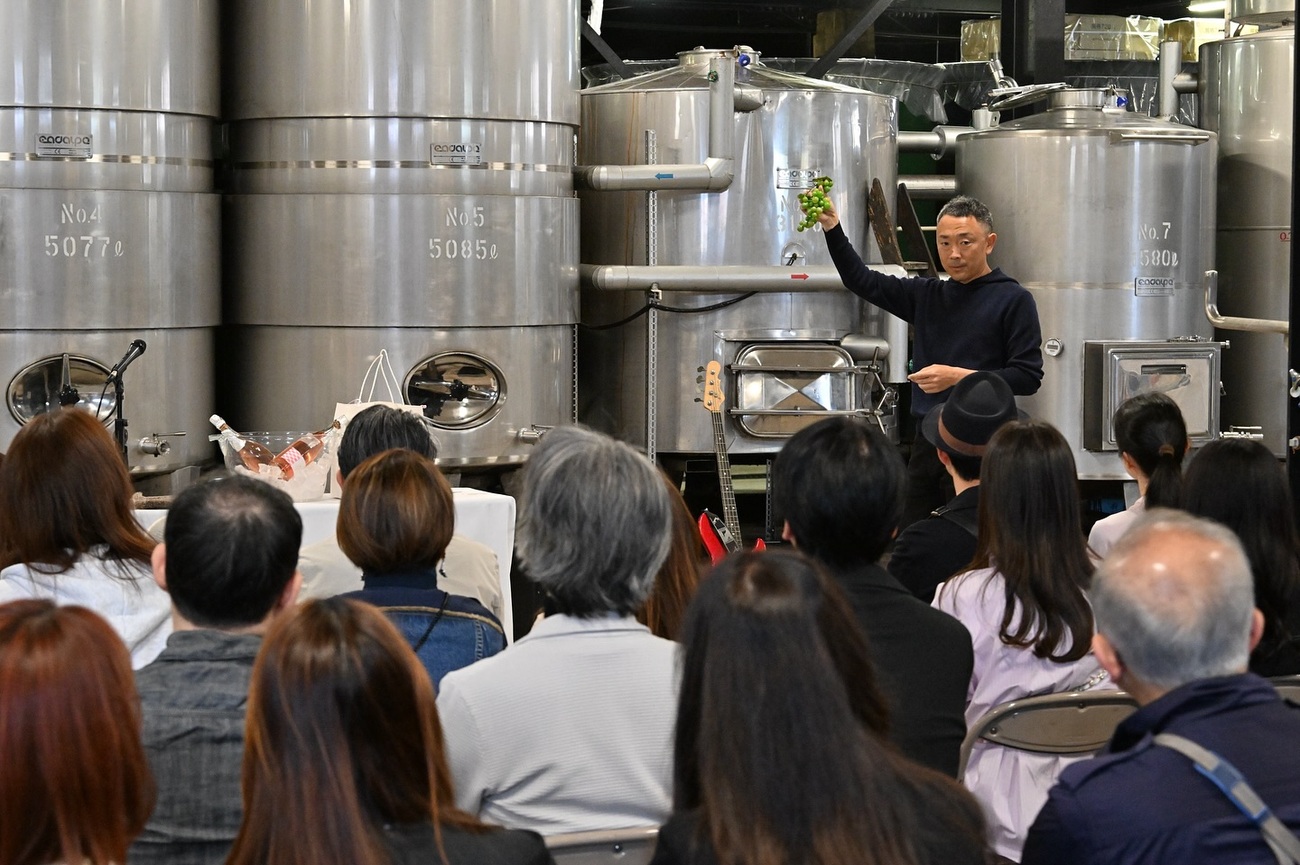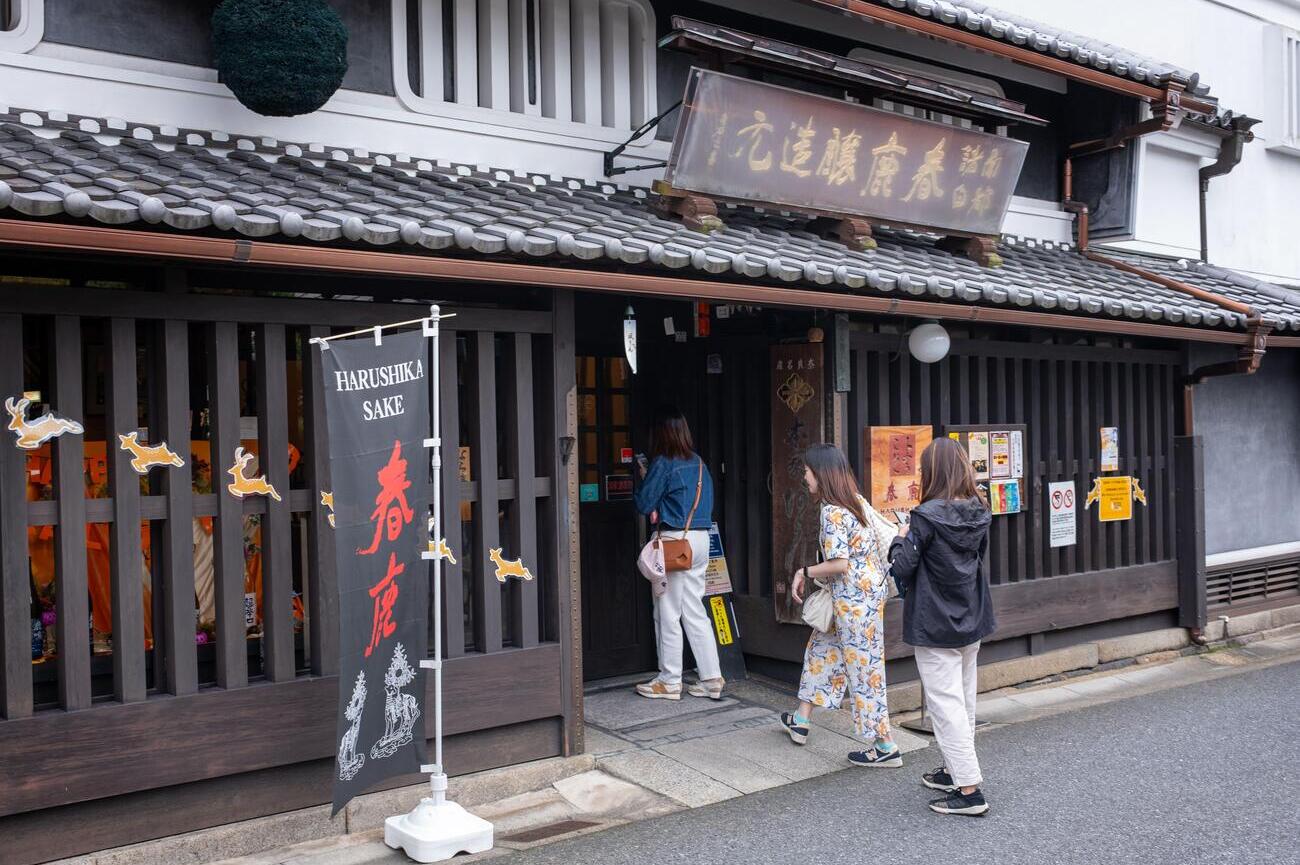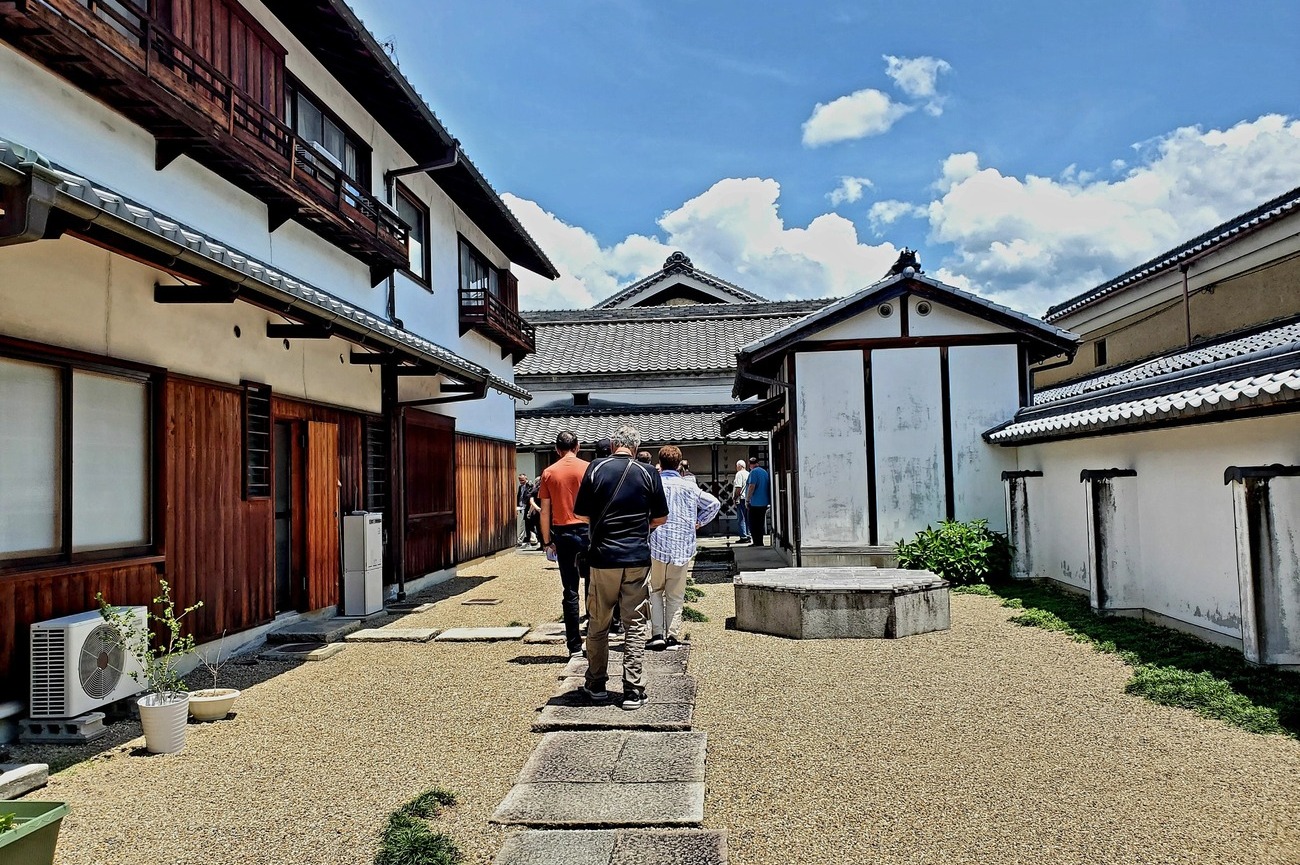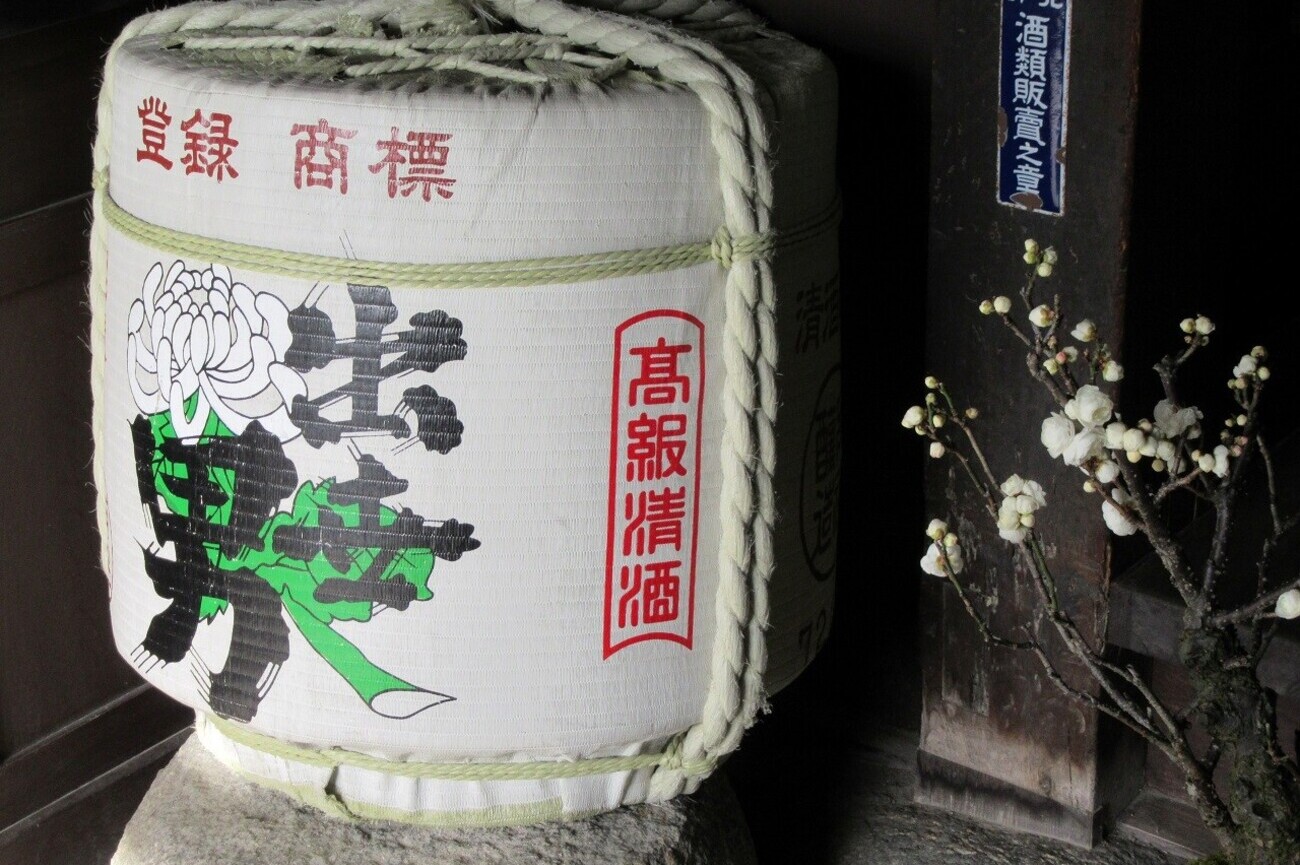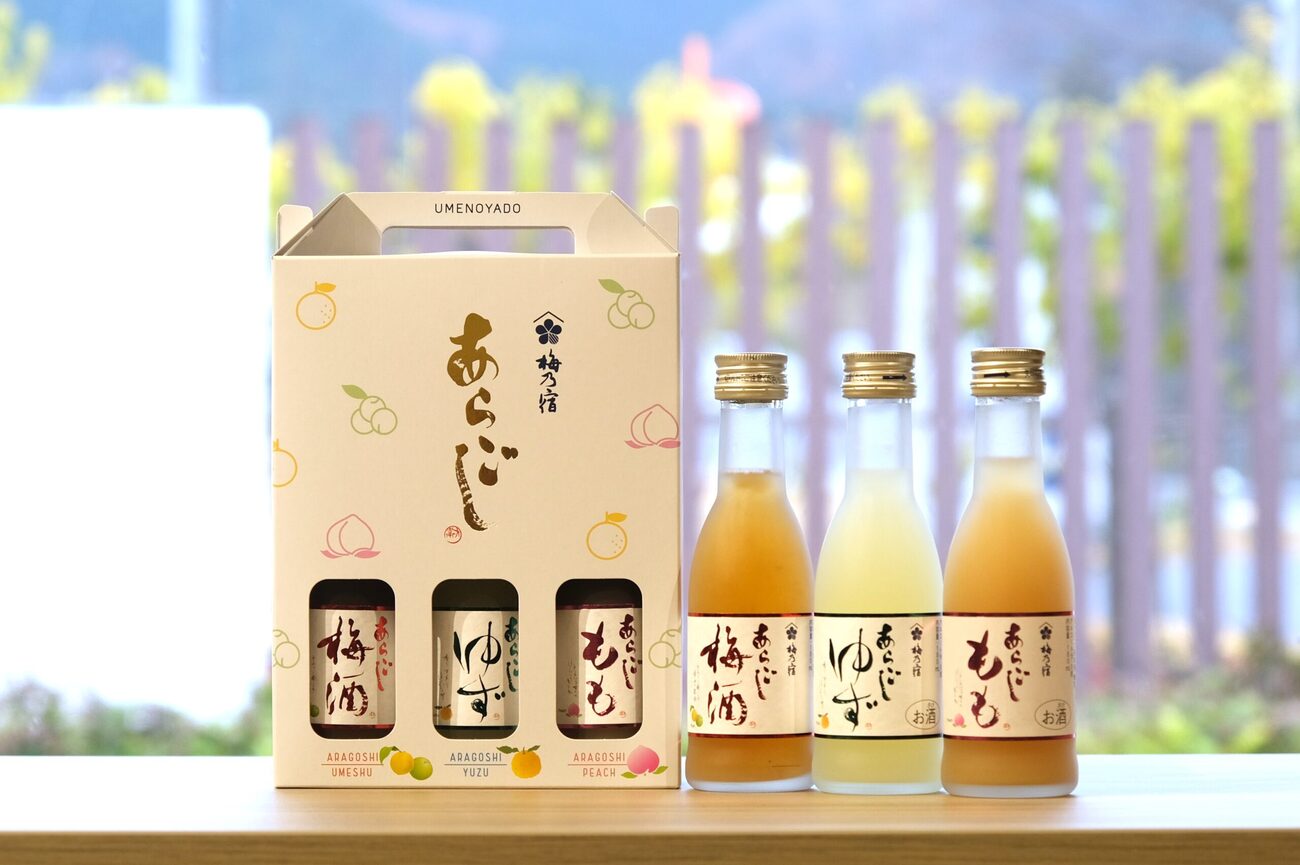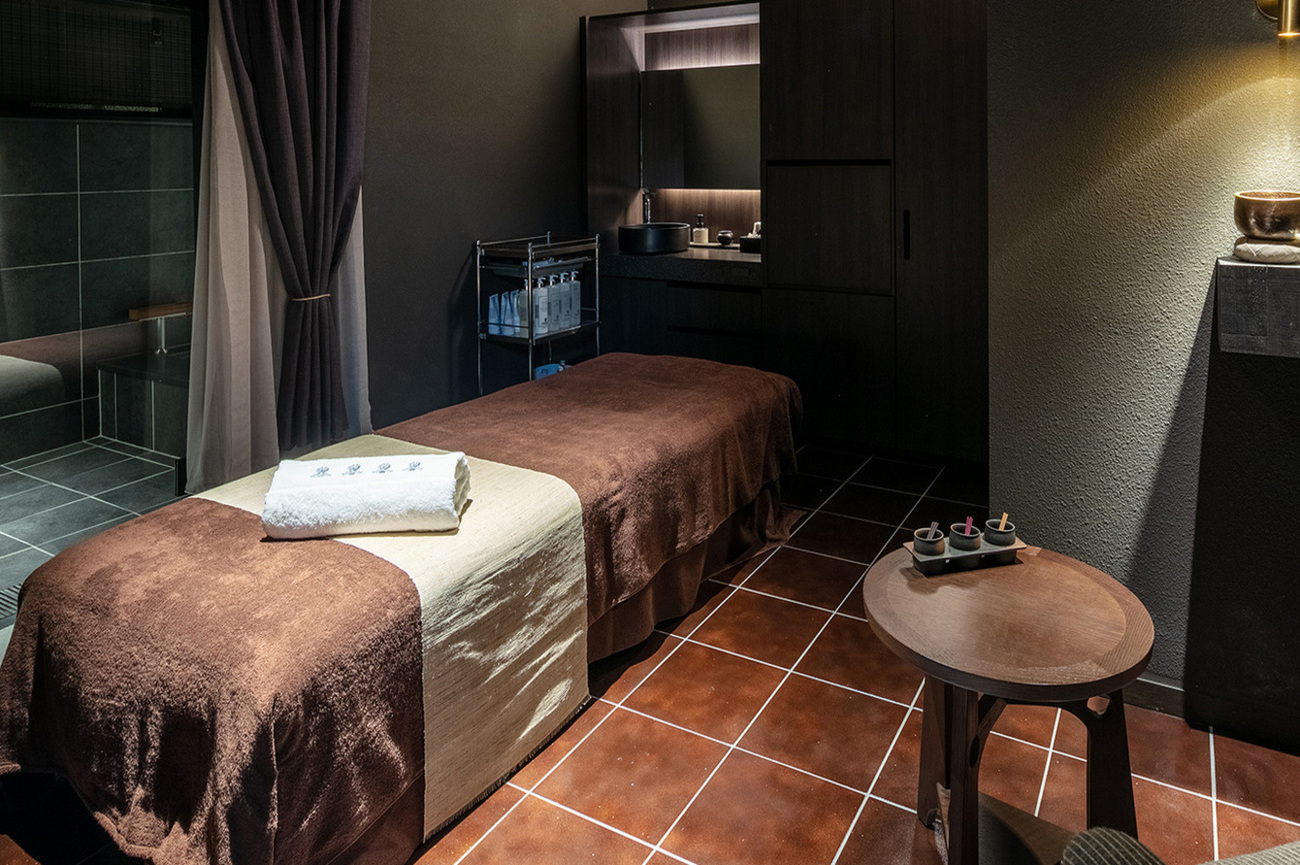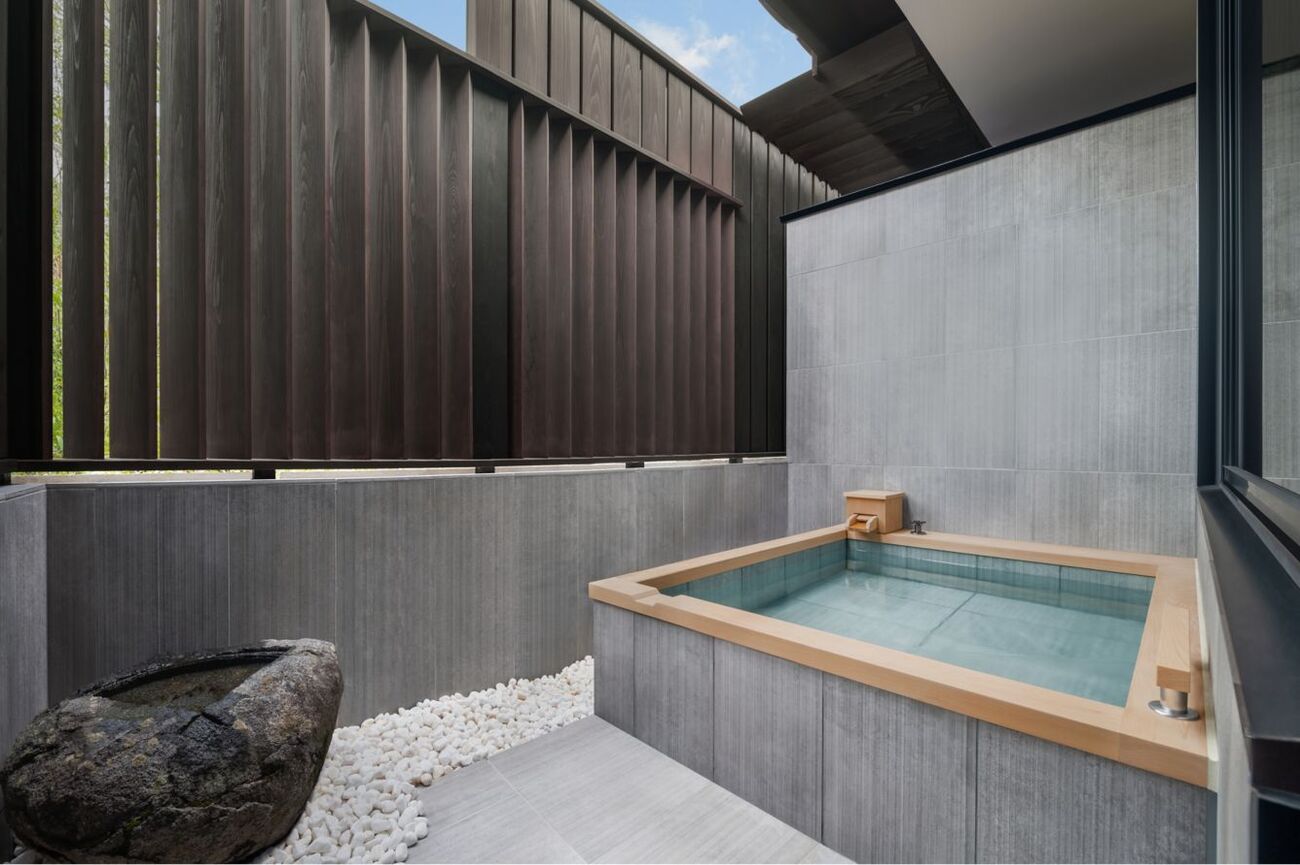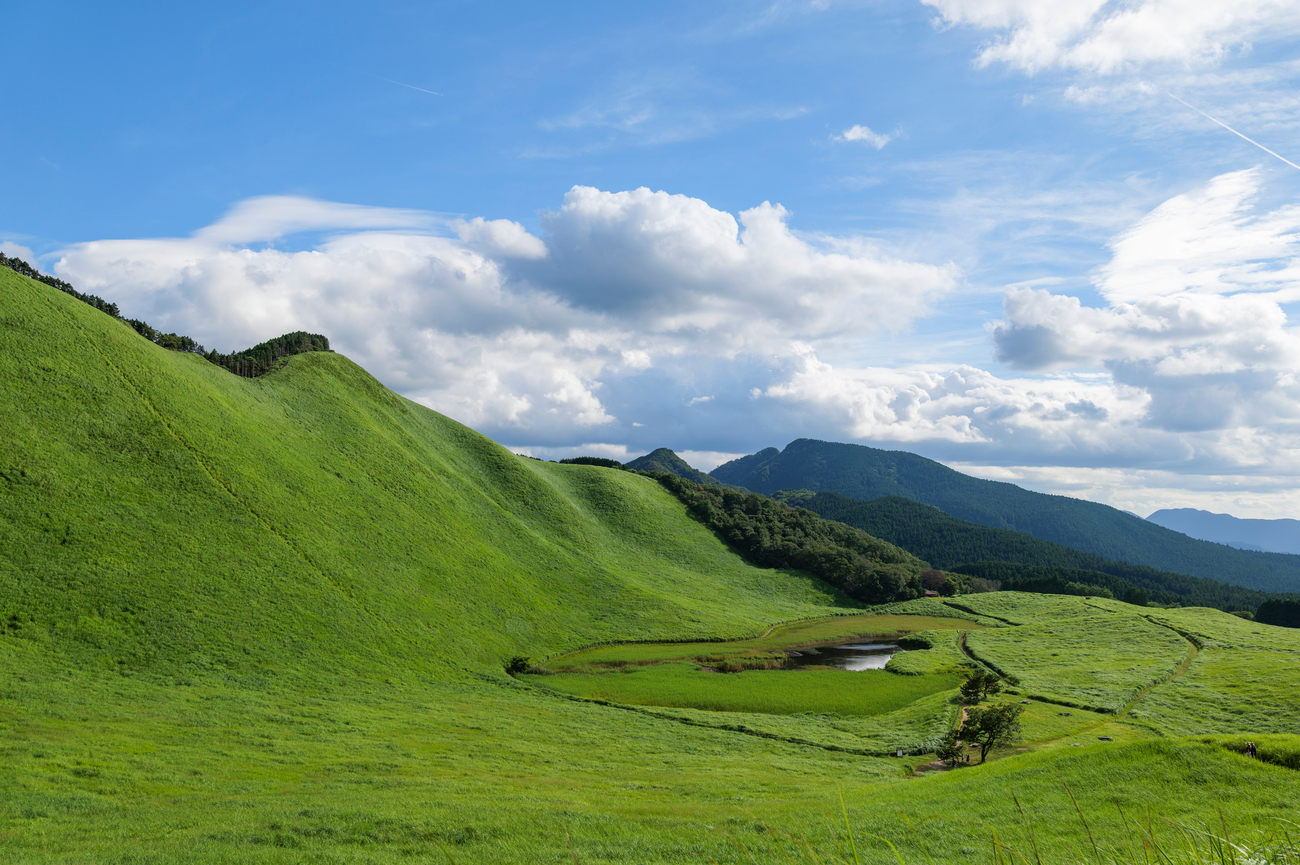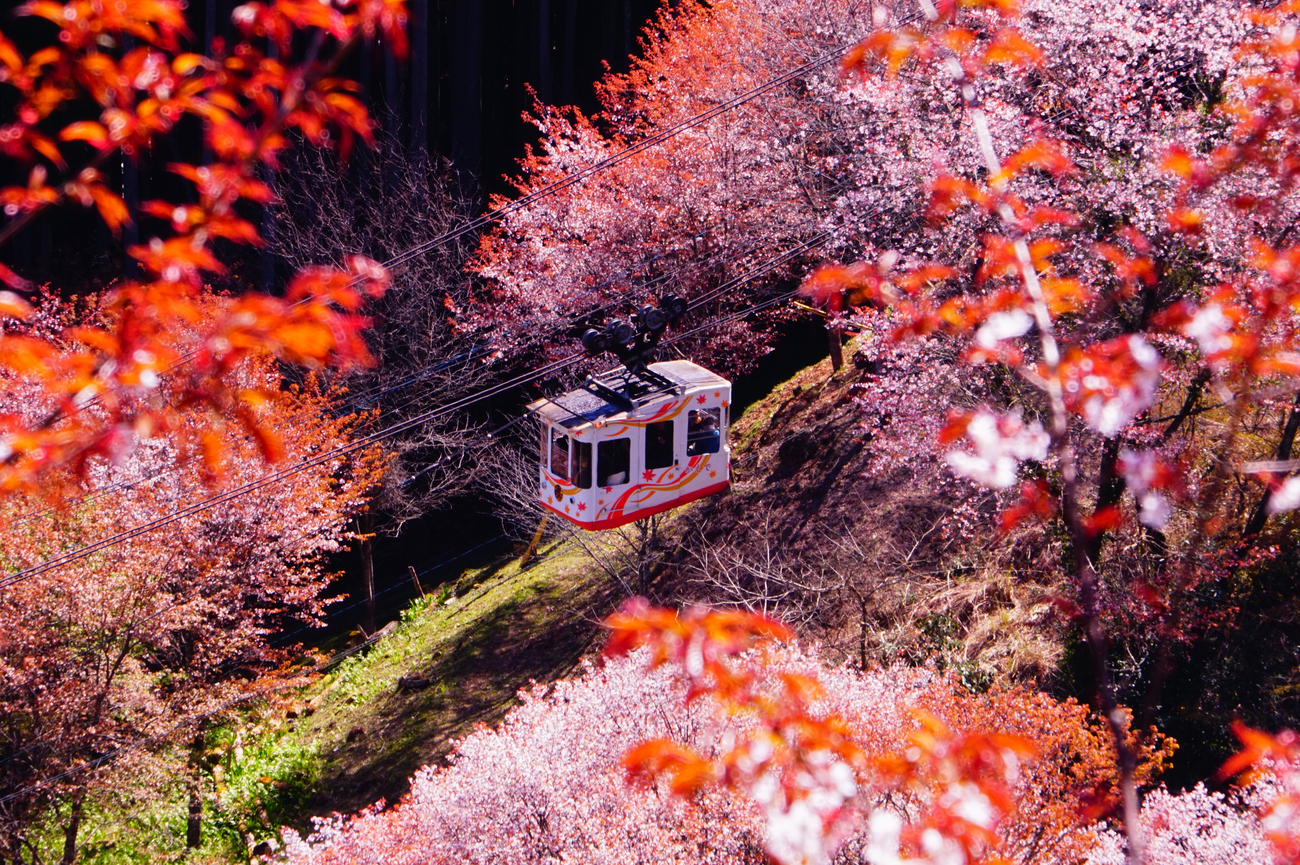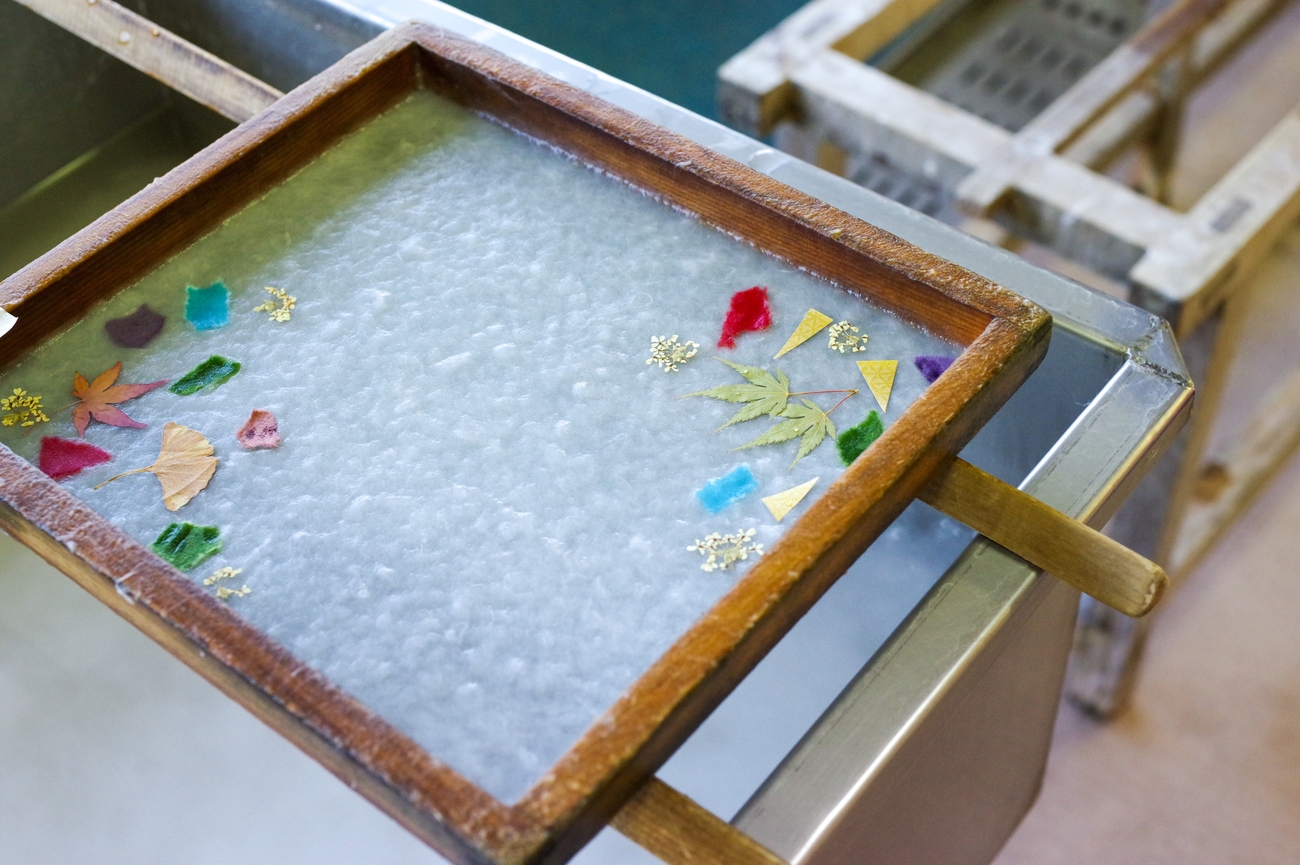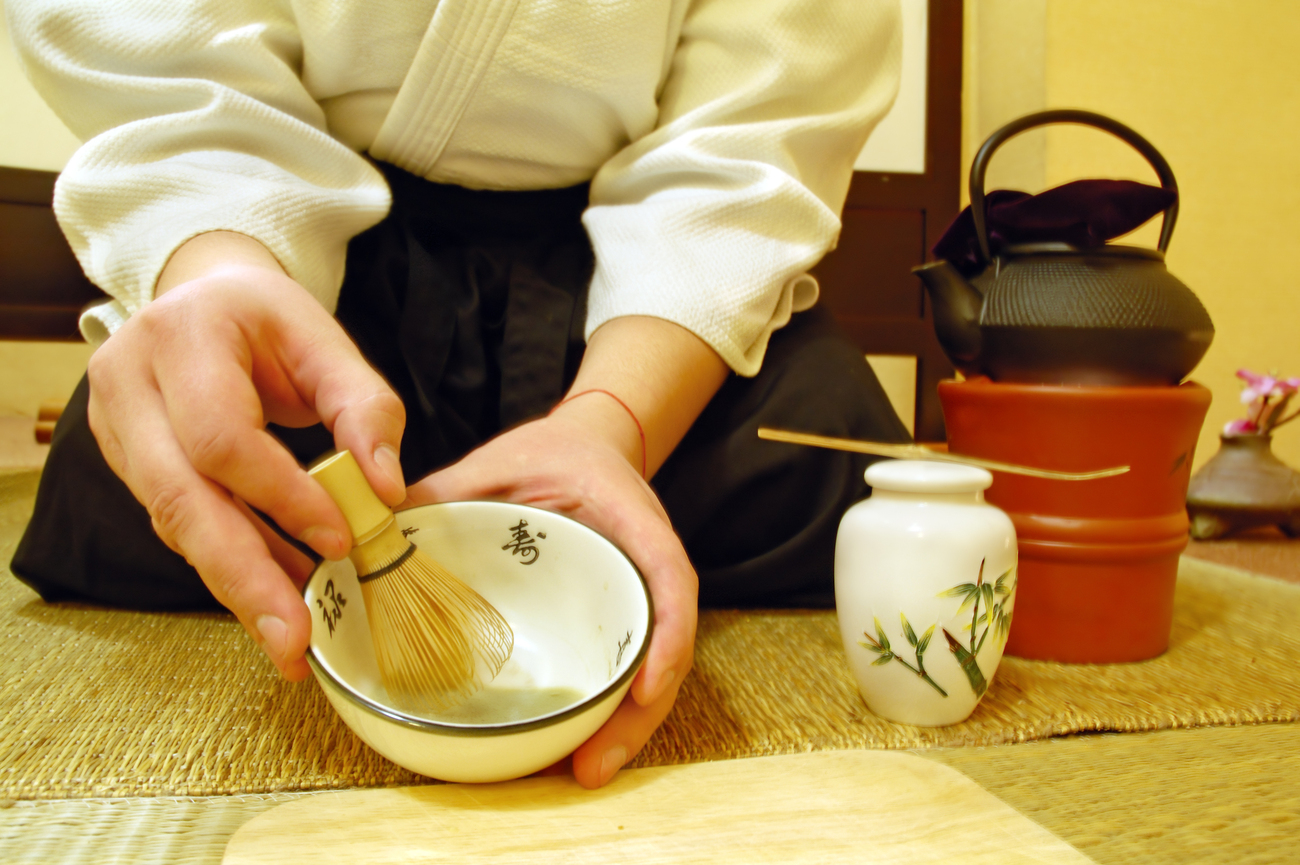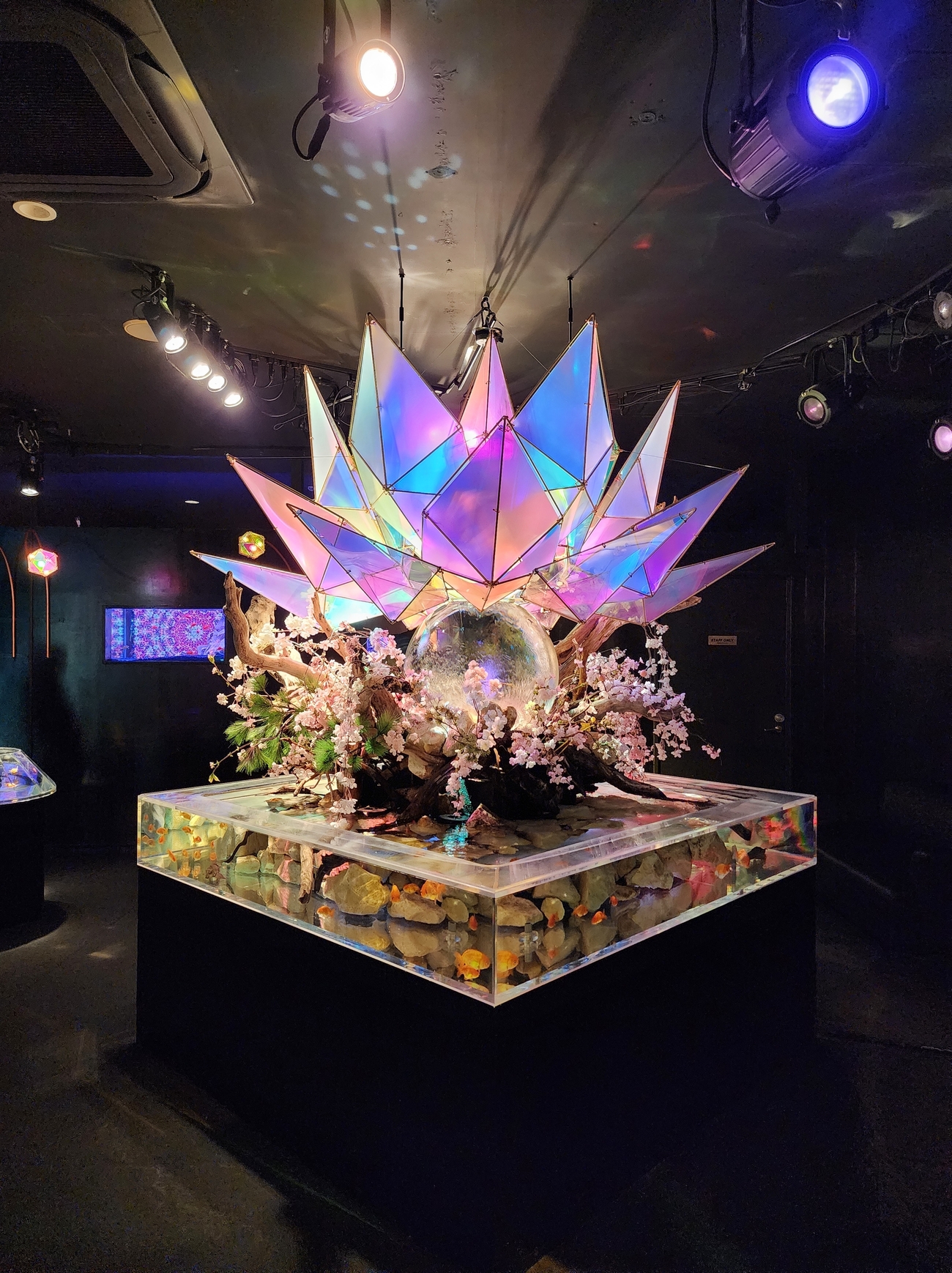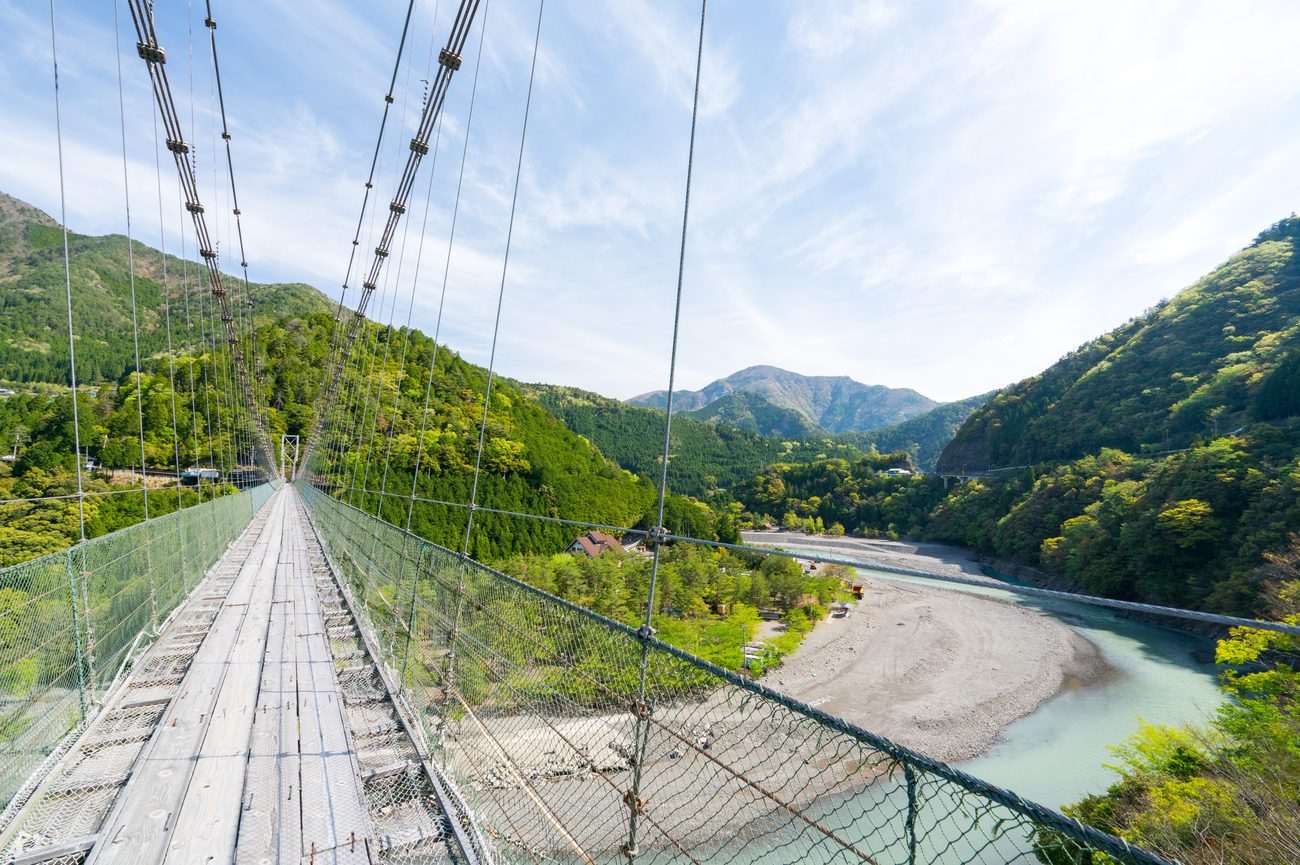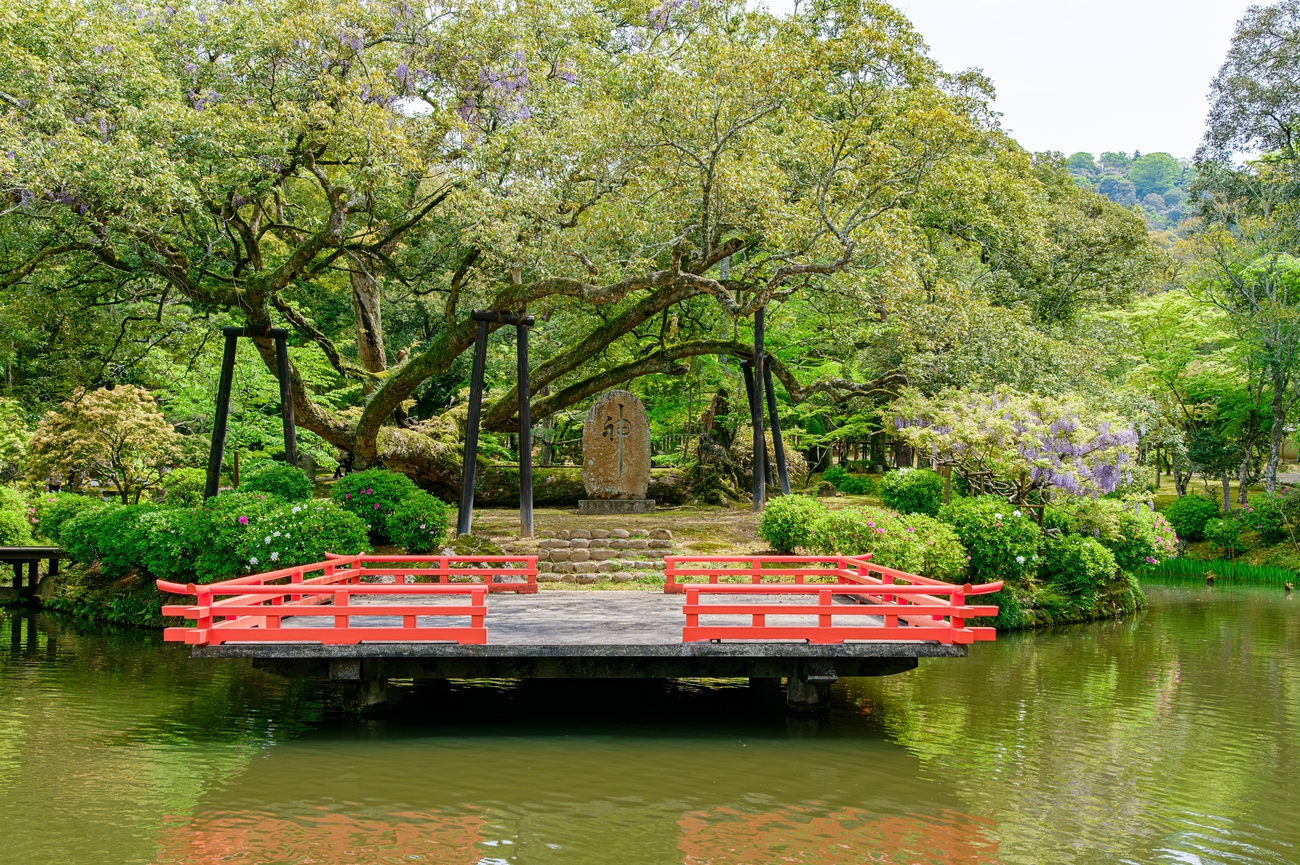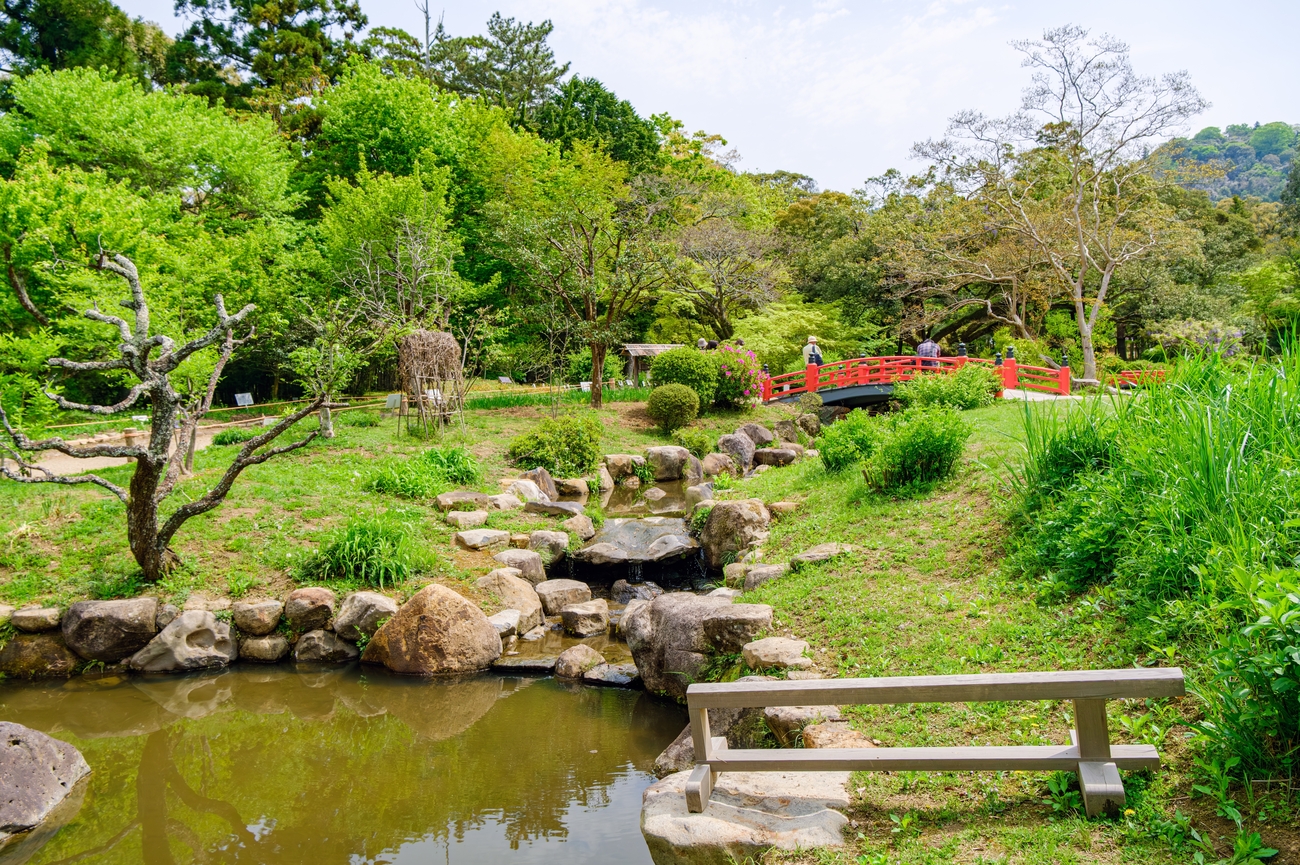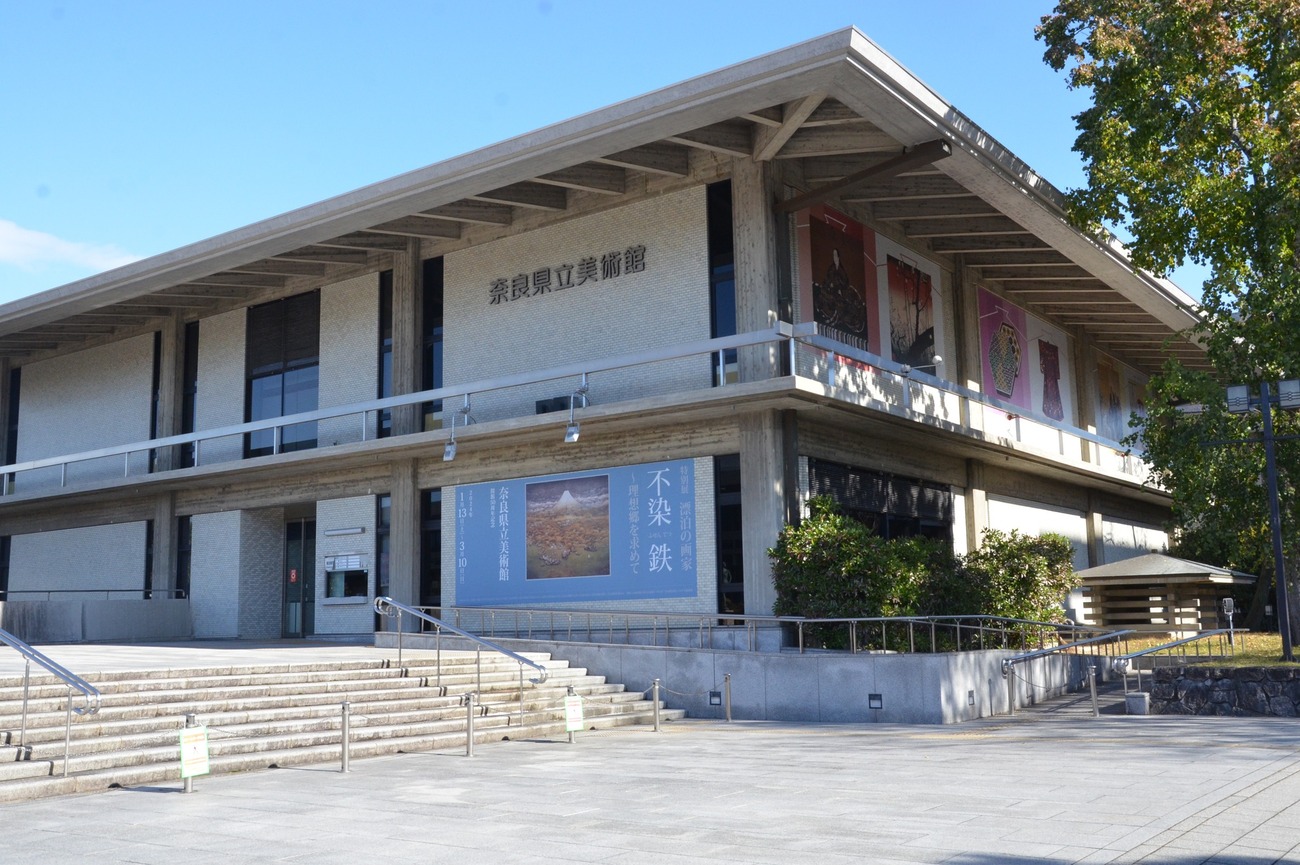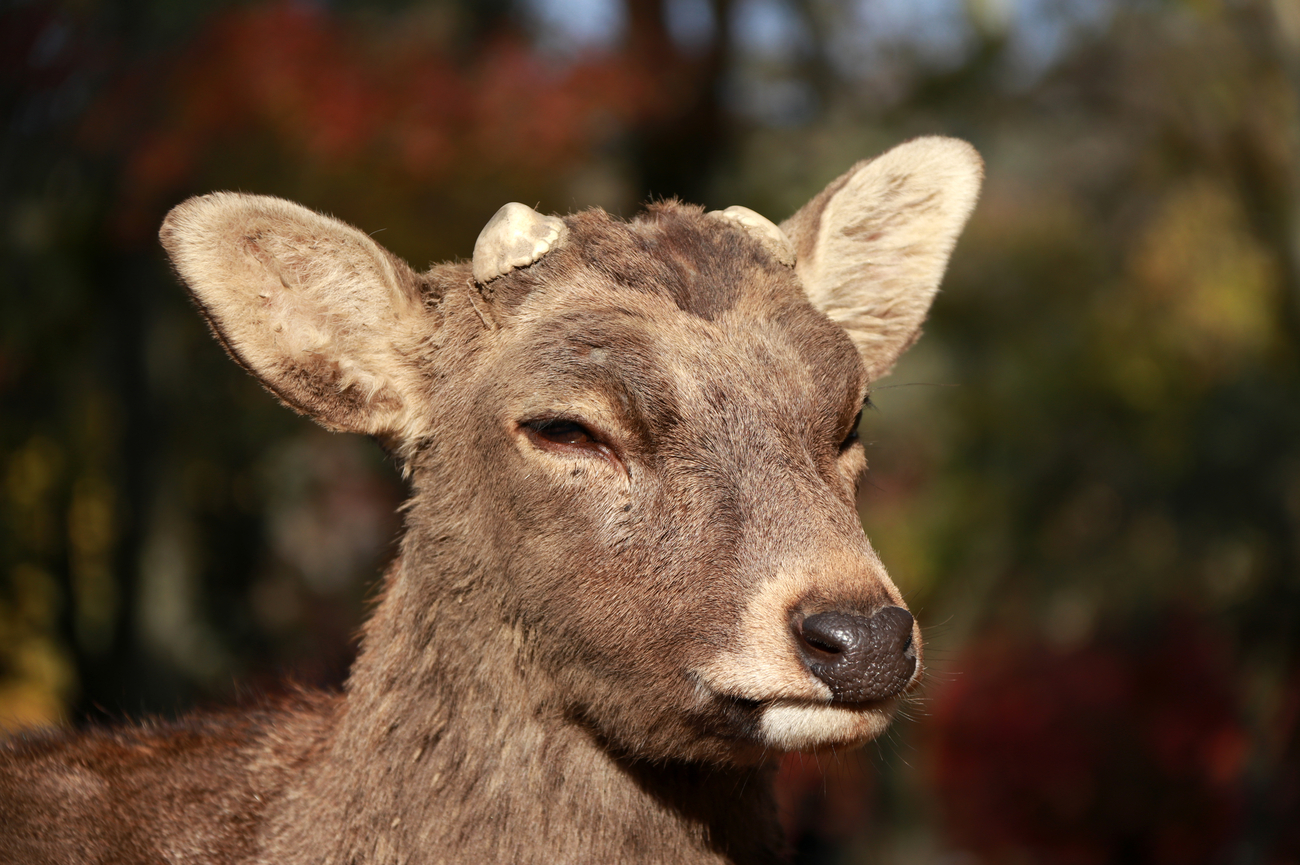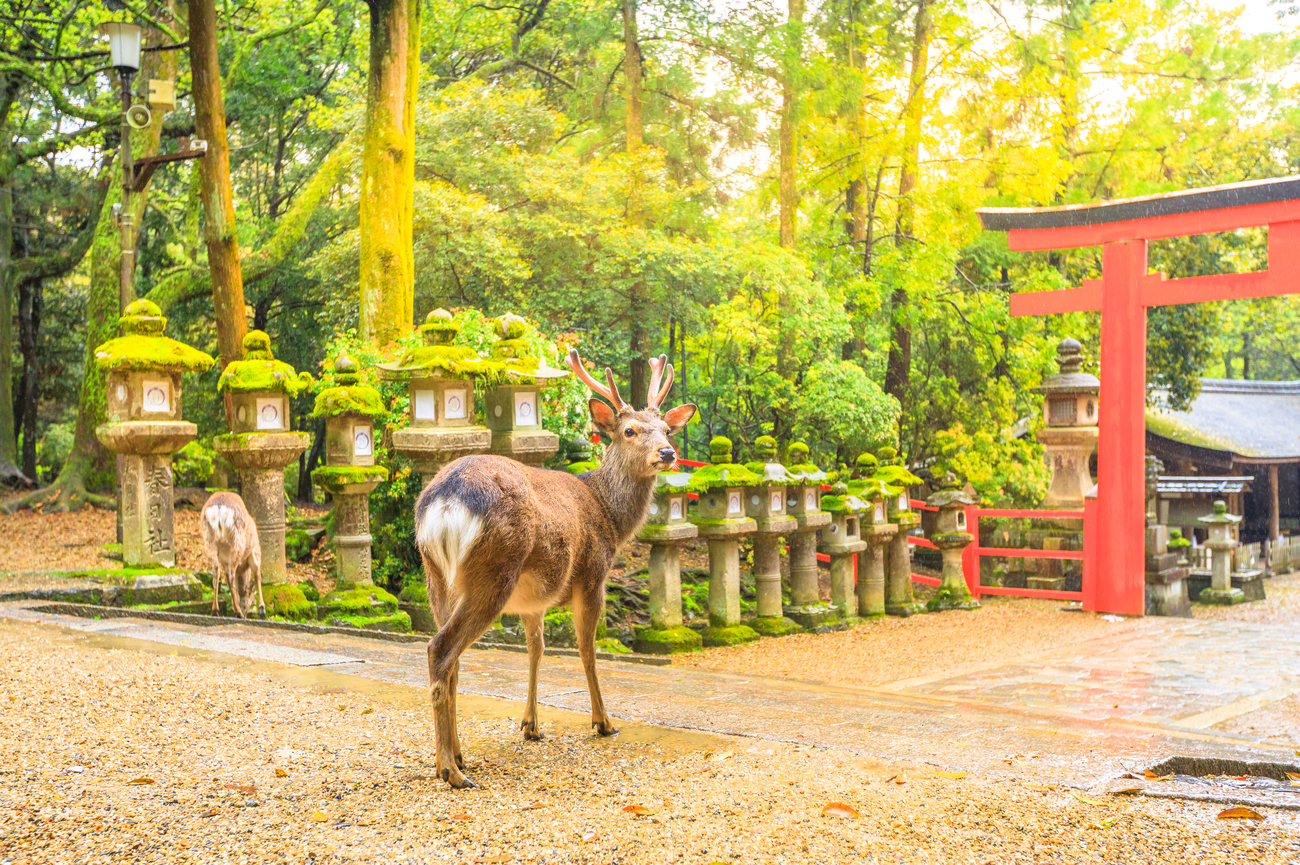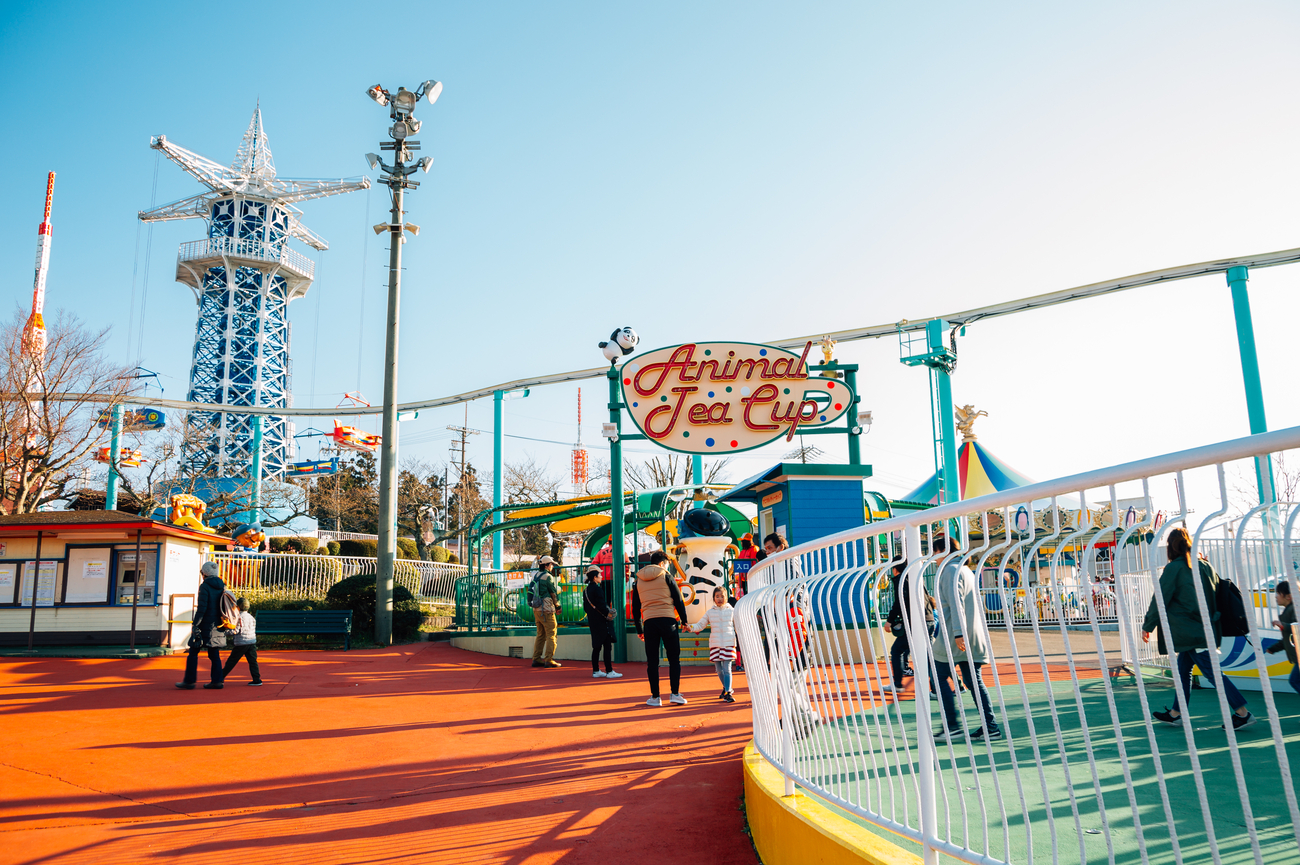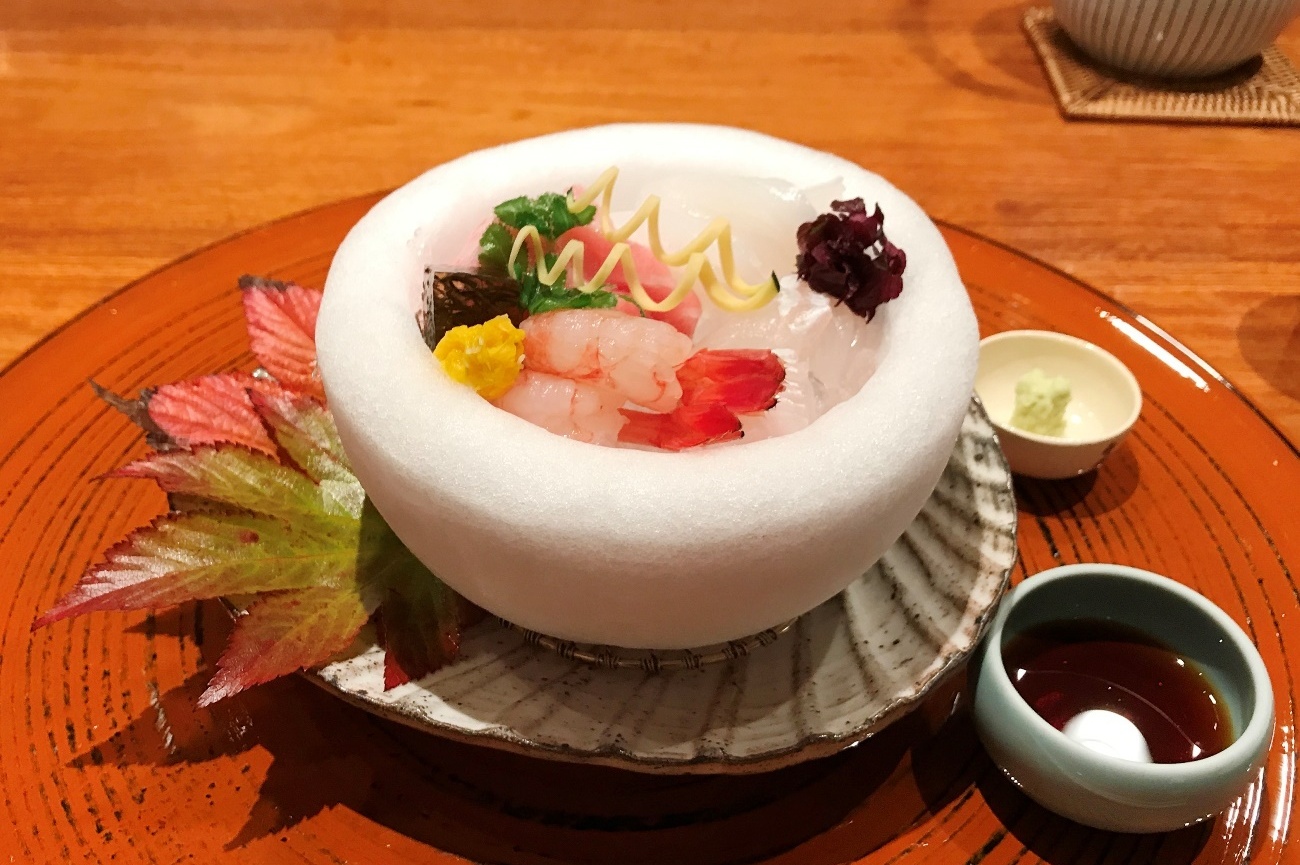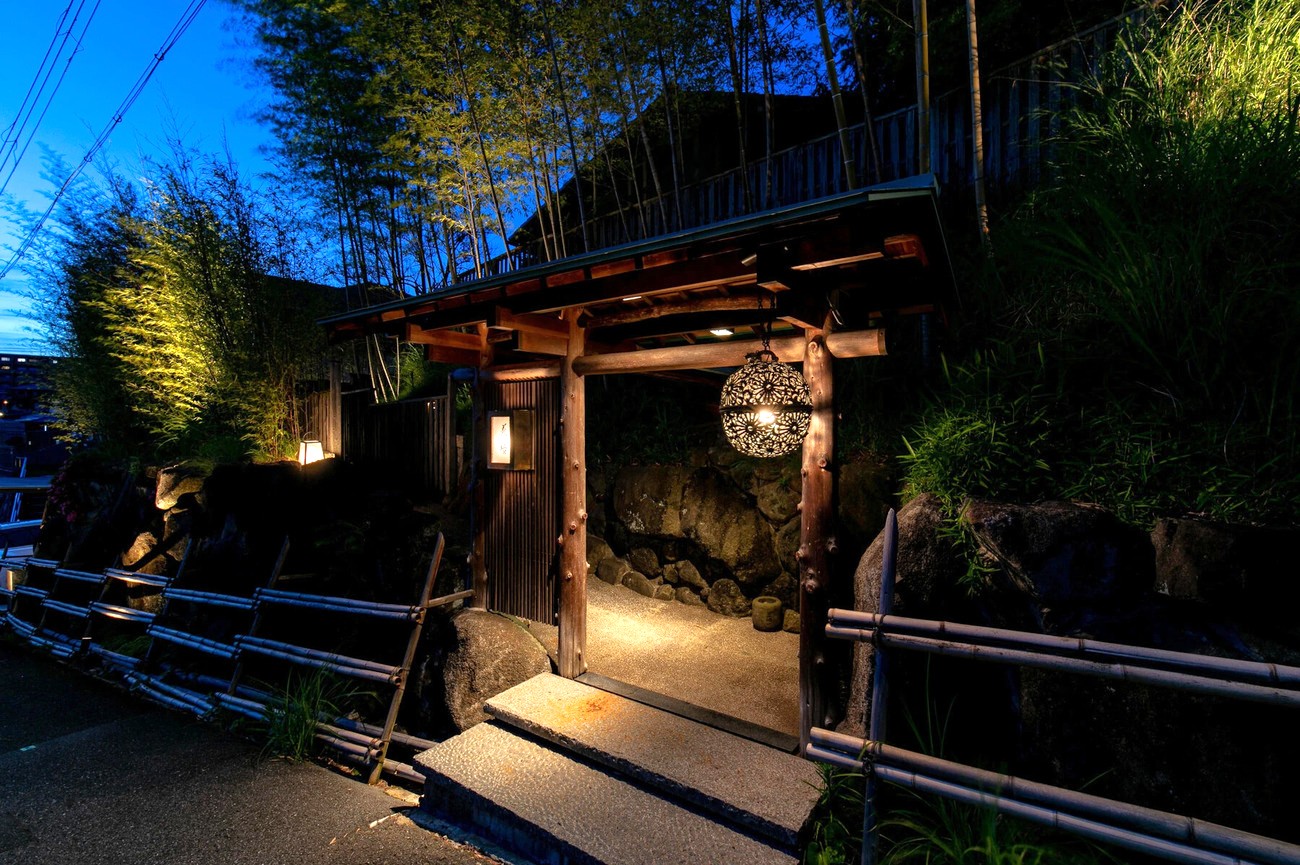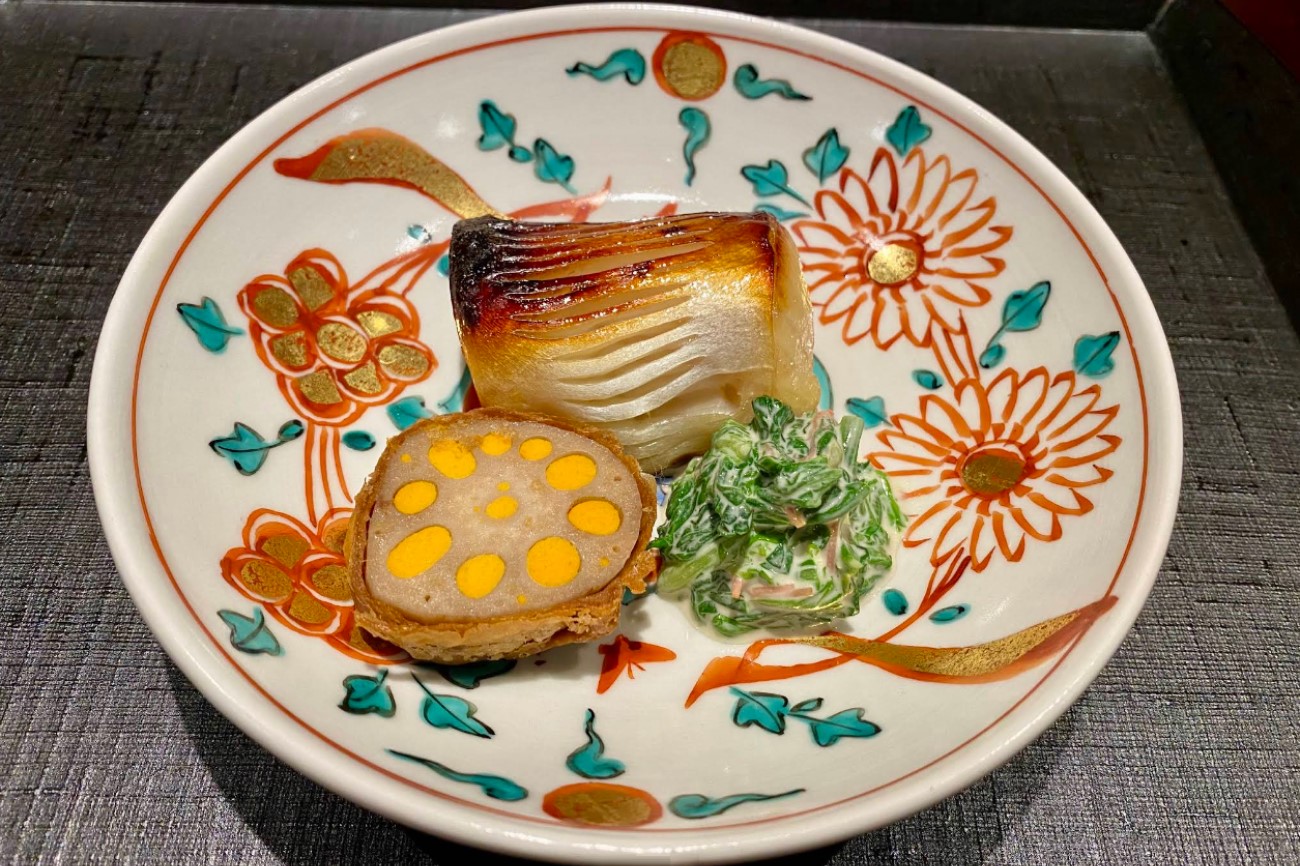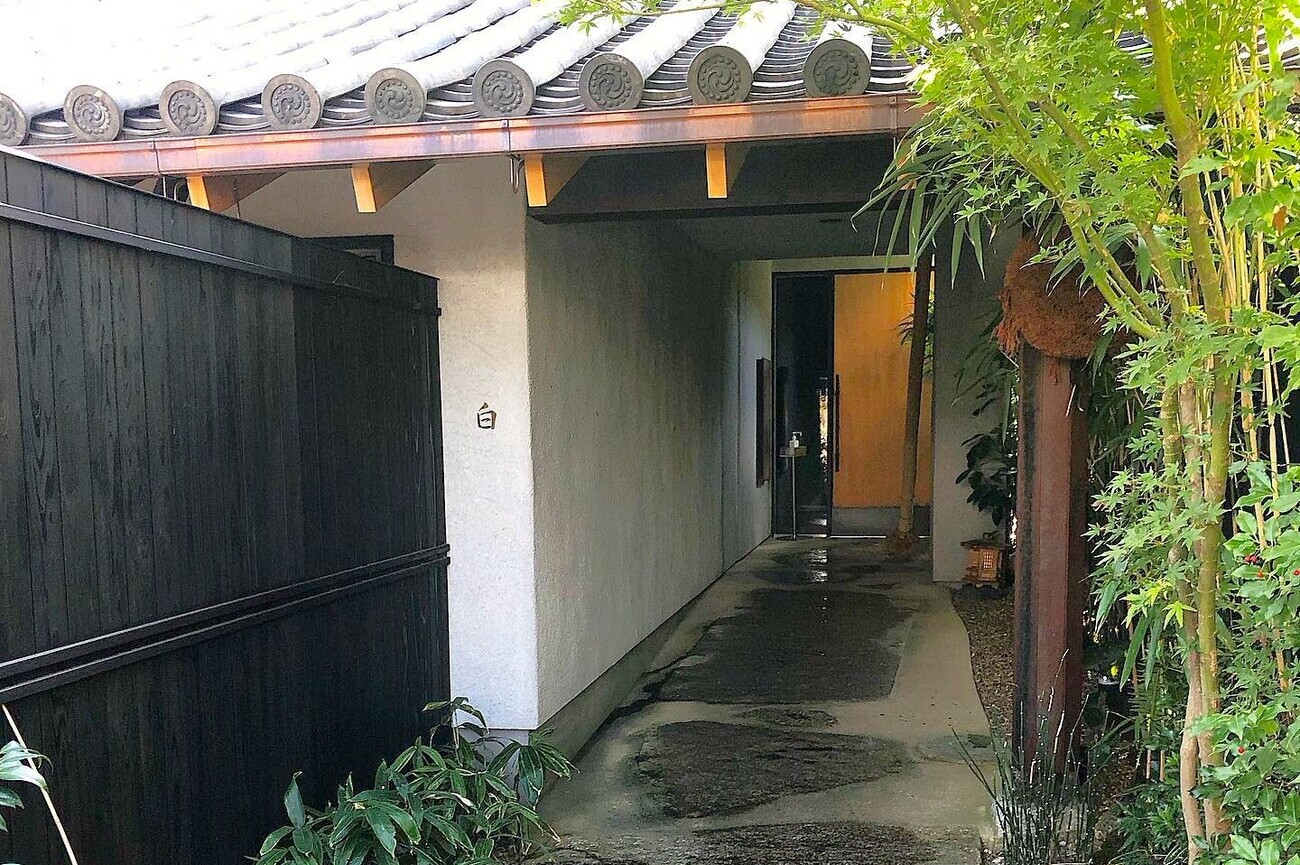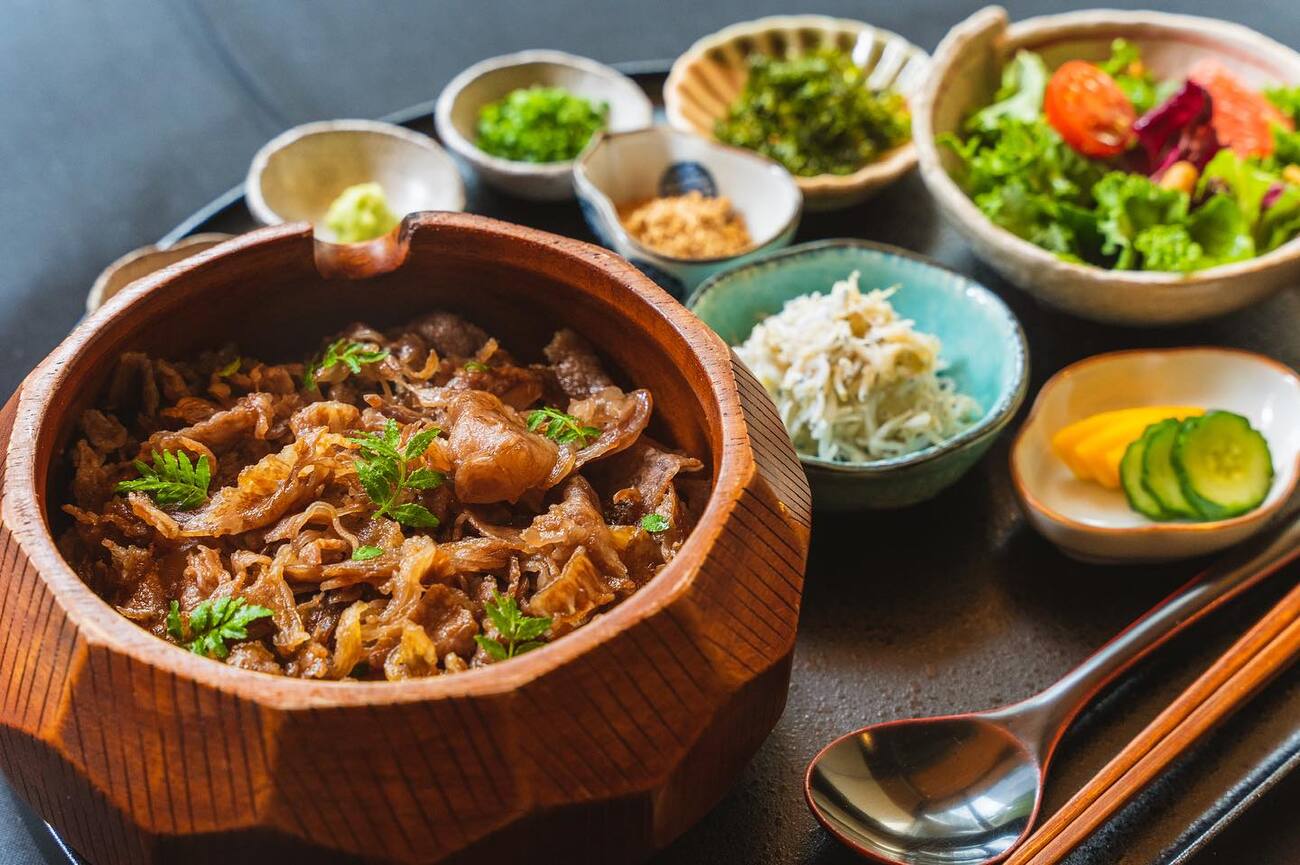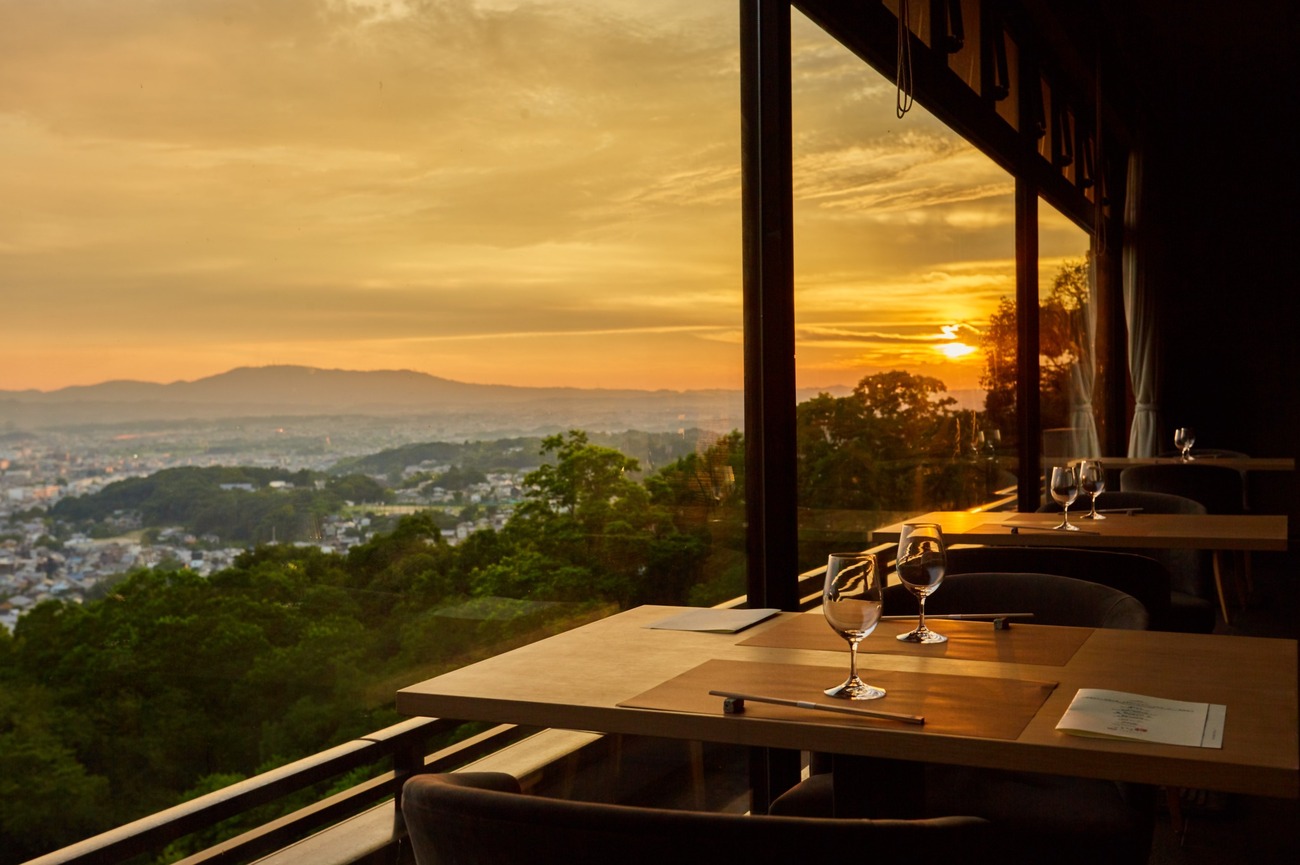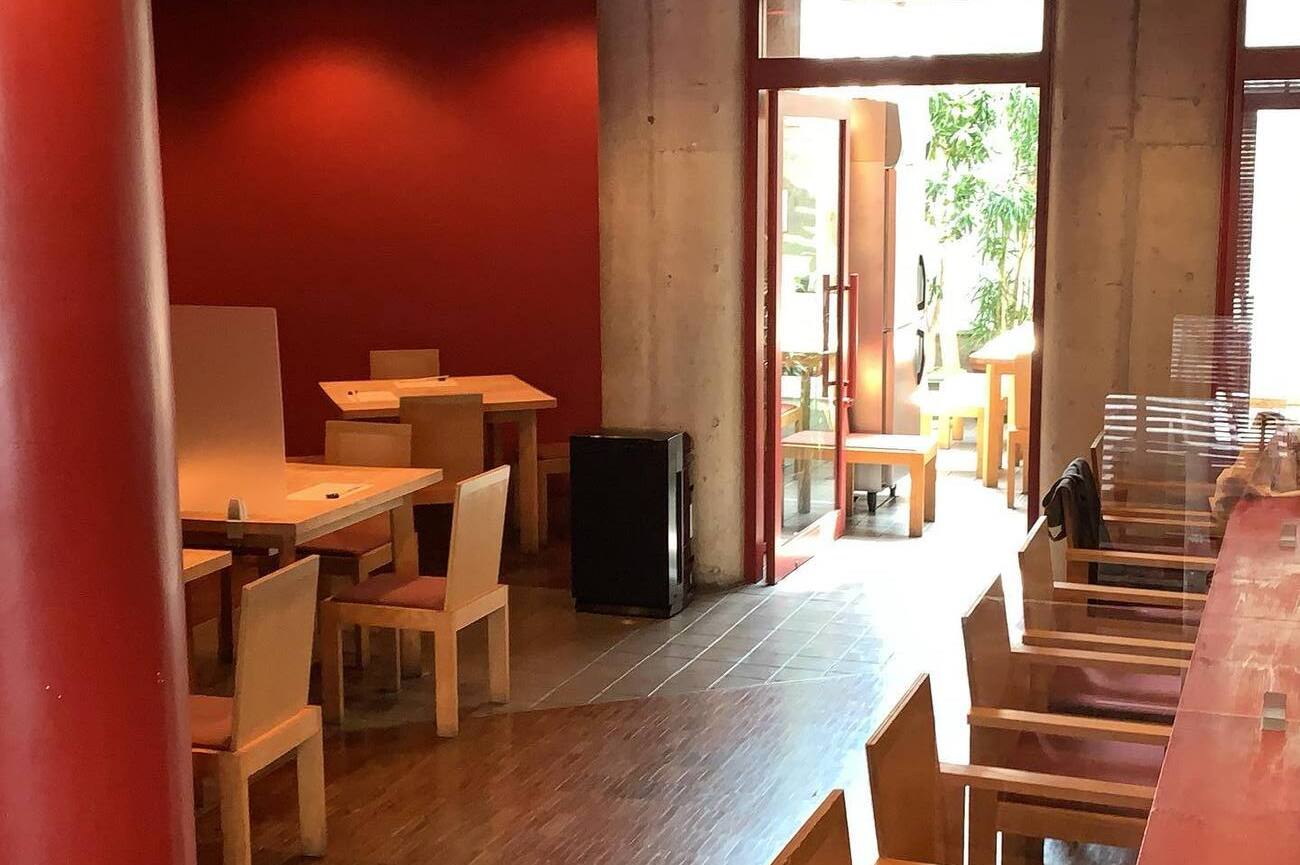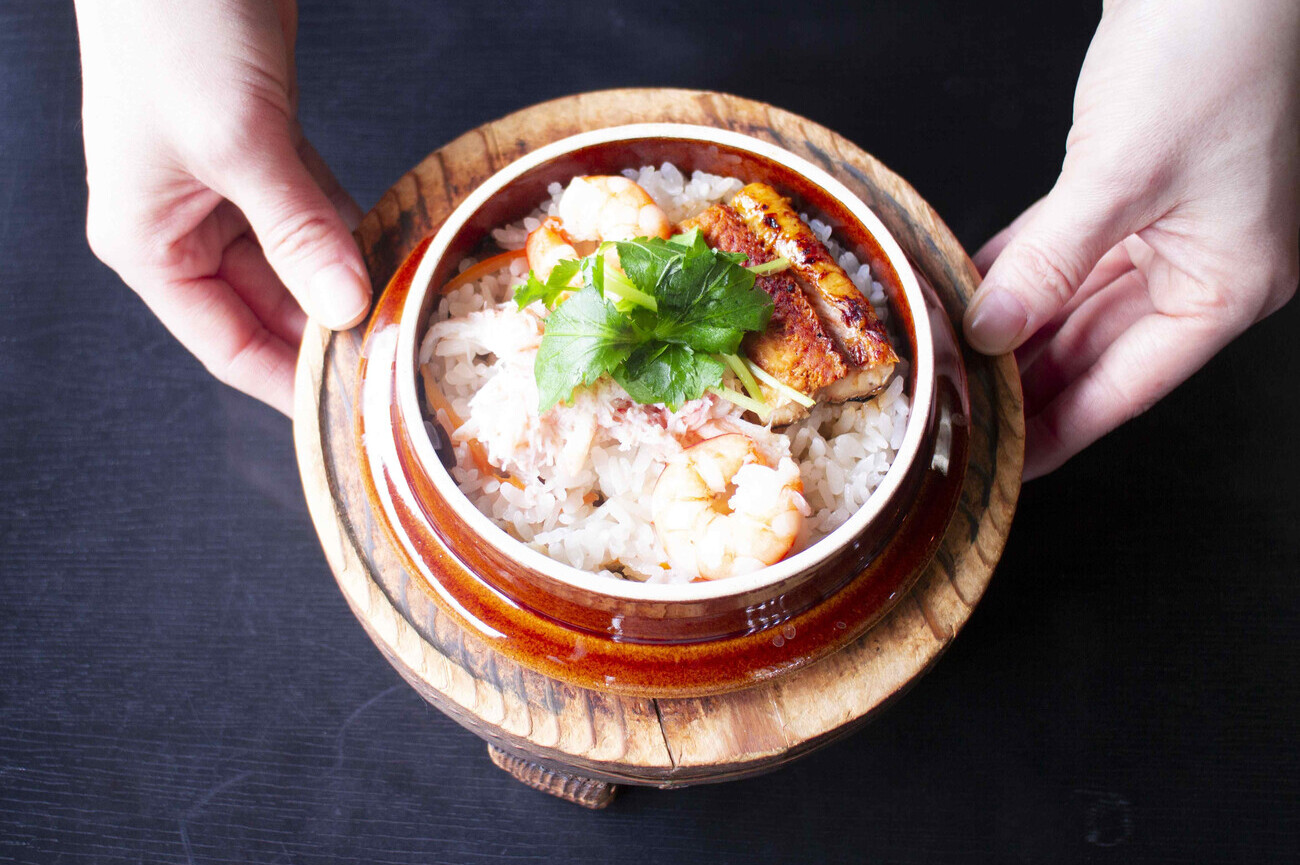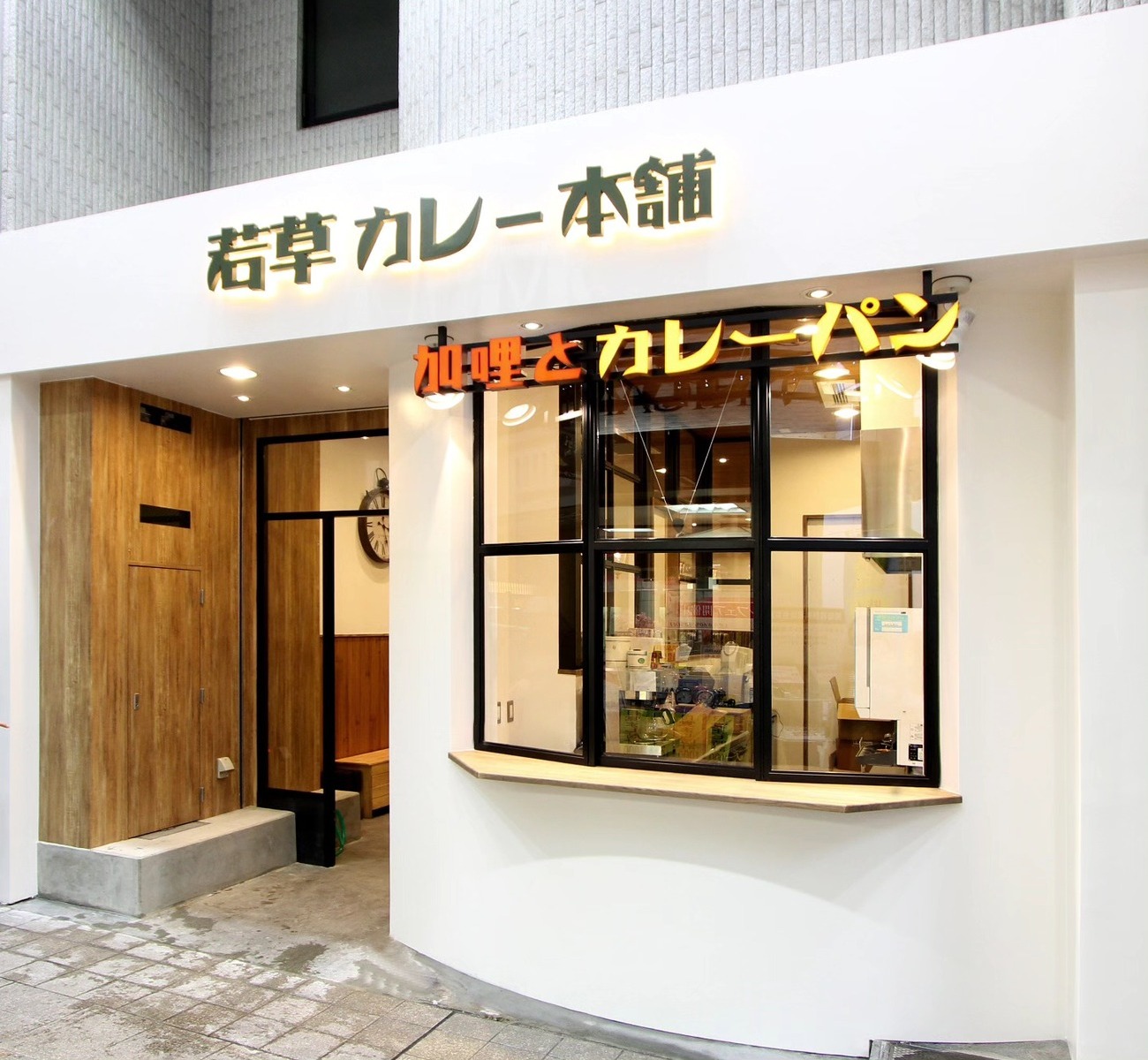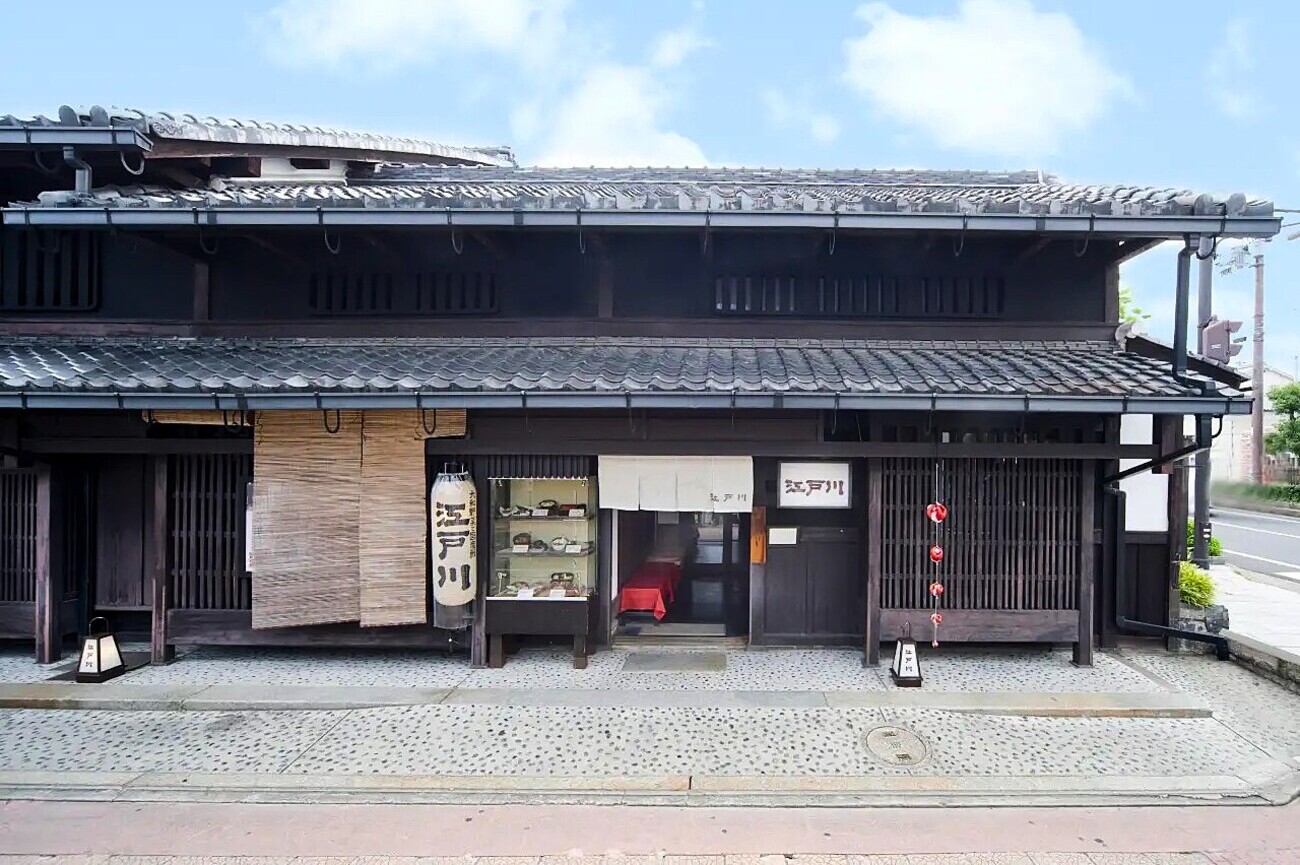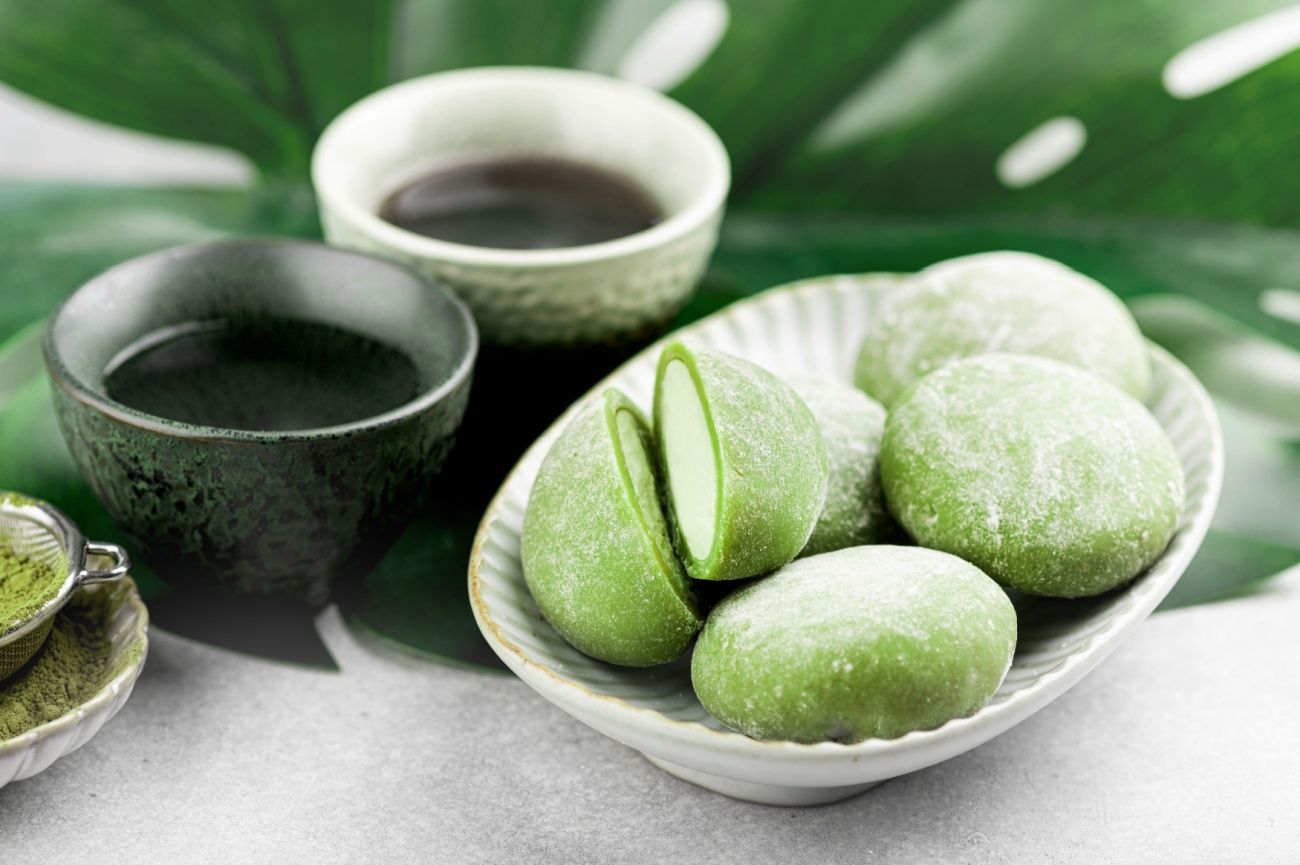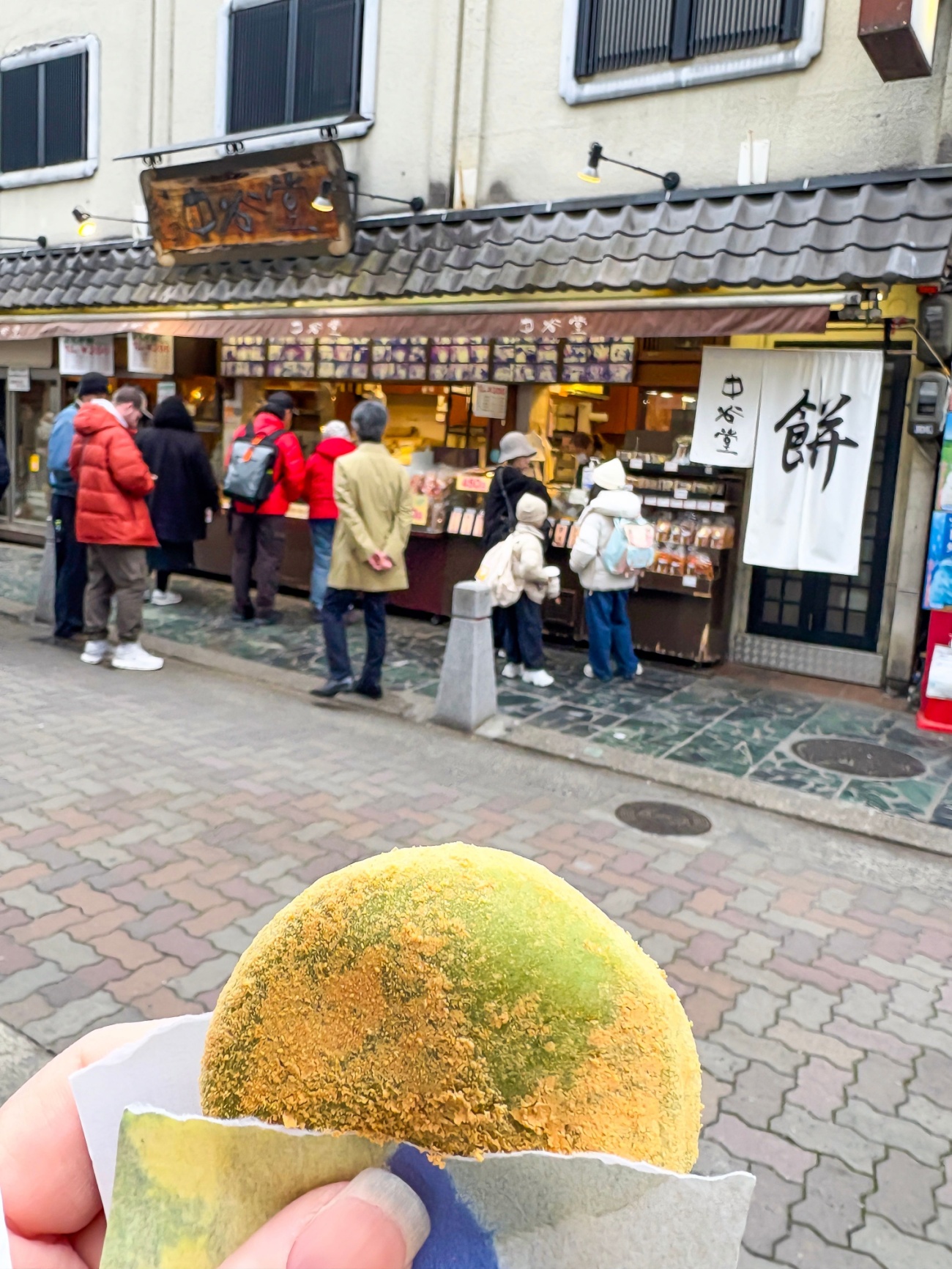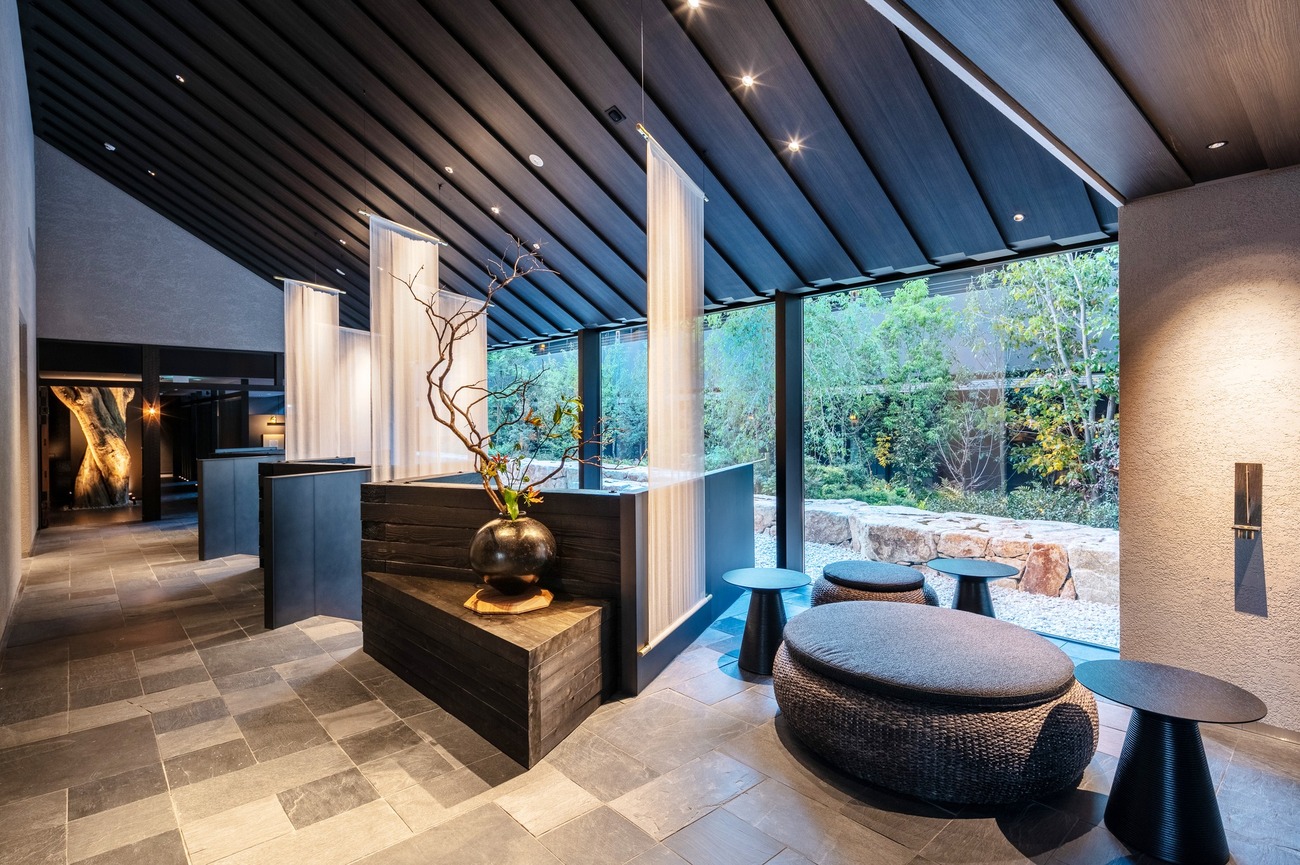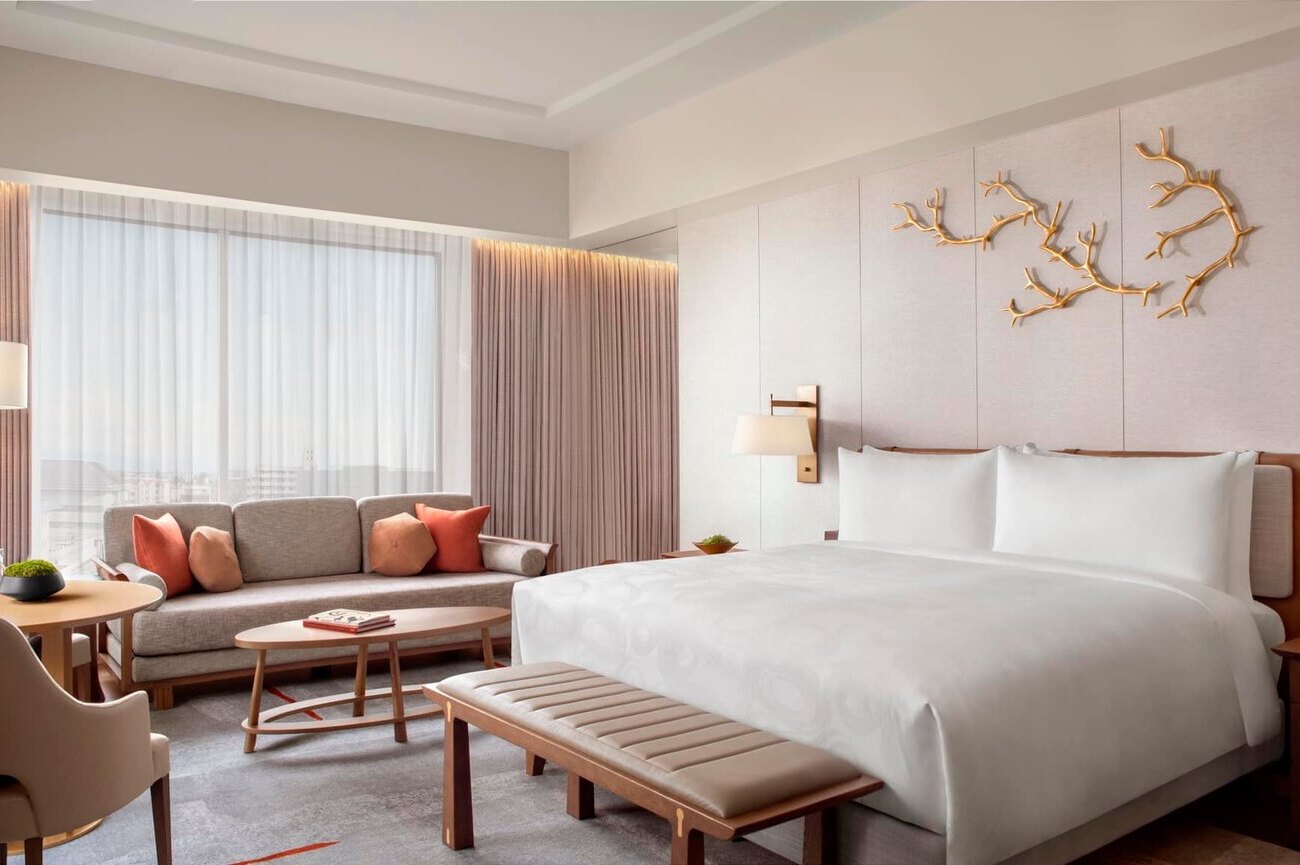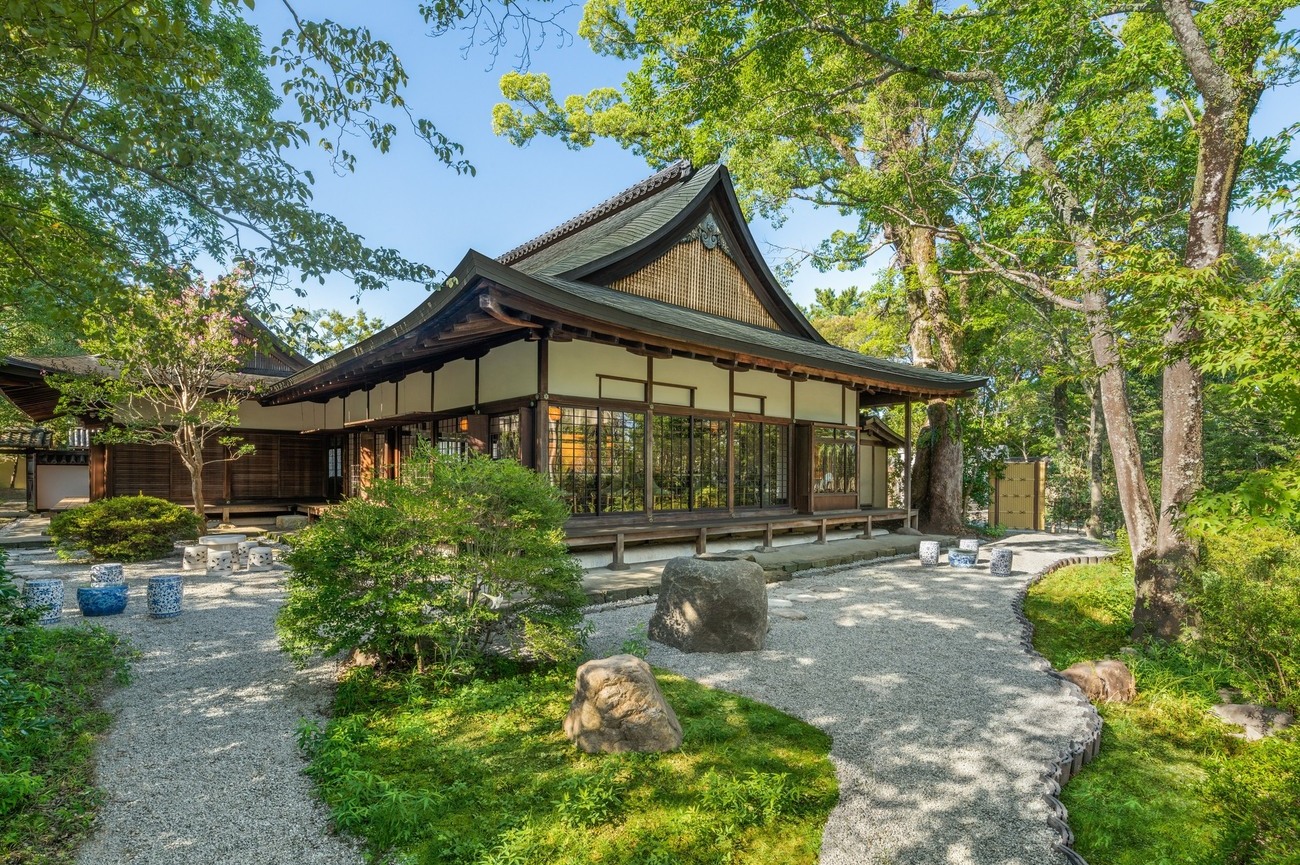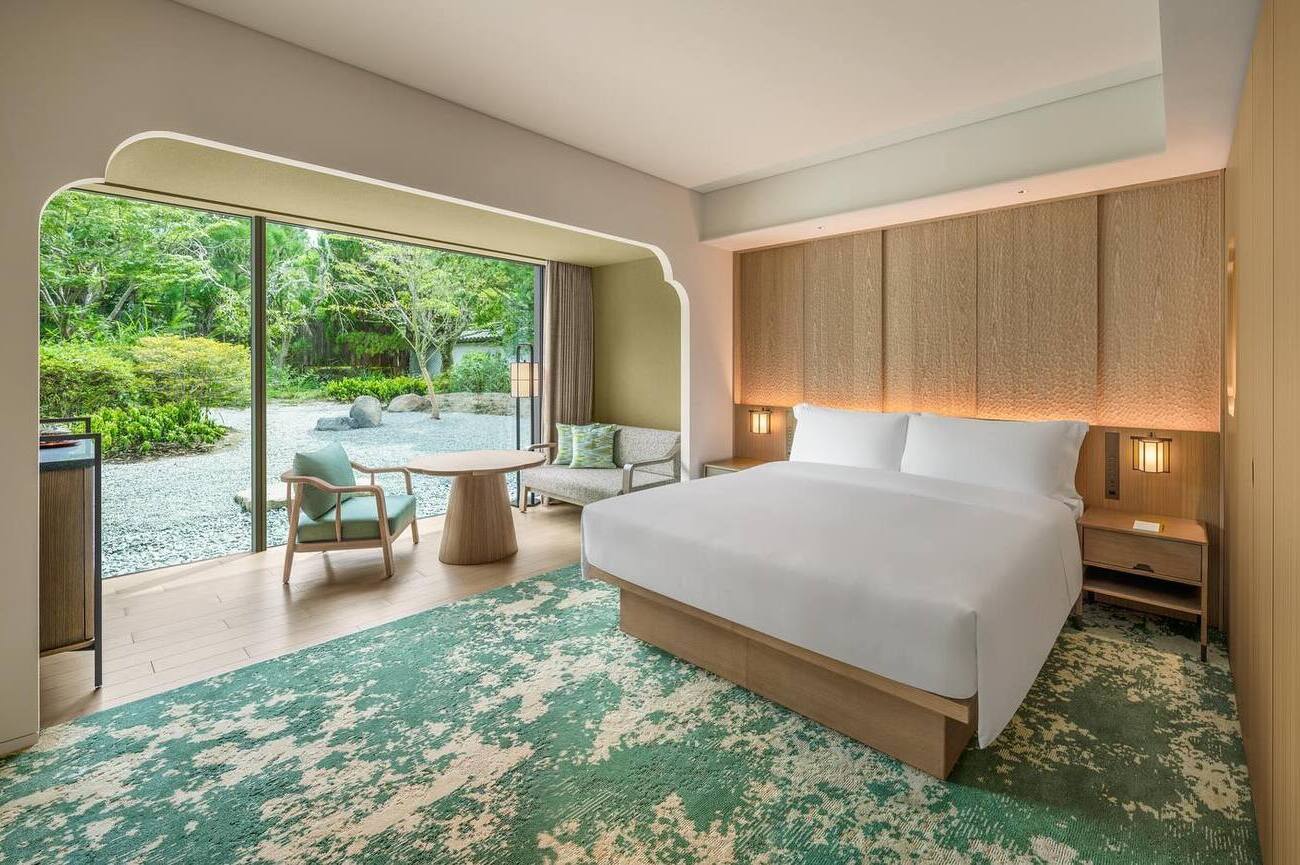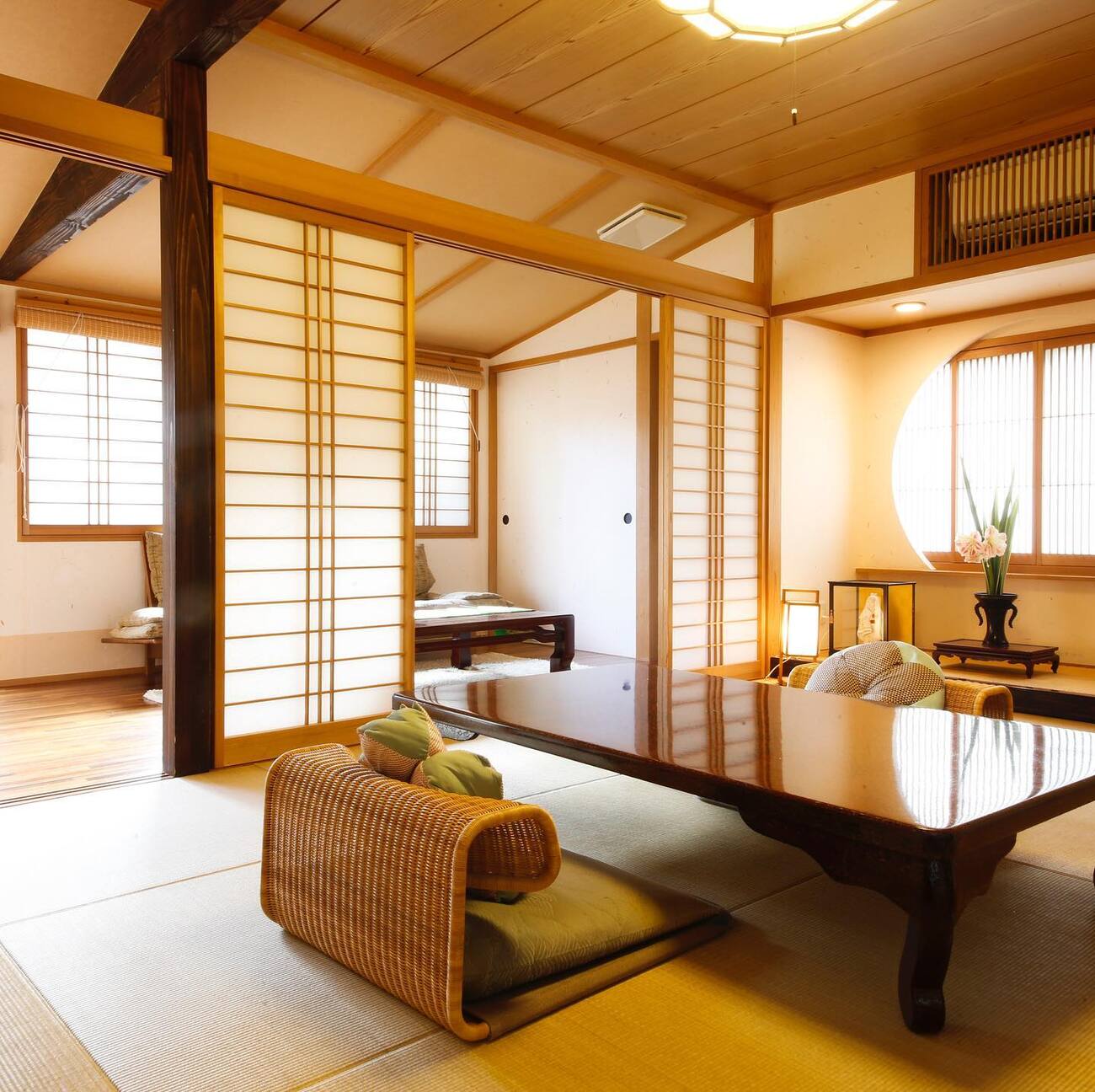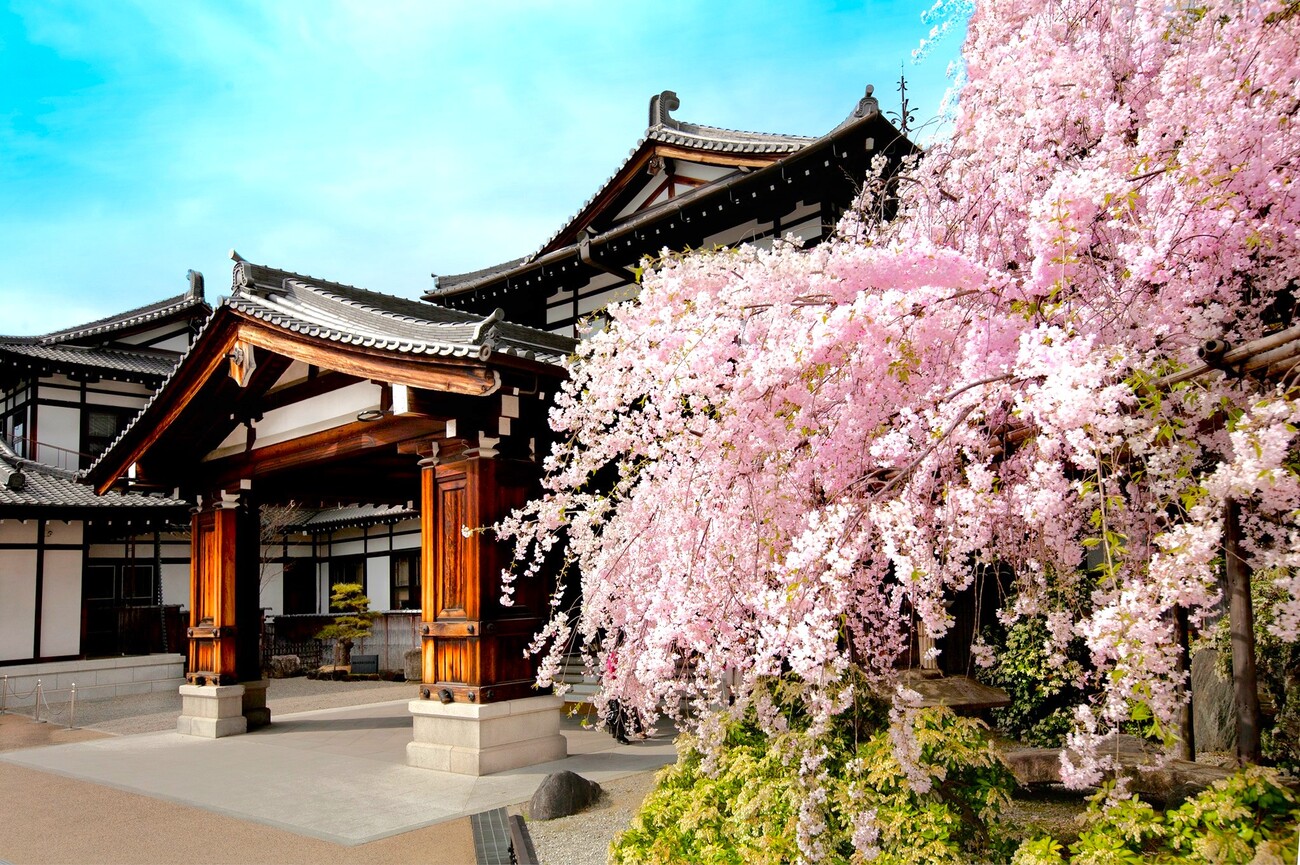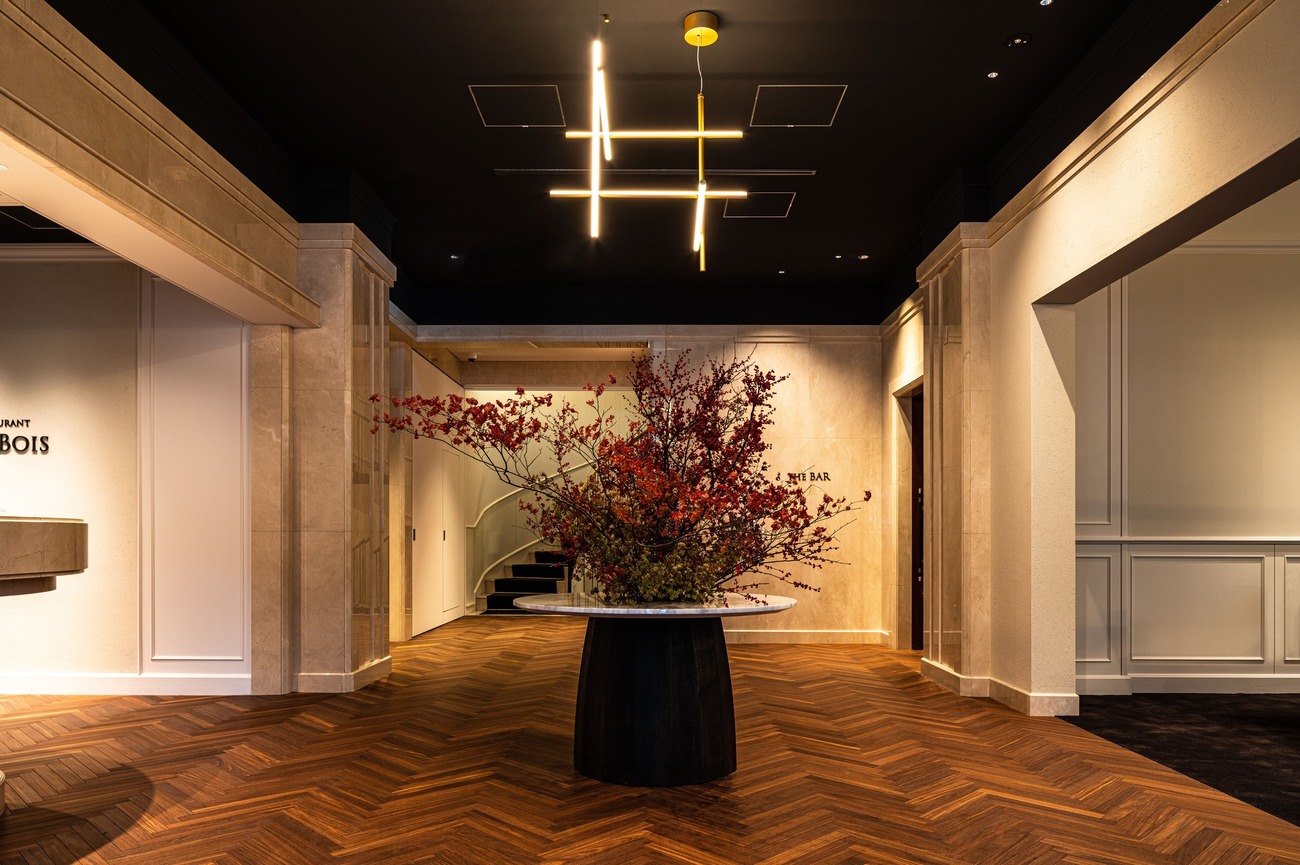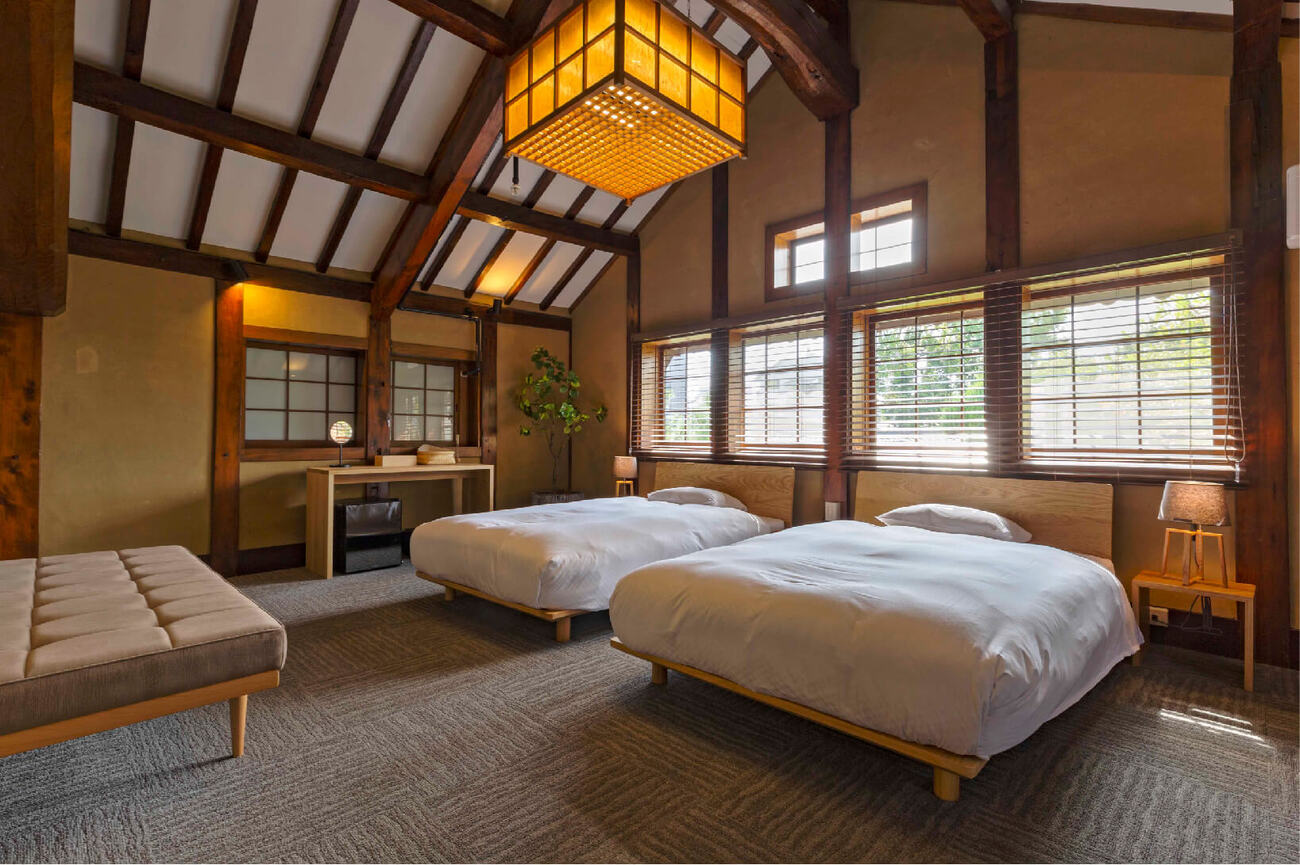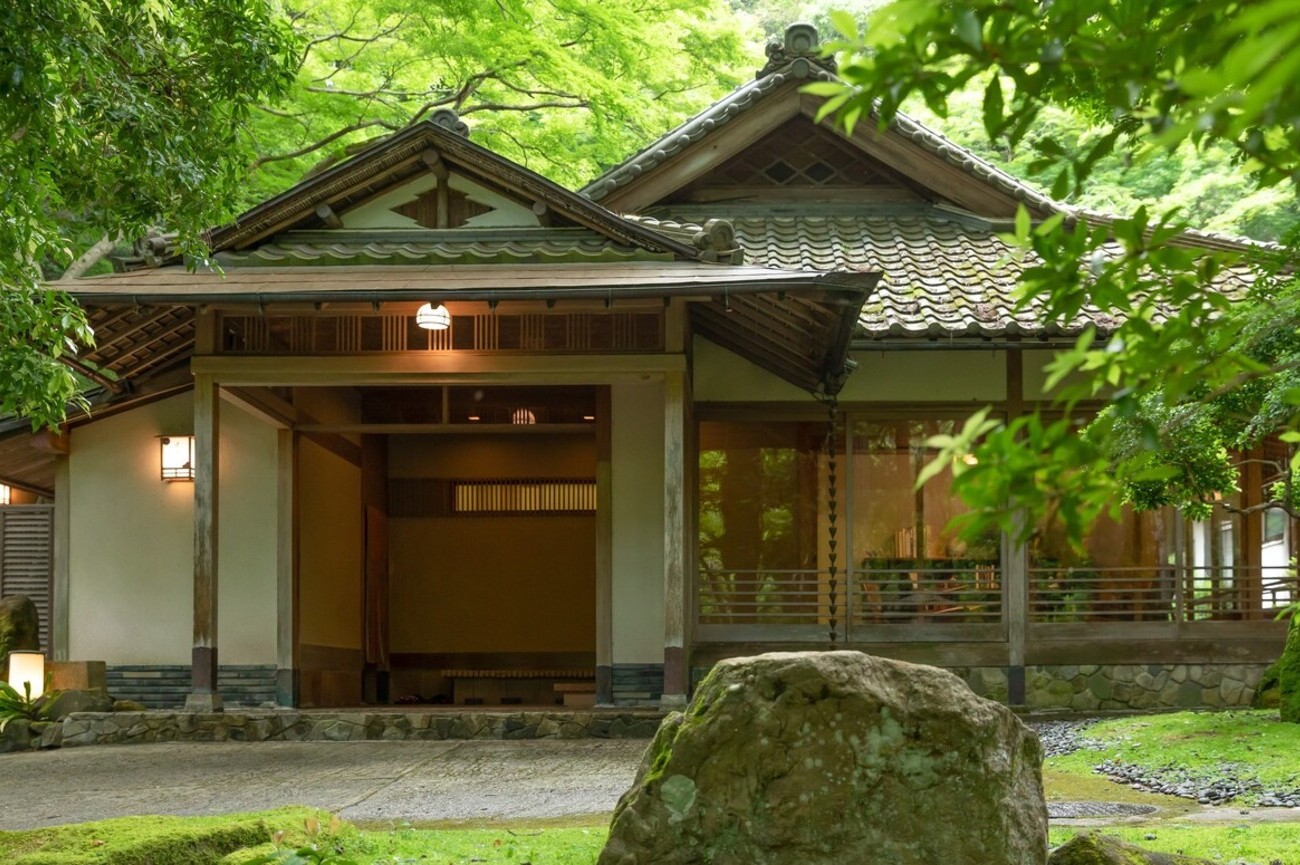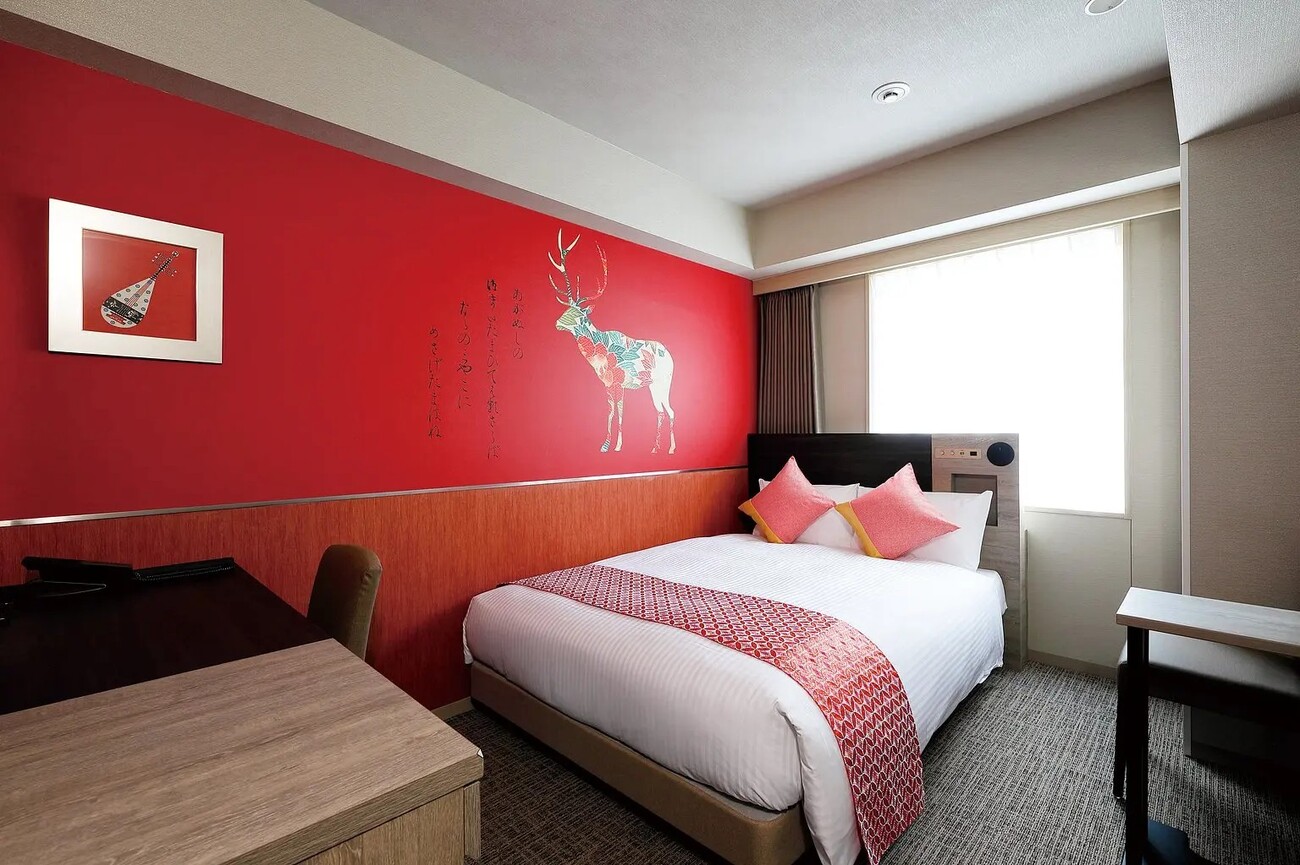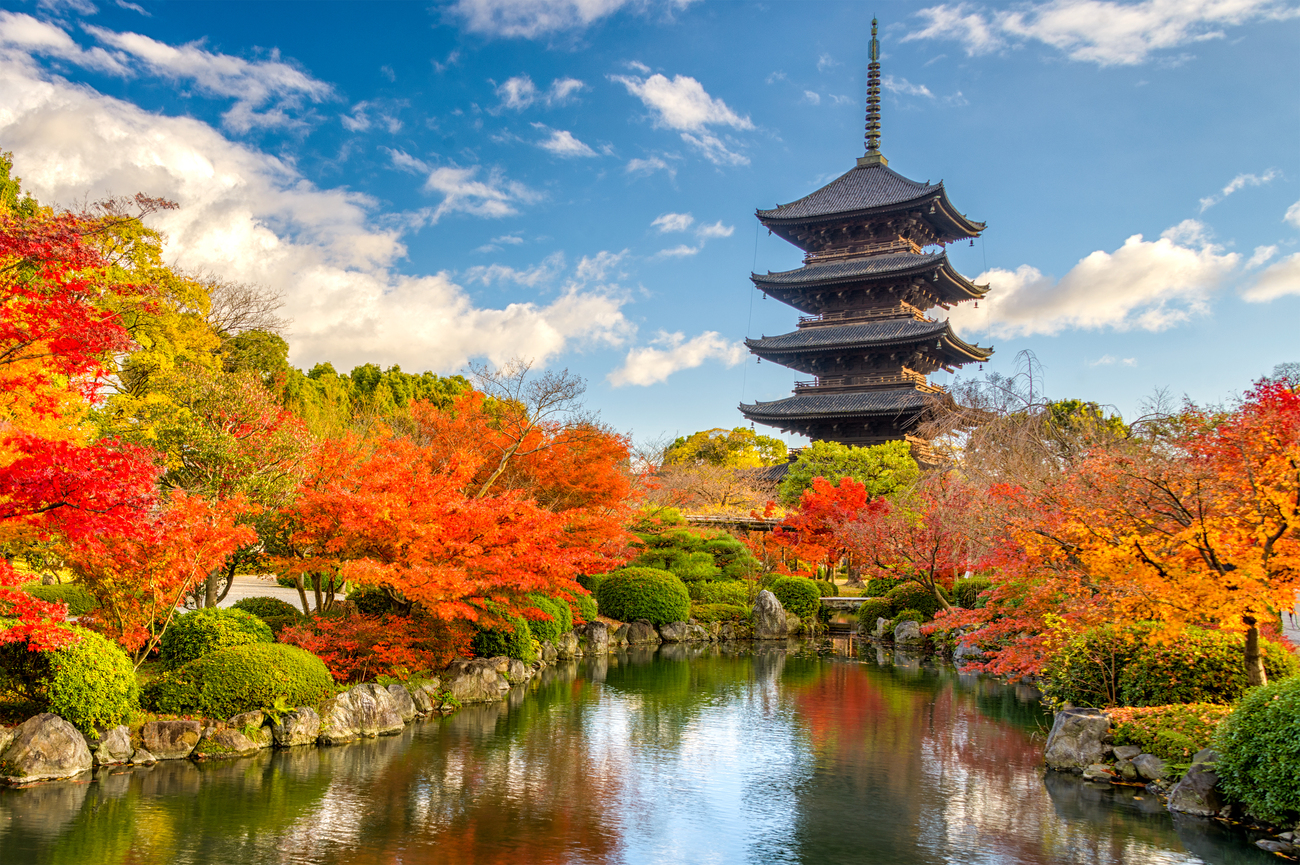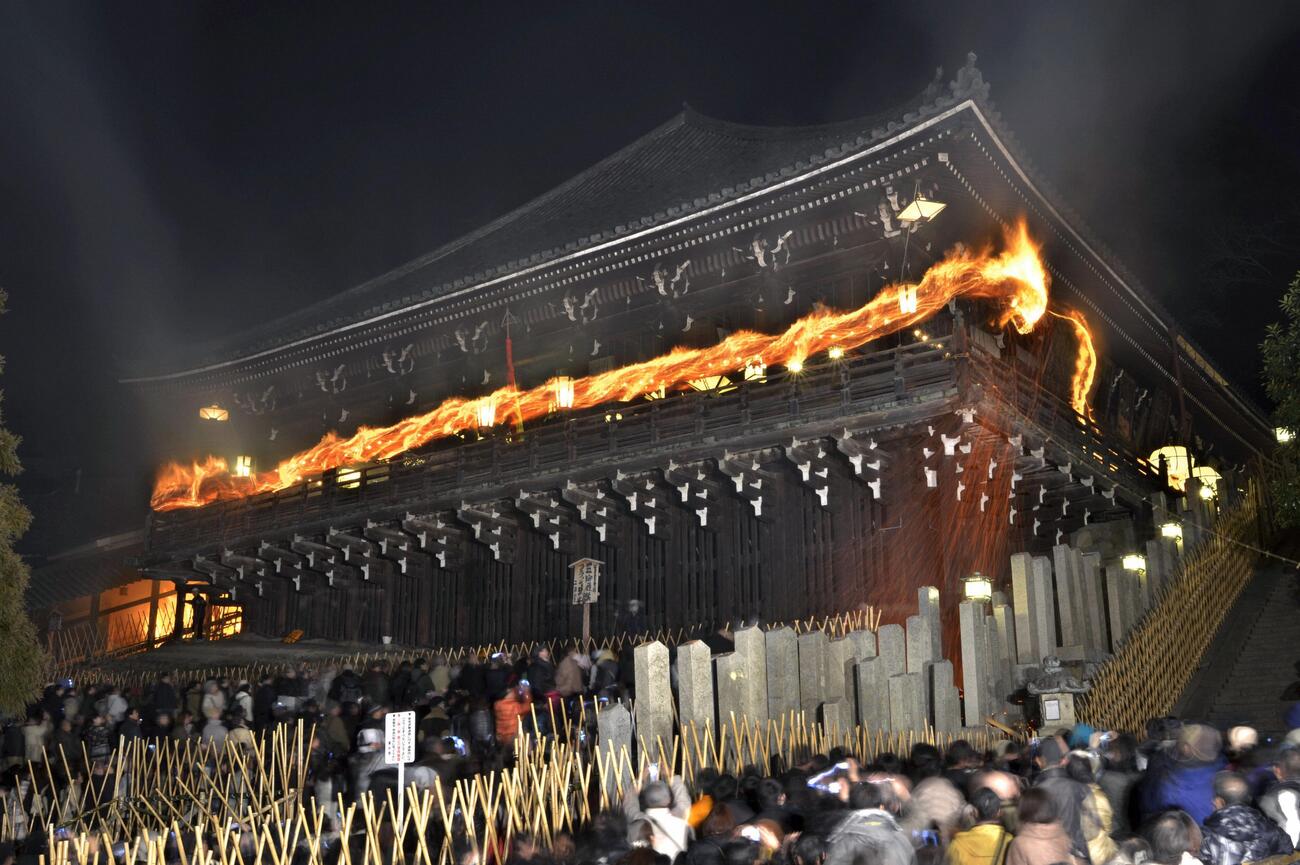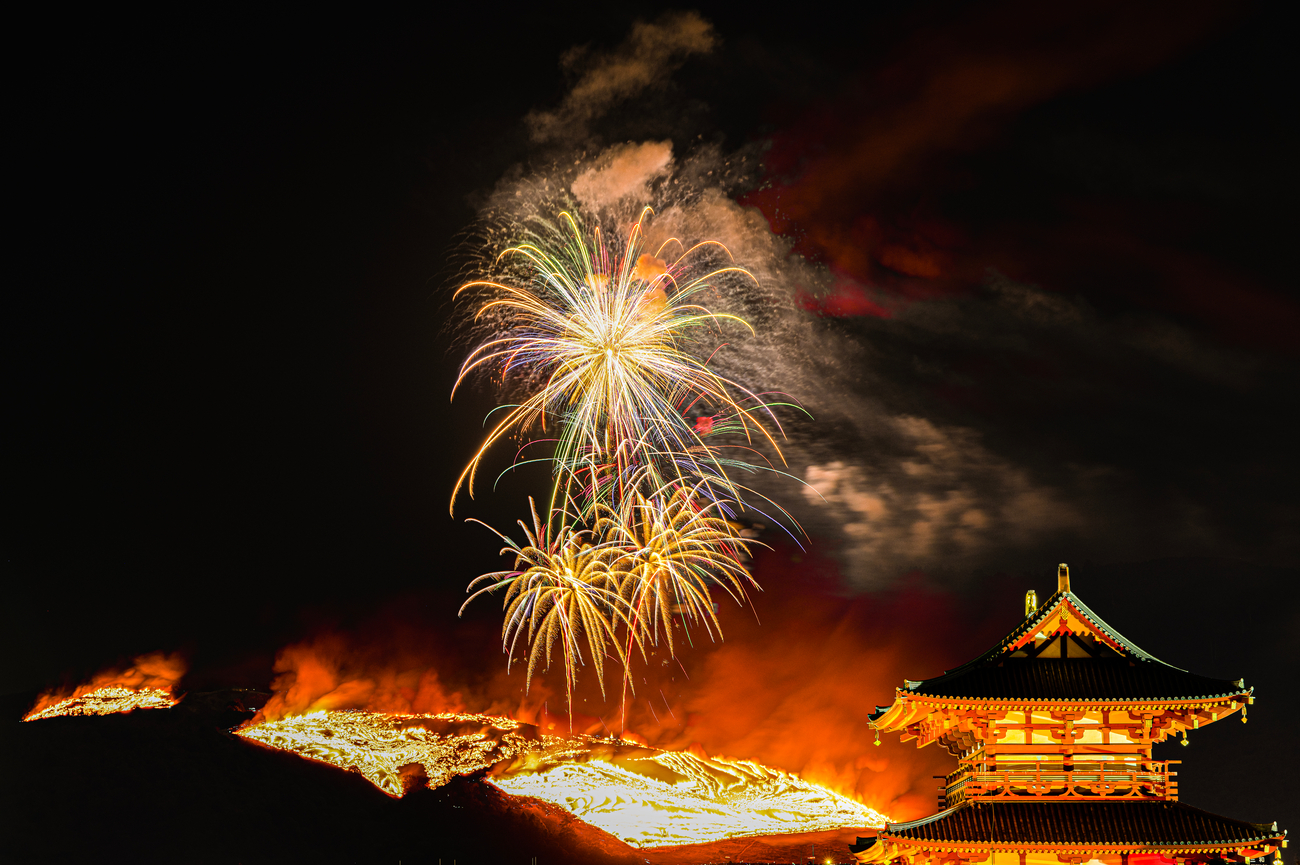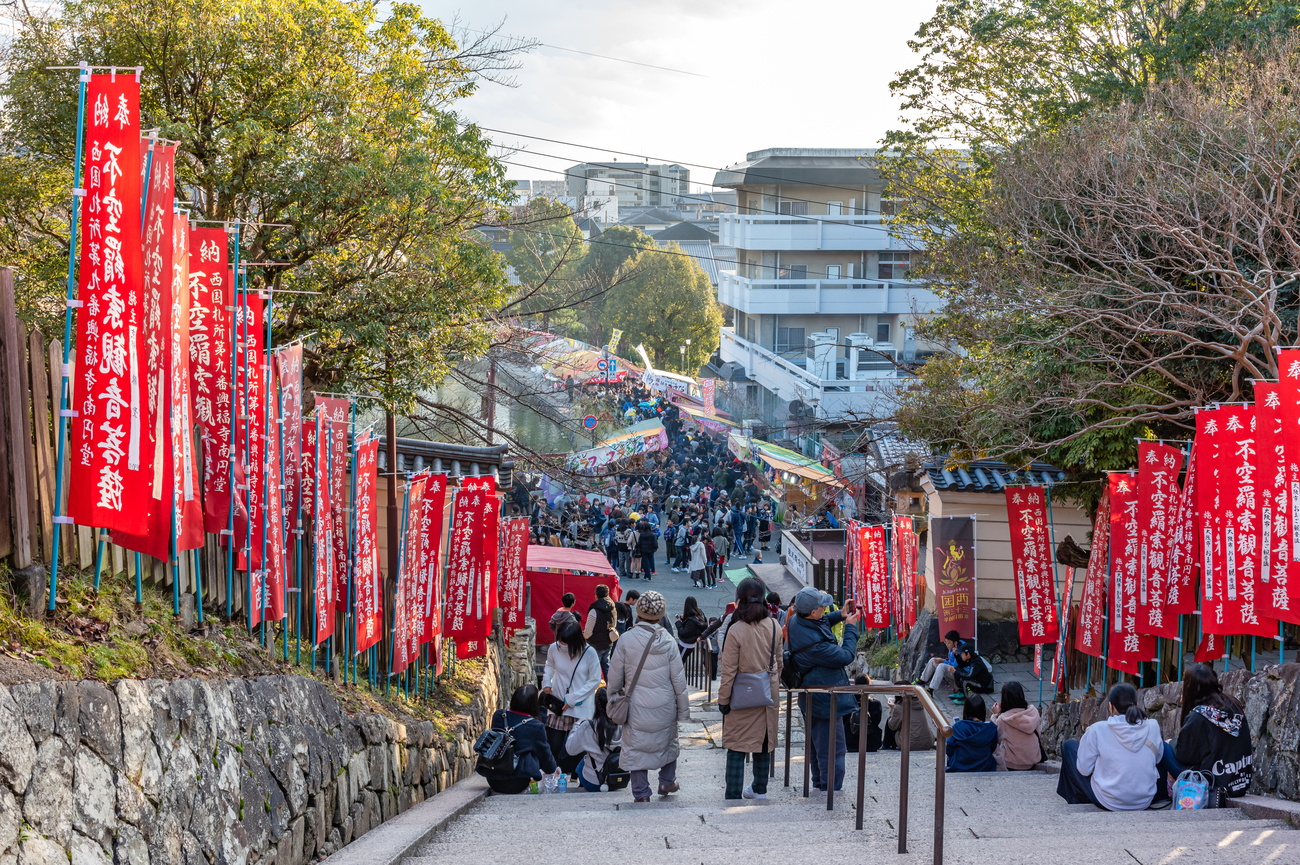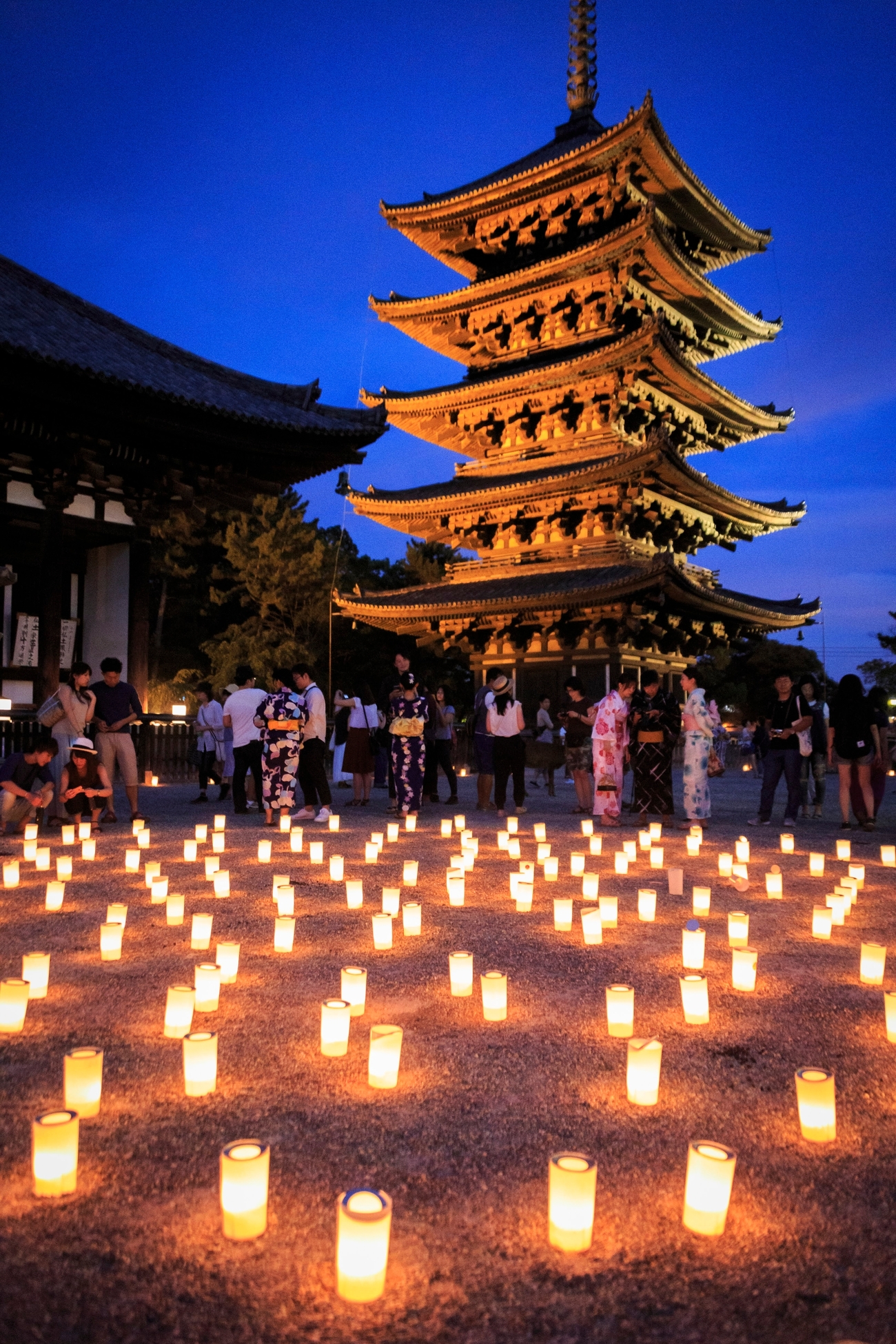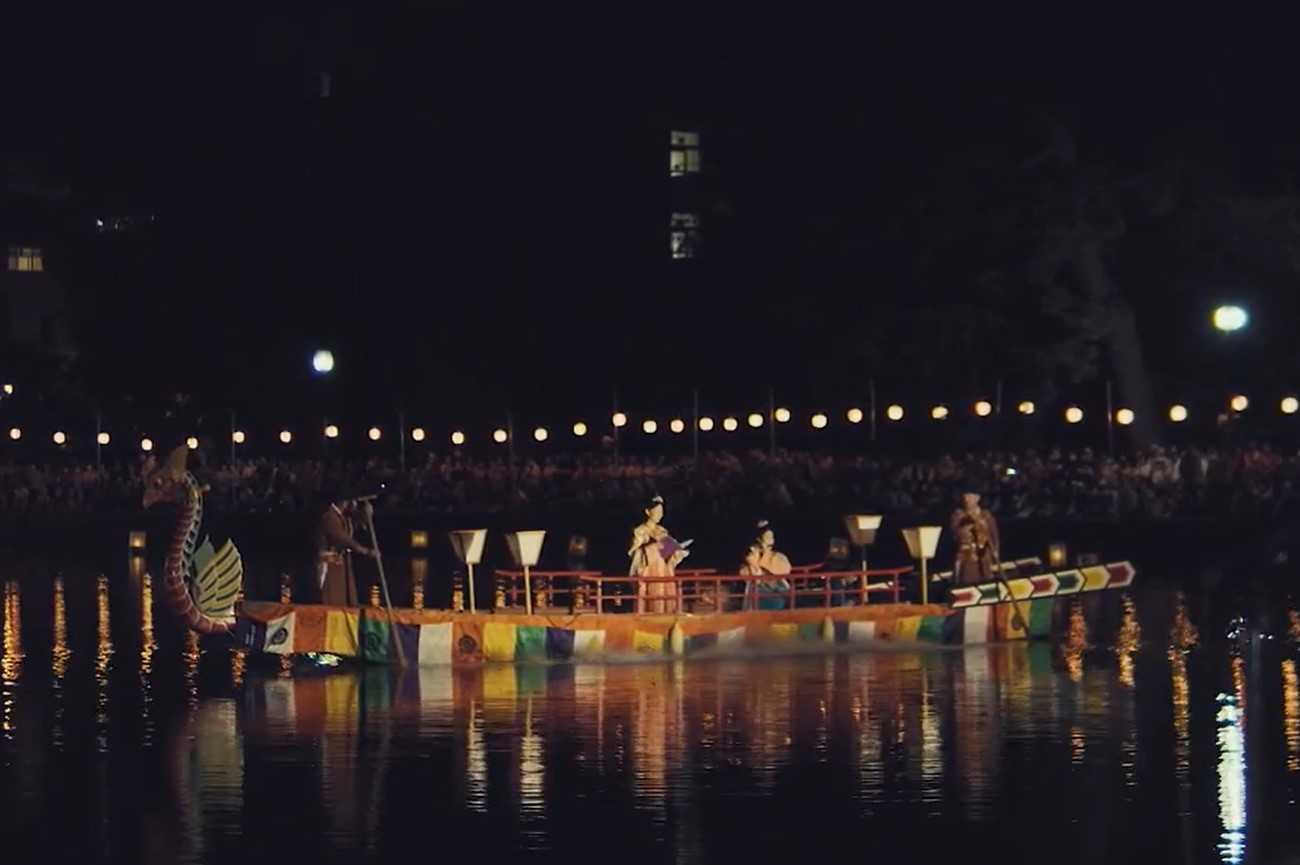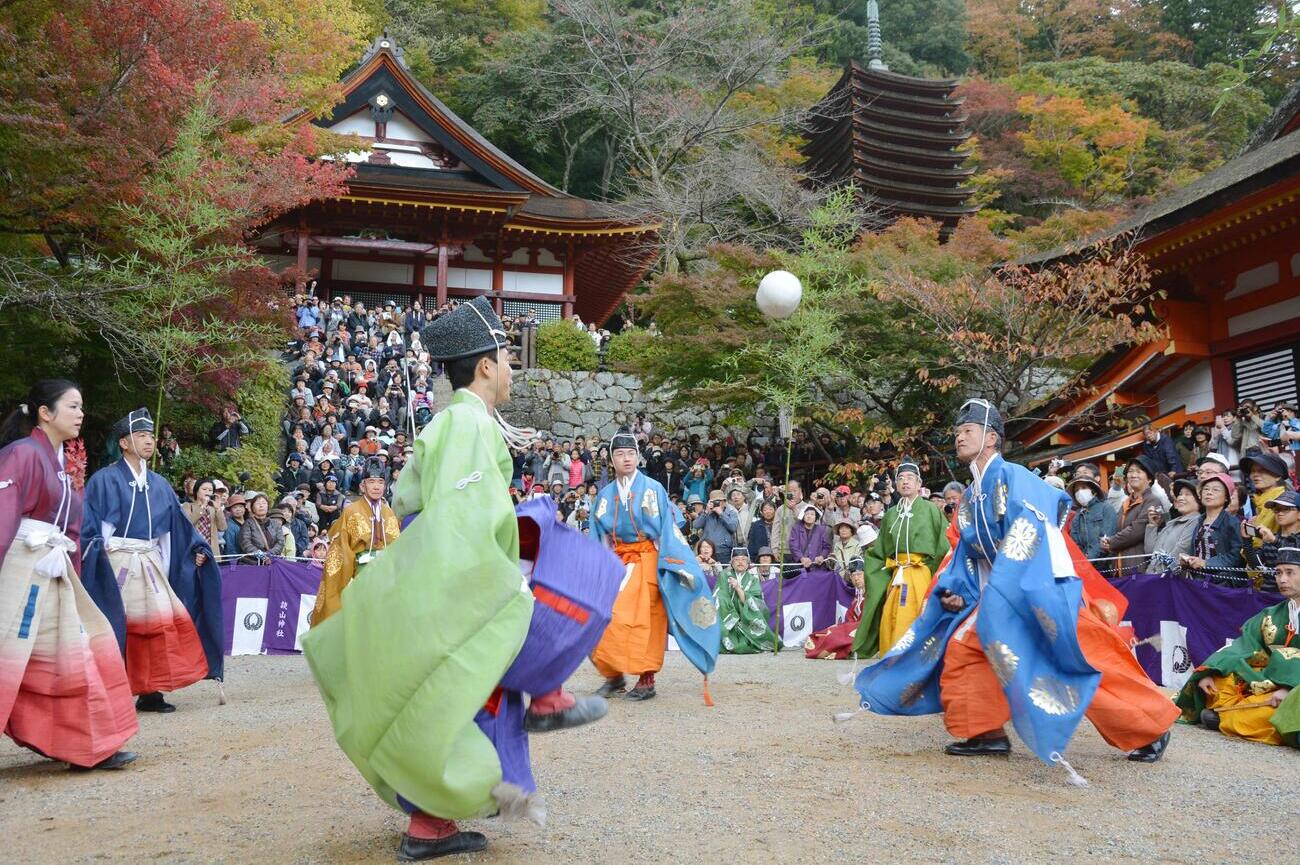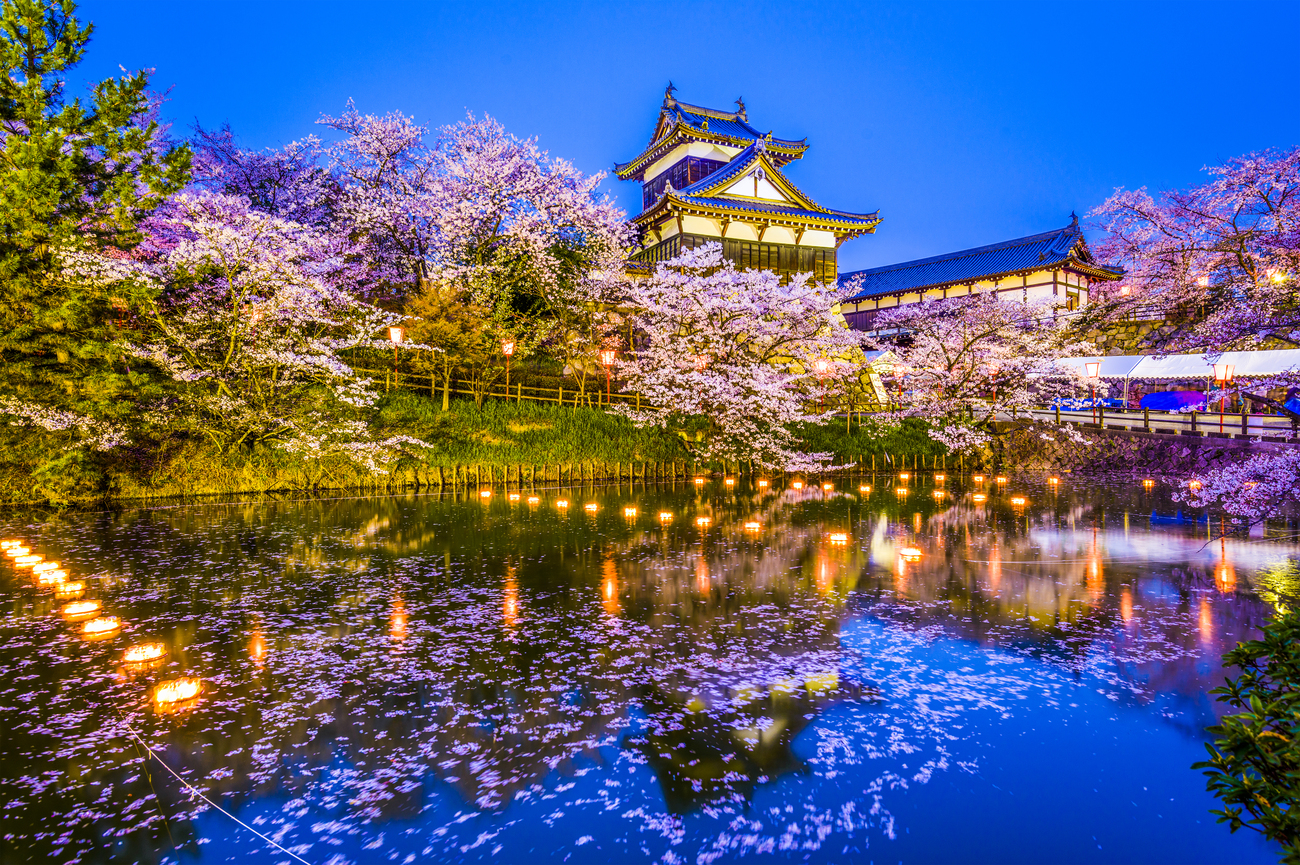Things to Do in Nara: 3-Day Itinerary
As Japan’s first permanent capital, Nara is not just historically significant, it is where Japan first defined itself. It was Nara that laid the foundation of what it means to be Japanese. Nowhere else can you wander through a primeval forest once walked by emperors, stand before the world’s largest bronze Buddha, or share a bow with sacred deer (believed to be messengers of the gods). Nara offers something rare and is home to eight UNESCO World Heritage Sites.
This three-day itinerary we curated just for you invites you to experience Nara through a local lens with timeless wonders you won’t find in any other city.
Let’s begin your journey to the birthplace of Japan’s cultural soul.
Day 1

Morning: Nara Park
Begin your Nara journey to the threshold to many of Nara’s cultural treasures, Nara Park. This iconic park is home to over 1,000 sacred sika deers roaming freely under cherry trees and cedars. The deers are believed to be messengers of the gods, and it’s customary to bow before offering them the special deer crackers (shika senbei) sold nearby.
Wear comfortable shoes, and keep your hands free as the deer can be enthusiastic dining companions.
Tōdai-ji Temple
Just a short walk from the park is Tōdai-ji Temple, home to the Great Buddha (Daibutsu), a huge bronze statue housed within the world’s largest wooden building. Stand in silent awe as you take in this eighth-century wonder, commissioned by the 45th emperor of Japan, Emperor Shōmu, as a symbol of national unity.
Isuien Garden & Neiraku Museum
Next is one of Nara's finest strolling gardens, Isuien. Its name means “garden founded on water,” and its ponds, stone lanterns, and occasional views of Mount Wakakusa creates a relaxing vibe perfect for strolling or meditating. Inside the Isuien Garden is Neiraku Museum, the museum displays more than two thousand art objects such as ceramics and artefacts, they were curated by the Nakamura family.
Day 1, Morning - Nara Tour
Map
Afternoon: Yoshikien Garden
Continue your afternoon still in the vicinity of Nara Park. Just a few steps away lies a hidden gem that’s often overlooked, Yoshikien Garden. Named after the Yoshikigawa River that flows beside it. What makes Yoshikien so special is its three unique gardens: pond garden, moss garden, and tea ceremony garden.
Kasugataisha Shrine
Next, take an 8-minute walk to Kasugataisha Shrine, a UNESCO World Heritage Site, founded in 768. Over 3,000 stone and bronze lanterns light the way of this Shinto shrine, it’s especially magical during the Mantōrō Lantern Festivals that happens every February 3rd of the year and August 14th and 15th.
Nara National Museum
Your first day in Nara ends with a visit to the Nara National Museum. The museum is famous for its collection of Buddhist art and iconography. Founded in 1889, the museum features a Meiji-era Western-style façade and modern East and West Wing. Best to visit in autumn during the Shōsō-in Exhibition, where rare imperial treasures from the 8th century are displayed for just a few weeks each year.
Day 1, Afternoon - Nara Tour Map
Day 2

Morning: Horyu-ji Temple
Venture out early to the outskirts of Nara to visit Hōryū-ji Temple, the world’s oldest surviving wooden structure and a UNESCO World Heritage Site that predates even the founding of Kyoto. Founded in 607 CE by Prince Shōtoku, the temple complex is a testament to the dawn of Buddhism in Japan. Its pagoda, golden hall, and galleries preserve over 2,000 national treasures.
Yakushi-ji Temple
Next, take a 28-minute drive to explore Yakushi-ji. Built in the late 7th century by Emperor Tenmu as a prayer for the recovery of his consort’s illness, it’s known as the Temple of the Medicine Buddha. The temple was built in the Fujiwara-kyo capital and later moved to its current location in Nara in 718. The East Pagoda (Tôtô) is a significant structure, as it is the only original building from the Nara period that still stands.
Day 2, Morning - Nara Tour Map
Afternoon: Toshodai-ji Temple
Founded by the revered Chinese monk Jianzhen, Toshodai-ji is the very model of classical Nara-period temple architecture established in 759. The temple it offers a peaceful glimpse into the life of ancient monks. Inside you may stroll through its moss-covered grounds, lecture hall, or listen for the rustle of pines overhead.
Shin Yakushi-ji Temple
Just a short 23-minute drive away is Shin Yakushi-ji Temple. Founded by Empress Kōmyō in 747 as a prayer for Emperor Shōmu’s recovery from an eye ailment. The temple is known for its Yakushi Nyorai statue, a Medicine Buddha, which is believed to have healing powers.
Heijō Palace
As the sun begins to set, head to the Heijō Palace, a 23-minute drive from Shin Yakushi-ji Temple. It’s the former imperial residence when Nara was Japan’s capital, and a UNESCO World Heritage Site. The reconstructed Daigokuden Hall and Suzakumon Gate are especially stunning against the afternoon sky.
Day 2, Afternoon - Nara Tour Map
Day 3

Morning: Naramachi
Your final day in Nara begins in a former merchant quarter that has retained its narrow lanes, lattice windows, and wooden machiya houses, Naramachi. Regarded as the old traditional district of Nara, Naramachi remains delightfully understated and uncrowded. Here, the townhouses are repurposed into artisan boutiques, tea salons, and museums.
Kōfuku-ji Temple
Next, just a short 8-minute walk will get you to the towering five-storey pagoda of Kōfuku-ji Temple, a UNESCO World Heritage Site that was once one of the most powerful temples of the Fujiwara clan; it has stood sentinel over the city since 710. Here, you may explore the Central Golden Hall and the Eastern Golden Hall, where you can see gilded Buddhist statues.
Day 3, Morning - Nara Tour Map
Afternoon: Wakakusayama Hill
Next, head east from Kōfuku-ji for a scenic climb up Wakakusayama Hill. Here, you can see panoramic views over Nara city. If you're visiting in late January, this is the site of the Wakakusa Yamayaki festival, when the grass is set on fire in a ritual to ward off evil spirits. The trail is well paved and you may even see deers wandering along it.
Hasedera Temple
From Wakakusa Hill, take a less than an hour drive to Hasedera Temple, known as the “Temple of Flowers” and best known for its eleven-faced Kannon, a huge wooden statue of the Goddess of Mercy. This 8th-century temple serves the main temple of the Buzan sect of Shingon Buddhism. Inside the temple grounds is a small museum called Kannon Museum which exhibits buddhist statues, a temple bell, and a picture scroll. Best time to visit Hasedera Temple is in late April for peony season.
Mount Yoshino
Wrap up your Nara journey with a drive about over an hour to Mount Yoshino, Japan’s most famous cherry blossom viewing site. Its layered mountain paths and temple-lined ridges are breathtaking even outside the sakura season. Aside from hiking, here, you may also visit Yoshimizu Shrine or experience Mt. Yoshino Ropeway for a scenic aerial view of Mt. Yoshino as you contemplate your journey through Nara.
Day 3, Afternoon - Nara Tour Map
Day Trips from Nara
- Kyoto: Just under an hour by train, Kyoto offers an elegant extension to your Nara itinerary. Here, you may explore private temple gardens in Arashiyama, enjoy a kaiseki lunch along the Philosopher’s Path, or attend a seasonal tea ceremony in Gion.
- Osaka: Known for its culinary scene, Osaka is ideal for a day of indulgence. Here, you may visit Osaka Castle, see the stunning skyline views from Harukas 300, or experience an exclusive omakase dinner with a private sushi chef.
- Sakurai: Home to Ōmiwa Shrine, one of Japan’s oldest Shinto shrines. Sakurai is rich in history and the attractions here are spread out, so it’s best to rent a car or take advantage of the local buses, which have signage in English.
- Uji: Just 45 minutes from Nara, Uji is the epicentre of Japan’s matcha culture. Visit the famed Byōdō-in Temple, take part in a private tea-making workshop, and shop for ceremonial-grade matcha exclusive to the region.
- Iga: The birthplace of the ninja tradition. Visit the Ninja Museum of Igaryu, experience the star-throwing (shuriken), and explore Ueno Castle. Great for families who want hands-on experience.
- Tsubosaka-dera & Takatori Castle Ruins: Tsubosaka-dera is a hillside temple with breathtaking views and Buddhist carvings. Nearby, the Takatori Castle ruins are some of Japan’s highest and most atmospheric views.
UNESCO World Heritage Sites in
Nara
- Tōdai-ji Temple: Home to the Great Buddha (Daibutsu). Its Daibutsuden (Great Buddha Hall) remains the largest wooden building in the world.
- Kōfuku-ji Temple: Founded in 669 and once the temple of the powerful Fujiwara clan, Kōfuku-ji’s iconic five-storey pagoda dominates Nara’s skyline. The Eastern Golden Hall’s bronze and wooden Buddhist statues including the five-storey pagoda are listed as national treasures.
- Kasuga Taisha Shrine: This vermilion Shinto shrine is famous for its 3,000 bronze and stone lanterns, which are lit during the Mantōrō festivals. The shrine honours the deities who protect Nara and its people.
- Gangō-ji Temple: This quiet temple was one of the first Buddhist temples ever built in Japan and was ranked as one of the powerful Seven Great Temples in Nara.
- Yakushi-ji Temple: Dedicated to Yakushi Nyorai, the Medicine Buddha. Its East Pagoda survived fire, war, and time, offering a glimpse into eighth-century integrity. It’s one of the most famous imperial and ancient Buddhist temples in Japan
- Toshodai-ji Temple: Founded by Chinese monk Jianzhen, Toshodai-ji features a peaceful atmosphere and rare Tang Dynasty architecture. It remains a place for Buddhist practice and scholarship.
- Heijō Palace: Once the seat of imperial power, this historical site marks the former capital of Japan during the Nara period.
- Kasugayama Primeval Forest: This sacred forest bordering Kasuga Taisha has remained untouched by human hands for over a thousand years. Visitors are encouraged to tread lightly and remain quiet for it’s not just a forest but a sanctuary.
Golf Courses Near Nara
- Kintetsu Kashikojima Country Club: This 18-hole, par-72 course located in Mie Prefecture is worth the 2-hour drive for serious golfers. It has hosted prestigious tournaments including the Mizuno Open (now Toto Open) and is known for its challenging layout and beautiful coastal views.
- Nara Wakakusa Country Club: Located in the Nara countryside just 30 minutes from the city, this three 18-hole course features a blend of forested fairways and open green vistas. The Wakakusayama and Ikoma courses are particularly popular among locals.
 Nara Wakakusa Country Club, Nara, Japan
Nara Wakakusa Country Club, Nara, Japan- Kamo Country Club: Located in Kizugawa, around forty five minutes from central Nara, this course features a peaceful atmosphere and wide fairways, perfect for those who prefer a relaxing round surrounded by nature.
Racecourses Near Nara
- Sonoda Racecourse: Located just over an hour from Nara, Sonoda is one of the main venues for regional racing in western Japan. It features a more local and intimate racing experience, with weekday races and a relaxed atmosphere.
- Kyoto Racecourse: One of the most modern and luxurious in the country. About an hour from Nara, it hosts top-level JRA (Japan Racing Association) races in spring and autumn, including the Tenno Sho.
- Hanshin Racecourse: Around 90 minutes from Nara, Hanshin is famous for its high-stakes meets, including the Hanshin Juvenile Fillies and the Takarazuka Kinen.
Vineyards Near Nara
- Kawachi Wine: Located about 90 minutes from Nara in the hills of Habikino, Kawachi Wine is a boutique, family-run vineyard known for its Muscat Bailey A and Delaware. The vineyard features panoramic views over the Osaka Plain and guided tastings.
Brewery Tours and Sake Tasting in
Nara
- Imanishi Seibei Shoten (also know as Harushika): Founded in 1884 during the Meiji era, this brewery offers beautifully balanced sake and a refined tasting room in central Nara. Their Daiginjo varieties are award-winning, and the atmosphere is welcoming.
- Kita Sake Brewery (also know as Miyogiku): Located in Kashihara outside Nara city. This sake brewery in an Edo-period kura warehouse focuses on small-batch production using traditional methods. They offer tours between December and February.
- Kawai Sake Brewery: Established in the early Edo period. Kawai offers tastings in a traditional wooden sake factory. Inside the second floor of the factory are spacious sitting rooms. Be sure to have a prior arrangement (which we can arrange for you) as they do not allow walk-in visitations.
- Kuramoto Sake Brewery: Located in Tsugehayamacho. Kuramoto Sake Brewery has been brewing sake by taking advantage of its geographical location. They grow high quality rice in the mountain and also draw water from it. These are the foundations that make Kuramoto Sake Brewery special.
- Miyoshino Sake Brewery: Located near Mount Yoshino, this brewery incorporates the pure spring waters of the mountain into its brewing process. The results are sake with exceptional clarity and taste.
- Umenoyado Brewery: One of the more internationally recognised name. Umenoyado is a 120 year old brewery that specializes in handcrafted sake. Free tours are available with a maximum of twenty people in a group.
Luxury Spa & Wellness
Experiences in Nara
- Spa by Sisley - Fufu Nara: Located in a small luxury resort in Nara Park, this spa offers personal and customised treatments using traditional techniques from around the world. Treat yourself in a private room overlooking Nara’s serene forest.
- Sui Spa - Shisui Luxury Collection Hotel: Sui Spa offers rituals rooted in the seasons. Treatments include hot stone therapy, bamboo massages, and herb-infused steam baths. Set inside the prestigious Shisui Hotel located in Nara Park.
Observatories in Nara
- Hanayagura Observatory: Located on the slopes of Mount Yoshino, Hanayagura Observatory features one of the most photogenic scenes in all of Japan. In spring, you’ll see cascading panorama of over 30,000 cherry trees blooming at different elevations.
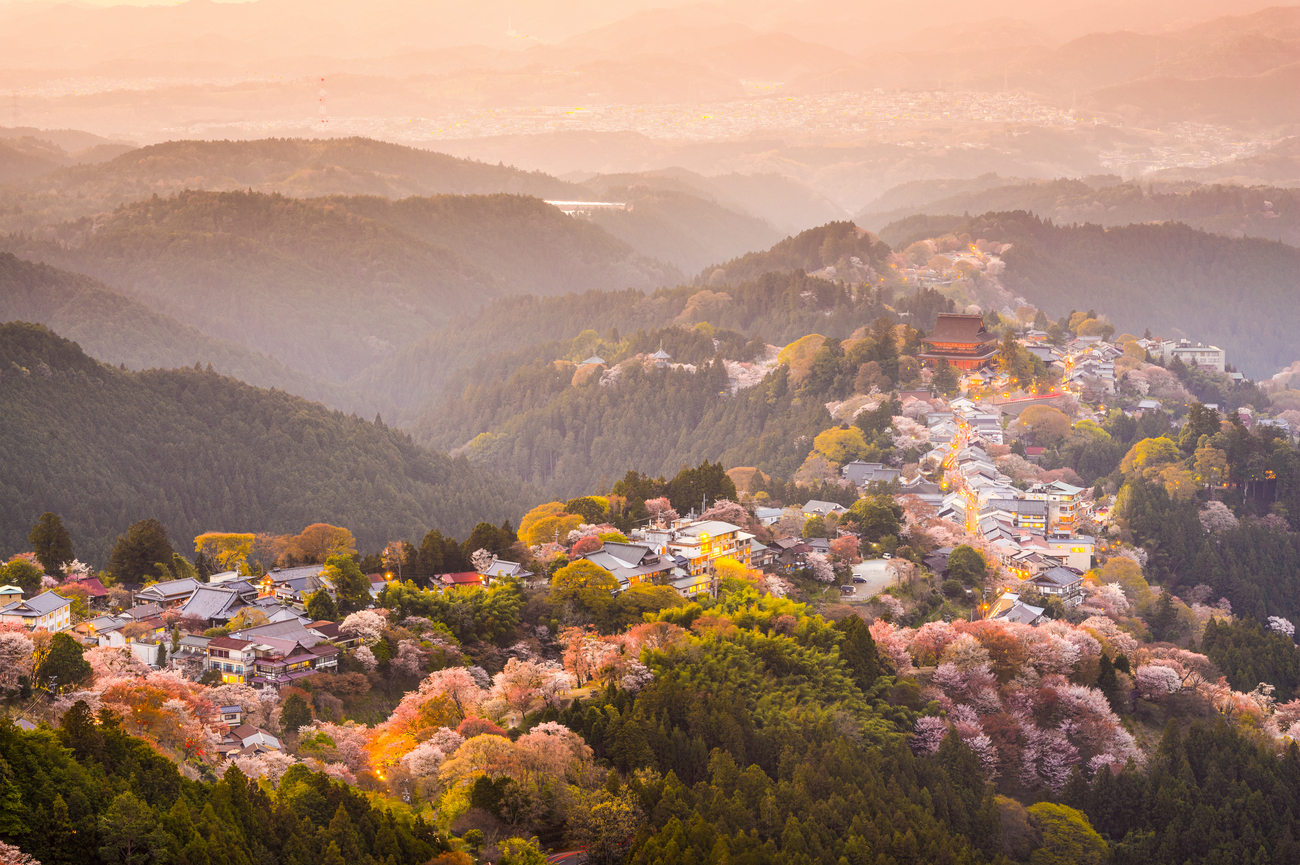
- Soni Highland: Located in the eastern edge of Nara Prefecture, this highland plateau is best known for its golden pampas grass (susuki) swaying in the breeze from late summer to autumn.
Exclusive Workshops &
Immersive Experiences in Nara
- Asuka Strawberry Farm: Located in the Asuka region, this boutique farm features an elevated platform where strawberries are grown to avoid bending and hand-picked. Here, they’ll hand you scissors and an option between a box or a plastic bag to put your strawberries in. The strawberries are sweet and come in different sizes.
- Mt. Yoshino Ropeway Ride: One of Japan’s oldest ropeways, this scenic ride features picturesque views of the Yoshino mountain range, especially during sakura season.
- Handmade Japanese Paper Experience in Yoshino: Yoshino is famous for its traditional washi paper, used in everything from sliding doors to fine calligraphy. Guided by a local artisan this workshop will teach you how to craft your own paper from mulberry pulp, learn how the fibres are formed, pressed, and dried.
- Japanese Calligraphy Lessons: Learn the art of shodo with a master calligrapher in a quiet studio near central Nara. Here, you'll use a brush, inkstone, and rice paper to write characters with precision.
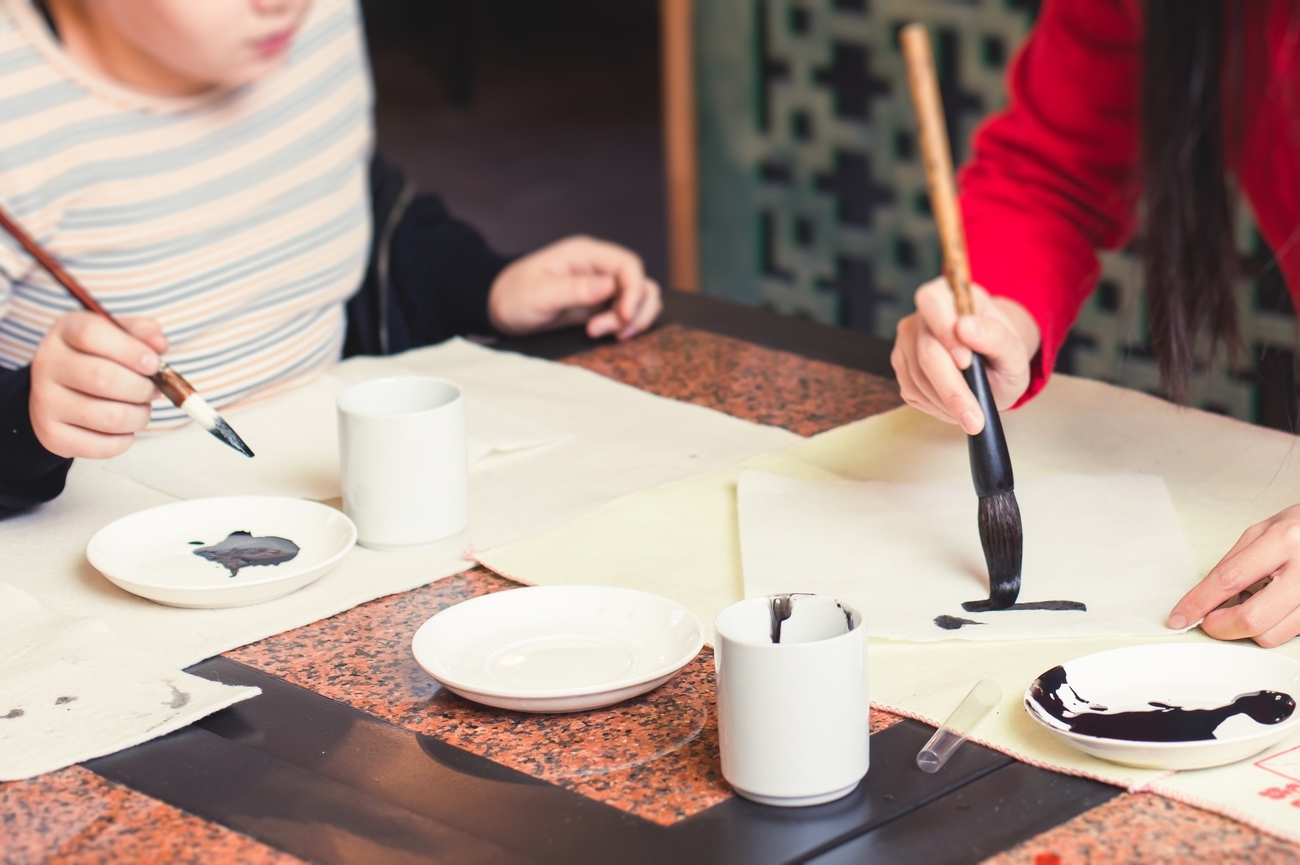
- Tea Ceremony and Tea Utensil Making: Participate in an authentic tea ceremony (Participate in an authentic tea ceremony (chanoyu) followed) followed by a rare opportunity of creating your own tea whisks and tea scoops.
Other Things to Do in Nara
- Nara Kingyo Museum: This beautifully designed goldfish art museum in Nara’s Mochiidono district features dreamlike displays. Here, you’ll see aquariums, projection mapping, and Japanese aesthetics. The kimono-inspired installations with live goldfish are especially Instagrammable
- Tanize Suspension Bridge: Located in Totsukawa, this 297 meters long and 54 meters high pedestrian bridge is one of the oldest and longest extant wire suspension bridges in Japan.
- Manyo Botanical Gardens: Also known as the Kasuga Taisha Garden, is a botanical garden located next to the Kasuga Shrine. The garden is inspired by Japan’s oldest poetry anthology, Man'yōshū. With over 300 species of plants mentioned in the poems.
- Nara Prefectural Museum of Art: Located near Nara Park, this modern museum showcases both classical Japanese art and contemporary exhibitions. It’s a peaceful midday break, especially on rainy days.
- Deer Antler Cutting Ceremony: Held every October, this annual tradition dates back from 1672. The deer’s antlers are cut during their mating season as the male deers tend to be aggressive. This is done in order to prevent accidents as deers would often bow for crackers in Nara Park. For those who are worried if this tradition hurts the deer, the cutting of deer antlers is comparable to us cutting our fingernails.
Things to Do with Kids in Nara
- Nara Park: This iconic park is a child’s dream, with its wide-open lawns, shady trees, and hundreds of tame deer that bow for crackers. Feeding the deer is an unforgettable experience, but kids should be supervised, as the deers can be assertive. Make sure to keep the crackers wrapped up or hidden in your bag to prevent the deer from swarming you and your child.
- Naramachi Karakuri Toy Museum: For a nice screen time break for kids, head to the Naramachi Karakuri Toy Museum. This small, hands-on museum in the Naramachi district showcases traditional Japanese mechanical toys, many of which kids can touch and play with.
- Mount Wakakusa Hiking: The short, grassy ascent to the summit of Mount Wakakusa is perfect for families. It takes less than 45 minutes at a child-friendly pace and offers one of the best views over Nara city.
- Ikoma Sanjo Amusement Park: This retro-style amusement park features classic rides, mountaintop views, and a charmingly old-fashioned atmosphere. The cable car ride up is part of the adventure.
Where to Eat in Nara
- Wa Yamamura: The first restaurant in Nara to receive three Michelin stars. Although it currently holds one star, it has remained consistently listed in the Michelin Guide for consecutive years. Owner-chef Nobuharu Yamamura serves visually striking, well-balanced dishes that are both balance and flavourful.
- Oryori Hanagaki: This two-star Michelin rated restaurant only welcomes one party per service, making the experience exclusive and personal. Chef Toshihiko Furuta pays particular attention to the ingredients, tableware, and cooking process making every dish taste beyond words even to an untrained taste buds.
- Nara Nikon: A two-star Michelin rated restaurant, located in a beautifully restored traditional house, Nara Nikon offers a modern kaiseki course that changes monthly, using seasonal ingredients and local produce. The store's name is a Zen word that means “cherishing the present moment.”
- Tsukumo: Another two-star rated Michelin restaurant, Tsukumo’s set menus highlight Nara’s vegetables, rice, and tofu traditions. Regarded as the Best kaiseki restaurant in Nara.
- Kitsune: The head chef, Shusaku Toba, meticulously crafts each detail to provide an experience that goes beyond just "delicious." Here, you can enjoy sukiyaki courses prepared right in front of you.
- TERRACE Wakakusayama: The main dining restaurant at Ando Hotel, featuring a well balanced menu that highlights seasonal ingredients sourced from Nara. Their must-try dish is the popular Yamato beef shabu-shabu served in a rich sea urchin broth, locals describe it as a luxurious and flavourful experience.
- Shunsai Hiyori: Known for its use of Yamato yasai, traditional vegetables native to Nara, it’s grown exclusively for the restaurant under contract farming. The restaurant features local specialties such as Yamatogyu beef, Yamatonikudori chicken, and wild Iwana trout from Nara’s mountain streams. It’s a local favourite for its dedication to regional produce and value.
- Kamameshi Shizuka: This beloved restaurant has been serving its signature kamameshi (iron pot rice dishes) for over 60 years, with each pot is still cooked to order over an open flame, preserving its traditional flavour. Their must-try dish is the “Nara’s Seven Flavor Kamameshi,” an iron pot rice dish topped with shrimp, crab, sea eel, and young chicken. It’s a must try if you want to taste Nara’s culinary heritage.
- Wakakusa Curry: For something casual yet upscaled, Wakakusa Curry puts a gourmet twist on Japanese curry rice, using locally sourced beef, root vegetables, and handmade pickles. There are about 20 seats in the restaurant so waiting time might be possible.
- Edogawa - Naramachi: An unagi (eel) restaurant with tatami seating and garden views. Their signature grilled eel over rice is lacquered in a sweet-savory glaze, cooked over charcoal to smoky perfection. Ideal for lunch after visiting nearby gardens or temples.
- Gâteau des Bois is a refined patisserie near Saidaiji Station, known for award-winning cakes by chef Mr. Hayashi. Its elegant, old-Europe atmosphere and beautifully presented confections make it ideal for a sweet treat or takeaway. The quieter Laboratoire branch near Amagatsuji Station offers the same quality in a more relaxed setting.
- Tengyokudo Nara: Known for its Japanese sweets (wagashi), this confectionery is perfect for a light afternoon snack. Try their seasonal mochi or matcha jelly served with a pot of tea.
- Nakatanidou Mochi Shop: You may have seen their viral mochi-pounding videos, but this street-front shop also serves some of the softest, freshest yomogi mochi in Japan. It’s a quick, delightful snack while walking through Naramachi.
Where to Stay in Nara
- Fufu Nara: This 5-star hotel located in the forest near Kasuga Taisha offers a luxury, ryokan-style experience with modern touches. Each suite features a private open-air bath, personal and customised spa treatments, and interiors inspired by local craftsmanship.
- JW Marriott Hotel Nara: This 5-star hotel located near Nara Station is ideal for travellers who appreciate world-class amenities and spacious rooms. The hotel offers fine dining, a serene spa, and concierge service fluent in multiple languages.
- Shisui Luxury Collection Hotel: This 5-star hotel occupying a beautifully restored historical villa near Nara Park combines traditional Japanese architecture with Marriott’s signature service. It’s intimate, quiet, and filled with curated art and antiques.
- Kotonoyado Musashino: This 4-star hotel is a luxury ryokan located along the base of Mount Wakakusa. Musashino features tatami-mat rooms, kaiseki dinners, and views over Nara Park where deer roam freely.
- Nara Hotel: This 4-star hotel opened in 1909 and favoured by royalty and dignitaries is affectionately known as the “guesthouse of the emperors.” The hotel offers heritage rooms with antique furniture and quality service.
- Noborioji Hotel Nara: This 4-star hotel Acclaimed by the Michelin Guide and a member of the Small Luxury Hotels of the World group feels like a private club, with its minimalist elegance design and poetic views of Kōfuku-ji Temple.
- Nipponia Hotel Naramachi: This 3-star hotel is part of the NIPPONIA group that restores traditional buildings into boutique accomodations. The hotel, with just eight rooms in a restored traditional house, is a collaboration with the Toyosawa Sake Brewery, dubbed as the world’s first sake theme hotel.
- Okuyama Nara Kasuga Tsukihitei: This 3-star hotel located within the sacred Kasugayama forest has just a few rooms and offers a secluded, spiritual experience. Kaiseki meals are prepared with seasonal mountain ingredients and served in-room.
- Daiwa Roynet Hotel Nara: A more accessible option that still delivers excellent comfort and location. Walking distance to Nara Station and many major sites, this hotel is ideal for short stays or travellers combining business with leisure.
Best Time to Visit Nara
Spring (March - April): This is Nara at its most poetic. In spring, cherry blossoms bloom across Nara Park, Mount Yoshino transforms into a layered canvas of pink, and traditional festivals like Omizutori signal spiritual renewal.
Pack light layers, a mid-weight jacket, and comfortable shoes for temple walks and gentle hikes. A small umbrella or parasol is also handy for occasional spring showers or sun protection.
Autumn (October - November): A golden hush falls over Nara in autumn. The deer shed their velvet antlers, leaves blaze red and amber across Kasugayama Forest and temple gardens, and the air is crisp with anticipation.
Pack Warm layers, including a sweater or light coat for cool evenings. Opt for boots or sturdy footwear to enjoy forest trails and mountain lookouts.
Festivals in Nara
- Omizutori: Held annually in March at Tōdai-ji’s Nigatsu-dō Hall, this is one of Japan’s oldest Buddhist rituals. Priests carry giant flaming torches across the temple balcony to purify the crowds below and signal the arrival of spring. Best to arrive early to secure a spot near the base of the hall.
- Wakakusa Yamayaki: Every January, Mount Wakakusa is set on fire in a dramatic hillside fire festival, a tradition believed to purge evil spirits and usher in the new year. The festival includes fireworks, food stalls, and views of the fiery hill.
- Kasuga Wakamiya On-Matsuri: A winter festival celebrated from December 15-18, featuring processions in Heian, Nara, and Kamakura-era costumes, traditional dances, and music performances. It’s a cultural time capsule brought to life.
- Nara Tokae: In early August, thousands of lanterns are lit throughout Nara Park, casting a soft, magical glow over its ponds, temples, and open lawns, almost like a magical, disney experience. It runs from August 5-14.
- Uneme Festival: Held in September at Sarusawa Pond, this festival features a floating lantern boat procession and courtly music in memory of a legendary court lady (uneme in Japanese) who fell in love with an Emperor. After falling out of favour with him and in a deep sorrow, she drowned herself in Sarusawa Pond. Despite this bittersweet premise, the culmination of the festival is a brilliant sight.
- Tanzan Shrine Kemari Festival: A spring and autumn event where players in Heian-period attire demonstrate kemari, a courtly ball game that’s part sport, part art. The goal is to keep the ball aloft with poise and elegance.
- Yamato Koriyama Castle Festival: Held in early April, this family-friendly festival celebrates local history with parades, performances, and cherry blossoms in full bloom.
Your Dream Nara Journey Awaits
Nara is a city that invites you to listen, in the hush of its moss-lined paths, the flicker of lantern light at dusk, or the bow of a sacred deer, you'll find a Japan that moves at the pace of memory. Whether you came to witness the cherry blossoms of Mount Yoshino, trace the legacy of emperors, or simply bow at the sacred deers, Nara offers something rare in today’s world, space to breathe, reflect, and reconnect.
Let Revigorate craft a tailor-made journey for you that goes far beyond the brochure, with private access, immersive encounters, and the kind of thoughtful touches that turn travel into transformation and a beautiful memory you constantly relive. Contact us today or give us a call at (+1 800 672 0517 | +351 289 009 580 | +44 808 189 0647) and let’s start planning your dream Nara journey today.
Our offices:
